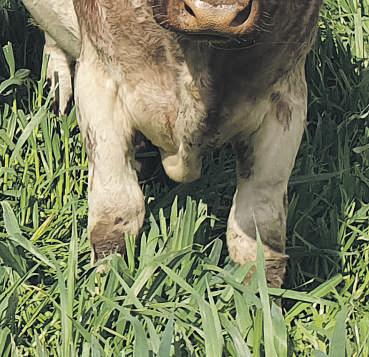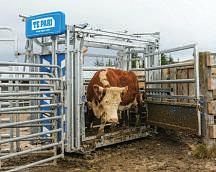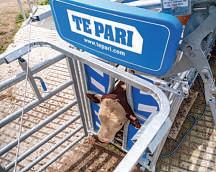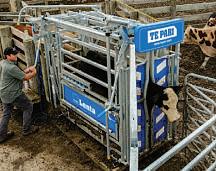










The latest Federated Farmers Confidence Survey shows a small shift up from a very low base but the industry is working to boost farmers’ outlook. P10-11
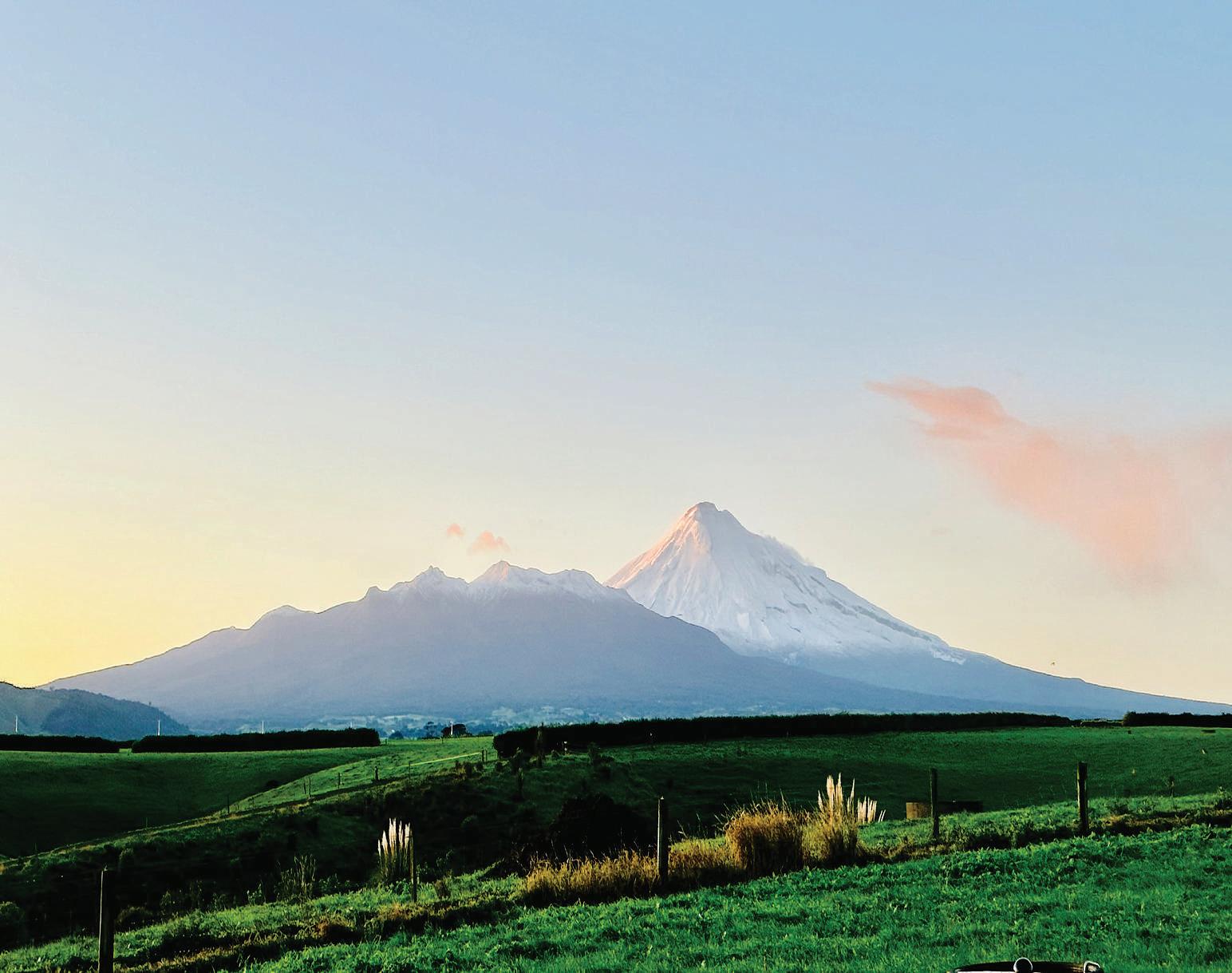
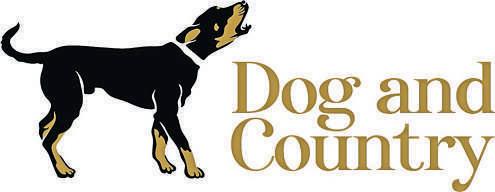
•Activewear
•Work shirts, shorts &jerseys
•Canvas wool jackets &vests
•Comprehensive collectionoflogan whistles
•Leatheraccessories
•Dog collars
•Dog beds
•Thermo flasks and lots more!
www.dogandcountry.co.nz




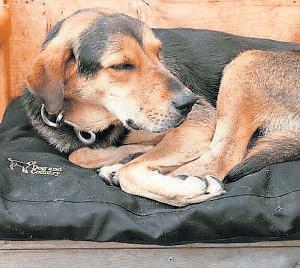




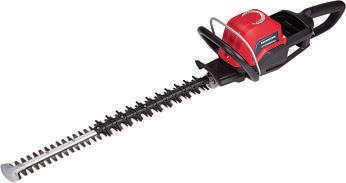



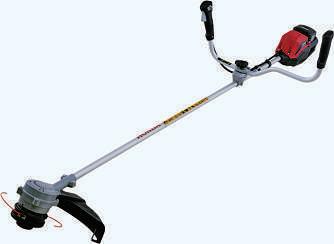


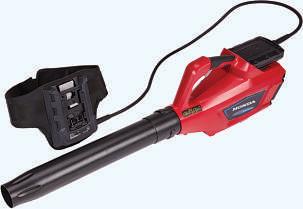









Stuff owner and publisher Sinead Boucher was at Central Districts Field Days last month to connect with farmers and see what the agricultural industry has to offer.
It takes months of planning, weeks of site preparation and days and nights of complicated, logistical setting-up before the gates open. When they do, bets are on as to whether the 8-year-olds or the politicians will be first into the big diggers and whizzing around the miniature racetrack.
This year – the 31st year of Central Districts Field Days at Manfeild, Feilding – the strong contingent of politicians seemed to win out. There was the former head of Federated Farmers, now ACT MP, Andrew Hoggard in a pale pink shirt, checking out the tractors. Prime Minister Christopher Luxon, waving a tiny black and white flag as he swept around the racetrack on a lawnmower.
I understood their excitement entirely – while less likely to jump into farm machinery these days, I was reminded at CDFD of my years as a young journalist in The Press’ North Canterbury branch office. The thrill of the A&P shows. The joys of a rural community. Reporting on Rangiora under the watchful eye of renowned rural journalist and deer farmer Robyn Bristow
For the daughter of Irish immigrants to Christchurch central, this, my first real job, was an education in what drives New Zealand. Yes, farming is fundamental to the country’s prosperity, and the many families I met during this period were indeed big business people, scientists and innovators.
But more than this, they were the glue of the region – they loved the land and
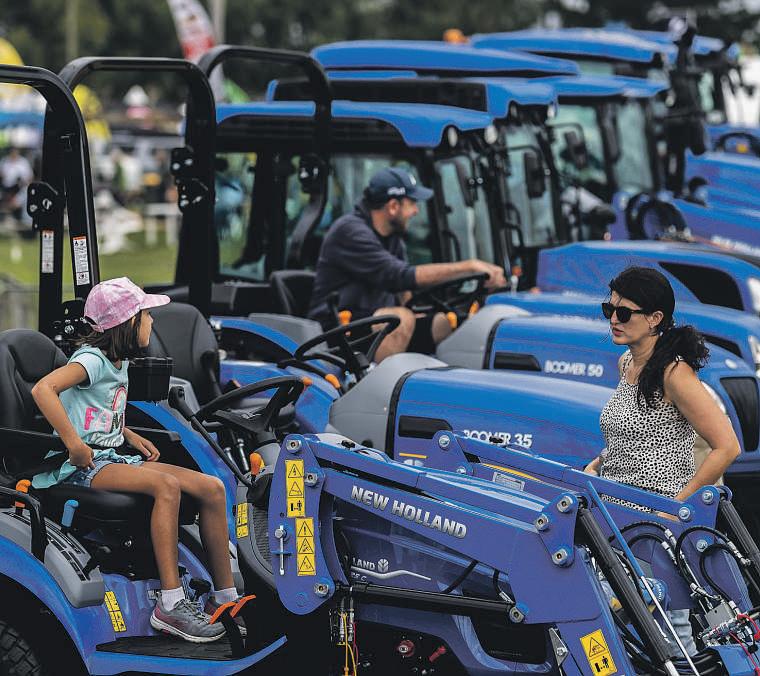

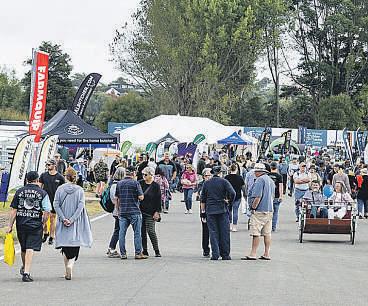
their animals, would work day and night on their farms and businesses, then spend their “spare time” caring for their families, schools, communities and sports clubs.
They had great stories, too – but often hated putting themselves forward to tell them. Hard work, resilience, innovation and commitment to their colleagues and neighbours – I learned as much about what makes a great business and community from those years as I did about soil and pasture management.
Despite the challenges facing the sector at present – the global economy, inflation, supply-chain shocks and sustainability concerns – the mood at CDFD this year was quietly optimistic.
Stuff is proud that our Events team, through CDFD and its 27,000 visitors, puts millions of dollars directly into the Manawatū economy each year and additional sales revenue through the 500 exhibitors on site.
Additionally, thousands of leads are generated at the event, which will turn into products sold and revenue generated for the sector over the next 12 months.
We, too, are optimistic about the sector – last year we relaunched this newspaper, NZ Farmer, New Zealand’s largest farming publication, delivering it to more than 91,000 rural mailboxes, reaching every farmer in Aotearoa, every month.
As a large employer in the regions, we hear directly from our hundreds of staff in small towns about the challenges their communities face. Farmers, much like media organisations, have experimented, adapted and improved their resilience for the future. The number of tech stands at CDFD – alongside the brews and food, and traditional agricultural products – shows where the sector is headed.
Smart technology, automation, drones and big data will deliver our future agri success, but only because of the smart, committed Kiwis in rural communities who drive them. Yes, politicians make the photo ops and hold the media conferences at rural events like CDFD, but it is not only their stories that we need to tell. ■ Sinead Boucher is the owner and publisher of Stuff Group.


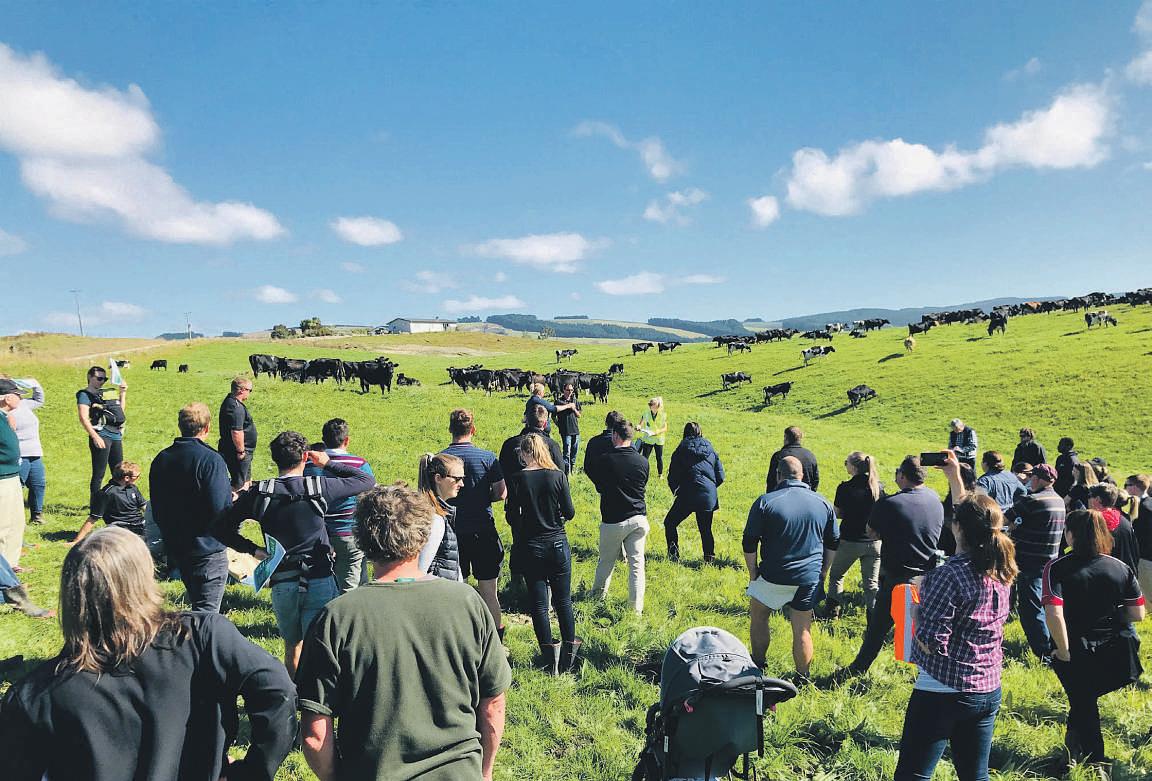
Government to address are:
Ithink the entire agricultural industry gasped when Federated Farmers’ Farm Confidence survey results came out last year showing confidence in the sector had hit an historic low.
The mid-season survey carried out in January shows there has been a small lift in confidence as 55% of respondents now consider current economic conditions to be bad – 25 points better than the June 2023 survey. It’s a small gain but a gain nonetheless.
And I would be willing to bet the new coalition Government brought a beacon of hope for farmers – particularly around regulations and compliance costs and with the announcement it would be reviewing some targets and rules and doing away with others.
So far, the Government has begun delivering with the abolition of the ute tax and reviewing methane targets, as well as rolling back the more controversial policies, rules and regulations imposed on farmers byLabour.
According to the survey results, the three highest priorities farmers want the


■ Fiscal policy: As government spending rose rapidly under the previous government, the fiscal deficit is large, and debt has ballooned. The new Government promises to contain growth in government spending and taxes, and to reduce debt. This would be welcomed by many farmers.
■ Economy and business environment:
The economy is facing big challenges, with growth stumbling and inflation remaining too high The Government has promised to deliver policies and programmes to boost productivity and competitiveness and many farmers would welcome this too.
■ Regulation and compliance costs: These have been a consistently high priority for farmers in most previous farm confidence surveys. Again, the Government has promised to reduce the quantity and improve the quality of regulations. Farmers will want to see action on this. Sector leaders are confident of the outlook becoming more positive for New Zealand’s agricultural industry and are working on bringing smiles back to the faces of farmers. But they are not the only ones doing it tough. The cost of living is still high with




many struggling to pay bills and feed their families.
According to the Trading Economics global macro models and analysts, consumer confidence in New Zealand on the whole increased in the first quarter of 2024 from the fourth quarter of 2023.
Albeit small, a shift in confidence in the farming sector, our greatest export earner, is surely a good thing and we can let out a long breath There is only one way to go from here – up. ■

Albeit small, a shift in confidence in the farming sector, our greatest export earner, is surely a good thing.






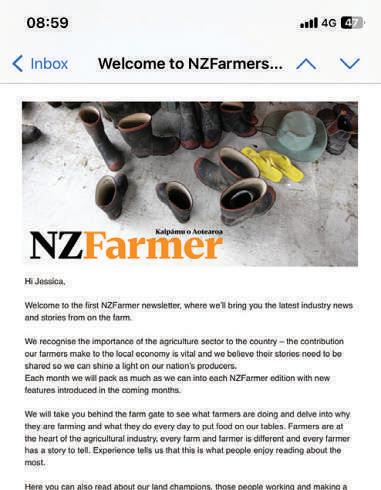
Iread the article regarding spare land for forestry. Nowhere in that article did it mention plans or resources for firefighting. Being a volunteer firefighter (my own opinion), I can see down the track with all these huge blocks of trees, that at some stage we are going to have a disaster.
It should be mandatory for a plan and resources put in place at the time of planting. The old New Zealand Forest Service had trained personnel and equipment at every forest New plantations should have the same. ■
Andrew Annand, Mid-CanterburyIt is so good to see this contribution from eminent soil and grassland scientist Doug Edmeades. While the emphasis is on soil fertility, some pastures may have had all the right fertiliser but still “run out” waiting for some salesman with a magic, and usually expensive, fix.
My experience has included extensive large-scale land development in generally dryland areas. This involved oversowing and topdressing tussock, often including brown top or chewings fescue grassland. Once when the area shown on the plan was much smaller, the pilot put all the fertiliser supplied on the one block (no N), almost doubling the rate per hectare. The clover grew like a green-feed crop. Now a recent trial has reminded us about pasture plant management. Grazing
management must be added into the mix. Dairy farmers mostly get it right Graze off the pasture quickly in not more than three or four days, then spell.
The more intensive farms can do this easier than extensive grazing spreads but the principle remains the same. Constant defoliation depletes root reserves. Top growth and sunlight enables roots to be restored.
An intended permanent pasture, stated “as run out” indicates some overall error in total pasture management Such as: Soil fertility, species, grazing (vegetation depletion) Yes, drought or flooding are intermittent issues to contend with and require variable techniques to recover from but do not change the principles. ■
Raymond Ward-Smith, TimaruIf you take the community out of the Northland Rescue Helicopter, you will take the rescue chopper out of the community.
And that’s a very real concern if the Northland Regional Council (NRC) gets its way and dumps the Emergency Services Fund (ESF) as part of its long-term plan process.
That will remove $535,000 of crucial funding from our lifesaving Northland Rescue Helicopter Service and a total of $1.11 million when you add in the other five lifesaving services that rely on this fund to keep Northlanders and visitors to our region safe.
The dropping of this funding will see the NRC councillors and staff recommending the cutting of these essential services to our region with “blood on their hands” – not a pleasant position to be in. The community they represent depends on them to provide these services, something they have done for years.
Weeks before people even had a fair chance to have their say on the issue, the NRC chairperson (a farmer) made comments about ditching the ESF. I imagine plenty of NRC staff, councillors, their friends and family members have
needed Northland’s emergency services in times of accidents, trauma and illness – and will in future.
The local government submission process is only worthwhile if the voices of the people are truly heard and weighed up. The NRC has an economic and social accountability role within our communities and it needs to listen and deliver on that.
The NRC is weakly defending its proposal by saying it must focus on its core role.
Well, part of that core role is community wellbeing, resilience and emergency preparedness. Civil Defence (which sits under the NRC and shares the same office), relies heavily on first responders in times of crisis to pick up the pieces. It would be hard to call on those essential lifesaving services if they no longer have the funds to operate 24/7 when we need them most.
Surely, human lives are worthy of a NRC rate payment of just $1 per household per month. I encourage all New Zealanders to send an email to submissions@nrc.govt. nz before the April 19 submission deadline opposing the NRC’s plans to put lives at risk. Enough said. ■


The country’s waterways are not greatly affected by the use of fertiliser on farms when certain factors aretaken into account.By soil scientist Doug Edmeades
If you casually flicked through most farming newspapers, it is likely that you would get the message from the advertisements and advertorial material that when it comes to improving water quality, the big lever to pull on is fertiliser – change your fertiliser policy, fertiliser management or the type of fertiliser you use and all will be well. I wonder?
There are four contaminants that we need to consider: Nitrate N, particulate P (that is the P attached to soil particles), sediments and pathogen (nasty bugs). How do we stop them, or at least reduce them, from getting into water bodies? To answer this question, we need to understand the mechanism by which these contaminants are transported from the land to water.
About 95% of the nitrate getting into waterways comes from the urine patch. When animals urinate, they apply large amounts of nitrogen (N) – in the case of cows, it can be equivalent to 500 to 1000 kg N/ha. For sheep, the numbers are about halved. These amounts are more than the soil/pasture can cope with and hence microsites of soil with high nitrate concentrations are generated only to be flushed out – leached – when rainfall is excessive.
Thus, the mitigation options available to reduce nitrate leaching include reducing the number of urination events per unit of grazed area, especially in the late autumnwinter period when drainage is excessive. A related option is to put cows onto feedpads or into herd-homes over the autumn/ winter drainage period. Obviously, this will only be effective if the urine is collected and returned to the soil at a rate




AfertilisertruckinactiononthebanksoftheRangitataRiver
that the soil can cope with Another mitigation option, which is currently being investigated is to find ways of reducing the concentration of N in the urine by altering the diet – chicory is the focus here.
The effluent block, if not managed correctly, can become like a giant urine patch, if it is too small for the size of the operation – i.e. the number of cows. Regular soil testing of the effluent block and applying the Overseer Model are convenient management tools to prevent overloading the effluent block with N. And now to the tricky bit. What is the effect of reducing fertiliser N inputs on
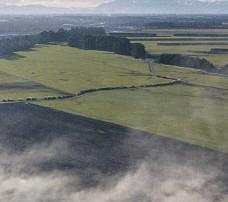


mitigating N leaching from clover-based pasture, as is intended with the N-cap. Surely this must reduce N leaching? The answer is, not necessarily. There is a strong negative interaction between fertiliser N and the clover content of pastures. This arises because clover is a legume and ‘fixes’ its own N from the atmosphere. Grass growth depends the soil N status. The rule of thumb is that the amount clover N fixed and returned to the soil via the animal dung and urine, decreases by about 3kg N/ha for every 10kg/ha of bag N applied. When heaps
of fertiliser N are applied, grasses outcompete the clover and the pastures become grass dominant. This probably explains why many ‘high’ producing dairy pastures, where excessive fertiliser N is applied, contain little clover.
The reverse also applies. If fertiliser N inputs are reduced, pastures become more clover dominant and because clover has a higher N content than grasses, the animal N intake, and hence the urinary N concentration, is likely to increase. The net result could mean more leaching of N.
What about changing the form of the fertiliser N being applied? Both co-ops have recently introduced what they claim to be more efficient urea-based N products – Sustain and N -Protect. Recent research indicates that these products are not as effective as claimed.
The other major contaminant is phosphorus (P). Unlike N, it gets into waterways primarily through surface runoff from sloping land. The mitigation options include appropriately placed dams – these are typically not fenced – and fenced wetlands. All of these interventions are designed to slow the fl of water and hence trap soil particles containing P (Particulate P) Note that the amount of P in the runoff is, in part, determined by the P status of the soil (Olsen P), so farming at the optimal Olsen P, and not above it, is a practical mitigation strategy.
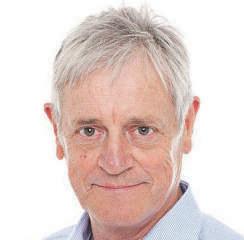
Soil scientist Doug Edmeades.
Some fertiliser P (water soluble is transported across the soil surface, dissolved in the runoff water. The amount of P transported in this manner depends on the solubility of the P in the fertiliser – the more soluble the P fertiliser the more runoff P. However, this effect only lasts for about 3-4 months and thereafter the amount of P in the runoff is the same, irrespective of the solubility of the fertiliser.
Conclusion? Once the mechanisms of nutrient loss are understood, it becomes clear that fertiliser per se has only a minor effect in terms of managing the water quality problem. ■
Economist Gordon Stuart from Financial Services company Chaperon, says to meet the Government’s objective of doubling exports, businesses will need to take risks.
The Government wants to double exports in the next decade. That is an average growth rate of 10% per year or a compound growth rate of 7.2%.
The Reserve Bank’s website reports export growth averaging 5.2% since 1988 and the trend has been slower in recent times
Large sectors such as dairying are now facing environmental constraints, that even if eased under this Government, will still be a constraint on growth.
Trade policy, improved free trade agreements and India are front and centre silver bullets that may help. Let’s say the demand appears. The challenge is to supply or meet it. The “good old days” are gone.
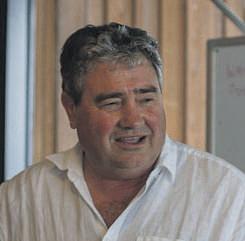
expansion at Port of Tauranga, our largest export port. However, we are not going to double exports without businesses taking and managing risk. At Chaperon – helping business navigate banking – finding access to credit is critical but also management of risks around performance so plans are stuck to, and you do not end up in “bad” bank, or if you do, you have a way out.
Challenge 1: Building new skillsets to restore business and farm profitability
We know from the Crown tax take both businesses and farmers are doing it tough.
Economist Gordon StuartNew Zealand is facing lower revenues and high operating expenses. Think inflation, fertiliser, feed, transport and labour costs, and that is all before increased debt servicing costs.
the ability to pivot quickly, plus capital spending for more mechanisation and technology. We need to adapt and go forward. The finger can only be pointed at government for so long.
Challenge 2: Financial system and bank risk settings need change
Doubling export growth will require capital, equity and debt. Profitability is a prerequisite to that flowing. Businesses with poor profitability struggle to repay debt. Projects that don’t stack up don’t get funded by banks or investors.
Federated Farmers appear to have achieved a small win with the Primary Production Select Committee starting an investigation into rural banking. The scope will be key.
Challenge 3: Business acumen
Developing export markets is a painstaking business. It takes real skill. Each country is different. Even Australia has been a graveyard for many established New Zealand businesses – think Fletcher Building or The Warehouse.
Tough times bring leadership changes and different thinking.
Challenge 4: Managing risk
We now face a world of constraint that requires new skillsets There is lots that will need to be done For a start you need decent infrastructure to transport goods from A to B and get it to market. Roads from farm to factory, inter-island ferries that work, and most importantly capacity
We need a stronger focus on productivity. Productivity in New Zealand is negative but 3.2% in the US.
Better government policy is essential. However the competencies we require to lift profitability are those vital in any start-up business – agility, innovation, and
The latest Commerce Commission study misses the mark as it only focused on personal banking, despite more than half of the bank’s profitability coming from business and rural. Mortgages now comprise more than 63% of total bank lending. For New Zealand to grow its economic pie, businesses and farmers need access to equity and debt markets We are in a world where we need to take more real business risk to make real money.
You will not double exports without taking risk on board. Risks range from international demand, commodity prices, disease, product quality, or performance, to political or one country risk, or climate, insurance, or social risks before we even get to interest rate and exchange rates or export shipping route delays.Volatility is now almost certain.
We need to embrace these risks openly and work on solutions
The bottom line
Doubling export growth appears an aspirational target. Delivering on it will require lots of internal changes we have yet to focus on, rather than the talk feast on market access, free trade agreements and India. ■
AgResearch chief scientist Axel Heiser says the economic toll of FE on the New Zealand agricultural sector is estimated to be $332 million annually.
Facial eczema (FE) in cattle and sheep represents a long-standing challenge for New Zealand's agricultural sector, undermining the health and productivity of livestock.
It naturally also imposes significant economic and emotional burdens on farmers.
The recent announcement of an $8.3 million commitment by the Ministry for Primary Industries through the Sustainable Food and Fibre Futures Fund, alongside a $9 million contribution from Beef + Lamb New Zealand and additional funding from other industry partners – totalling $20.75 million over a seven-year period –marks a pivotal moment in the fight against this disease.
This collective effort, encapsulated in the Eliminating Facial Eczema Impacts (EFEI) programme, promises to address the critical knowledge gaps and management challenges that have hampered progress for more than a century.
FE, caused by the toxin-producing fungus Pseudopithomyces chartarum, leads to liver damage, reduced animal productivity, and severe animal welfare issues. Traditionally, management strategies have included the application of fungicides and zinc supplementation, methods that are not sustainable due to environmental and health concerns.
While selective breeding for resistance presents a promising avenue, it requires a long-term commitment to realise its potential as a viable solution. The economic toll of FE on the New Zealand agricultural sector is profound, with estimated impacts
reaching $332 million annually due to reduced livestock growth rates and stock losses during severe outbreaks.
Despite decades of concerted research efforts, our understanding of FE remains fragmented, particularly in areas critical for its control and eventual eradication.
The challenge of detecting the fungus Pseudopithomyces chartarum in pasture is one of these critical knowledge gaps in our fight against FE. The accurate measurement of spore counts in pasture, a crucial indicator of FE risk, is fraught with difficulties. Current methods may not accurately reflect the true risk of FE to livestock because not all spores contain the toxin sporidesmin, which is responsible for the disease.
This discrepancy means that even with high spore counts, the actual risk of toxicity could be over- or underestimated, depending on the proportion of spores carrying sporidesmin.
This issue complicates the development of risk management strategies for farmers, who rely on spore counts as a key metric for deciding when to implement disease mitigation practices such as moving animals to safer pastures or beginning zinc treatment protocols.
Understanding the factors that influence sporidesmin production by Pseudopithomyces chartarum, including environmental conditions, fungal genetics, and interactions with the host plant, is essential for developing more accurate predictors of FE risk.
Research into these areas could lead to the development of diagnostic tools that not only count spores but also measure the
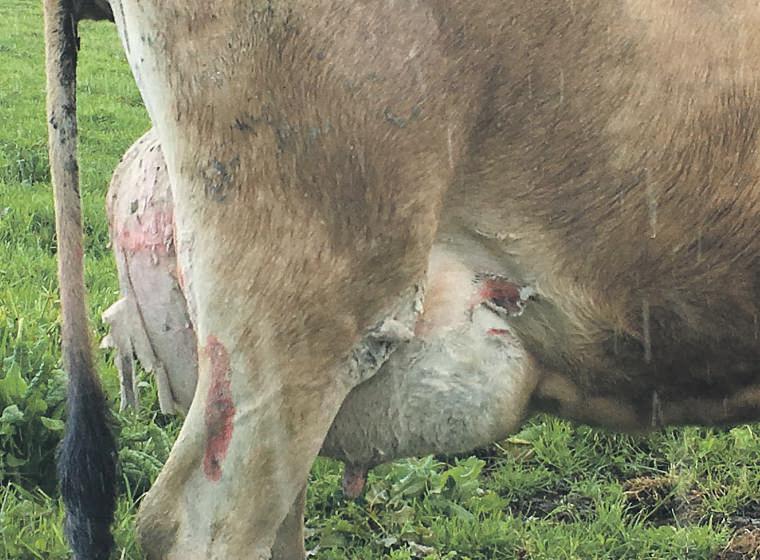
concentration of sporidesmi or identify spore variants more likely to produce the toxin. Such tools would provide farmers with the information needed to make informed decisions about protecting their livestock from this debilitating disease. The need for more effective diagnostic tools stands as a primary concern. Current approaches often fail to detect the disease in its early stages, particularly when animals are asymptomatic or presenting signs that are not easily recognised, leading to underestimations of prevalence and severity.

resistance are not well defined. hinders the ability to put place targeted breeding programmes that could mitigate the impact of FE over the long term.
We also know that sustainable management practices for FE are inadequately developed.
AgResearch chief scientist and animal health researcher Dr Axel Heiser says funding from the Government and Beef + Lamb New Zealand will be pivotol in the fight against the disease and bridging knowledge gaps
Another significant knowledge void is our depth of understanding of genetic resistance against FE. While there is awareness that some genetic lines in livestock exhibit greater resilience to the disease, the specific genetic markers associated with
The reliance on fungicides and zinc, while providing some level of disease control, raises concerns about environmental sustainability, animal health, and the potential for resistance development. These methods do not address the root causes of FE or offer long-term solutions
The EFEI programme represents a holistic and ambitious effort by government, industry and scientists to not just manage but eliminate the impacts of FE.
It gives me cause for optimism that together we may finally be able to turn the tide on this costly and debilitating livestock disease. ■
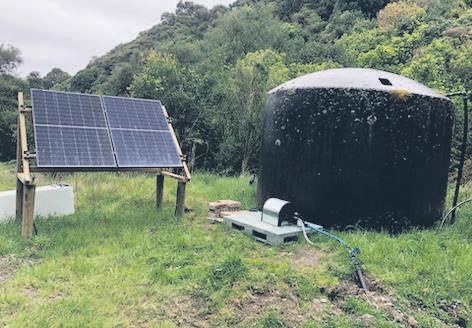

Beef + Lamb New Zealand has concerns about the recent proposal to make farm plans mandatory because of the compliance costs involved.
By Kate Acland.Over the past decade, thousands of farmers have been developing farm plans to help ensure the sustainability and profitability of their farm business.
These plans help farmers protect the health of soil, freshwater and biodiversity in balance with running a productive and profitable business
At our property in the mid-Canterbury foothills, my husband and I have developed our own farm plan. We farm at altitude and growvirtually nothing through winter. We rely heavily on winter crops to keep our ewes in good condition in the lead-up to lambing.
We’ve mapped our paddocks and the risk areas, plan our in-paddock grazing rotation around critical source risk and we choose paddocks based on soil type and risk of run-off
The plan continues to evolve and we’re starting to include biodiversity and the other positive on-farm environmental actions – so it becomes a whole farm environment plan. We’re pretty proud of the progress we’ve
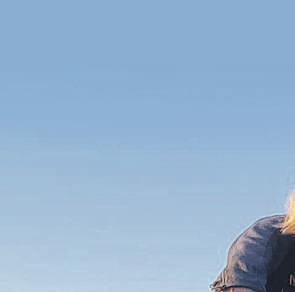
made at home. Two generations have collectively fenced more than 50 kilometres of waterways and we’ve planted hundreds of thousands of trees – native and others.
What we’re concerned about is the move to make farm plans mandatory for all.
And that’s for good reason
It’s not that we oppose environmental action – far from it. We’re committed to actions that will drive improvements, but not ones that add unnecessary cost and an administrative burden on an already stretched farming sector
Mandatory farm plans are a different proposition to good farm environmental planning
The current approach would require a consultant because of the level of detail to create the plans that everyone would need to go through.
It would also involve a two-step certification and audit process all paid for by the farmer and costing many thousands of dollars with no tangible benefit. Changes are needed to make farm planning sensible and workable.

Our hope is that the plan we’ve built ourselves will be the plan regulators need, that the audit frequency will be sensible and not add undue costs onto our business at a time when every dollar counts.
That’s because any money spent on unnecessary compliance is another dollar we can’t spend improving our properties.
Beef + Lamb New Zealand has supported farm environment plans for almost a decade. Having a written plan to manage the risks associated with the activities you do on your property makes good sense and, broadly speaking, most farmers will have a plan of some sort.
Every property, however, is unique and will have a different set of risks and challenges depending on the catchment, contour, soil type, activities and waterways. Some farming businesses will carry considerably more risk than others.
It makes sense that farm plans should be tailored to the needs of each individual property, but also the level of detail and
oversight required. The nature of audits and need for consultants should vary depending on the level of risk.
It also makes sense that mandatory farm plans aren’t necessary for some lowrisk farms – particularly the smaller and extensive sheep and beef properties that aren’t winter grazing nor running large mobs in small paddocks.
The risk is so small that the cost and administrative burden to put these properties into a regulatory framework cannot be justified.
We’re proud of our sector because we know our personal environmental journey is replicated on family farms all over the country. But it all costs money and it all takes time – so let’s make sure that any regulation treats those precious commodities carefully. ■
AndrewStewartisafourthgenerationsheepandbeeffarmer intheRangitīkeiregion.Heand wifeKyliealsorunRangitīkei FarmstayandTheMudderas successfuldiversificationson thefamilyfarm. Hewritesregular columnsfor NZFarmer
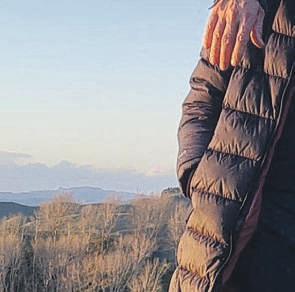
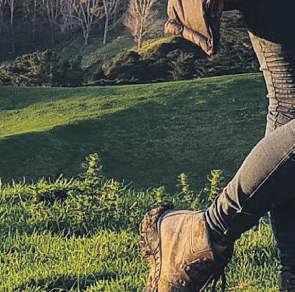





There will be many ratepayers around the country scratching their heads in disbelief at proposed increases by councils.


Countless councils have slammed rural ratepayers with huge increases as part of long-term plan proposals. This is despite many rural ratepayers only receiving a fraction of the total services provided by councils that urban dwellers enjoy.
The only tangible service that rural ratepayers rely on is the maintenance of the rural roading network, and many would argue that the state of this network is deteriorating.
So what is driving this massive increase in rates? It’s my understanding that rating notices are calculated on Capital Value figures provided to councils by Quotable Value Limited. The problem is many of those figures are grossly inflated and despite being calculated using “comparable sales data”, the reality is very different

way rural rates are calculated.

Take our farm, for example. Late in 2023, I received a notice of a rating valuation which showed our capital value was being increased by just over 26% from the 2020 figure. I lodged an objection with QV using actual sales data from two neighbouring farms that had sold within the past three years, which clearly showed the valuation was at least 20% too high. I am still waiting for a response to that objection.

These two factors have resulted in our regional rates being increased by an eyewatering 37% this year alone, with more increases proposed in the long-term plan. The district council increases are very similar and I know these figures are echoed in many other areas around the country.
The problem that I see is that every council has a total disconnect with their rural communities. They see some grossly inflated numbers produced by government agencies that have no real connection to real land values and think that they have found a “golden goose” from which to extract unlimited funds.
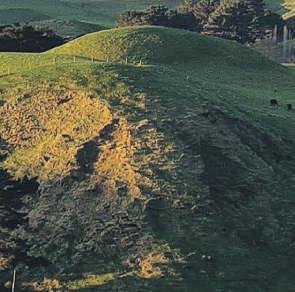
In the meantime, that new capital value for our farm has been used by both our local and regional councils to calculate our rates for the upcoming year and beyond. The regional council has also changed the formula for the

The reality is the farming sector is enduring one of the toughest economic climates in a generation and the ripple effect from that is starting to severely restrict local economies nationwide. I regularly hear of once prosperous businesses now facing closure because farmers have stopped spending.
So what are farmers to do about it? Firstly, and most importantly, councils need to be told that these proposals are unacceptable. All councils have a consultation period for longterm plans, so make sure yourvoice is heard.


And then maybe if ourvoices are not heard, it will be time to consider not paying rates instalments en masse as a way of sending a clear message to councils that this sort of behaviour is unacceptable.
There is an old saying in farming: “Don’t bite the hand that feeds you.” In this case, I feel like my whole arm is being chewed on and that’s not something I’m willing to stomach. ■
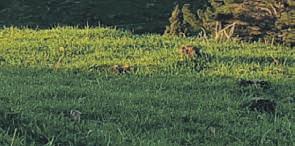
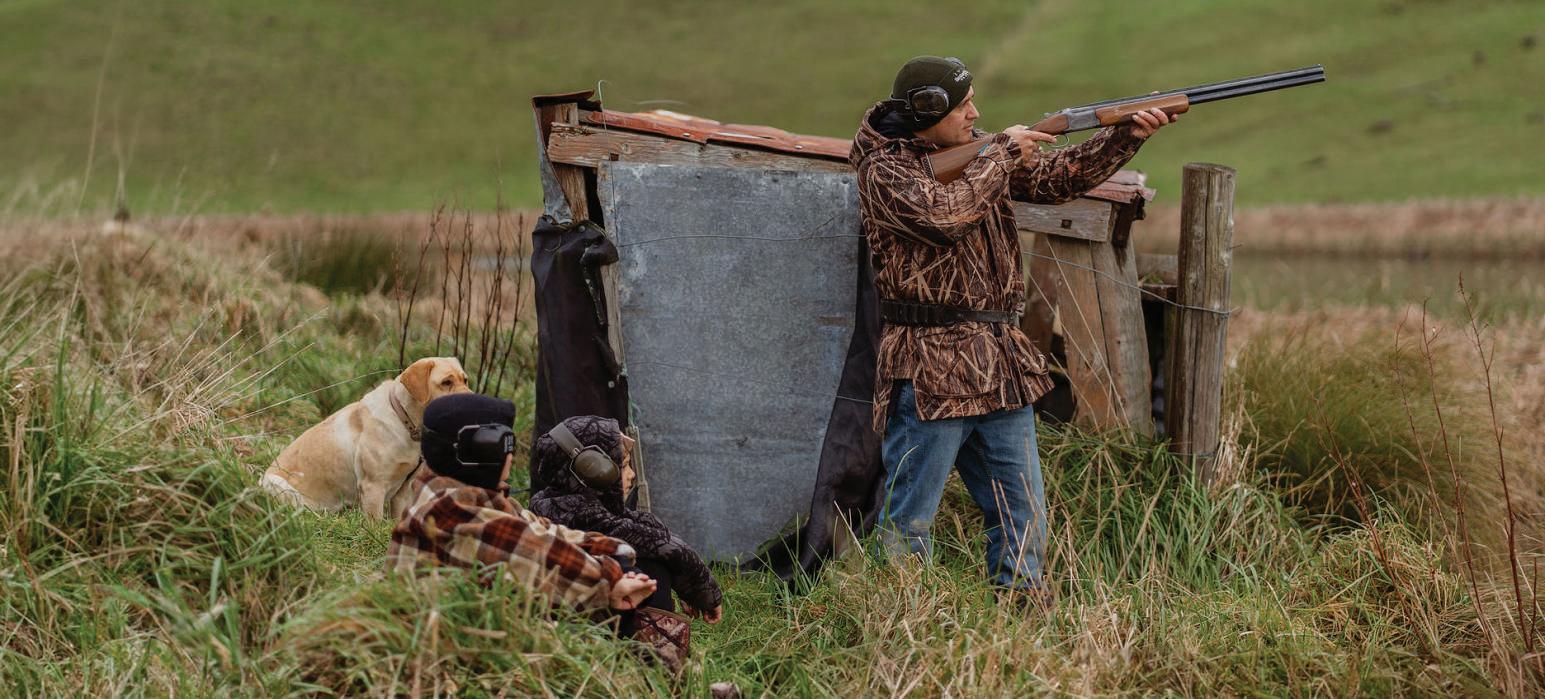
Grower confidence in the horticulture sector is mixed. While avocado exports are under pressure, kiwifruit growers are positive about their prospects

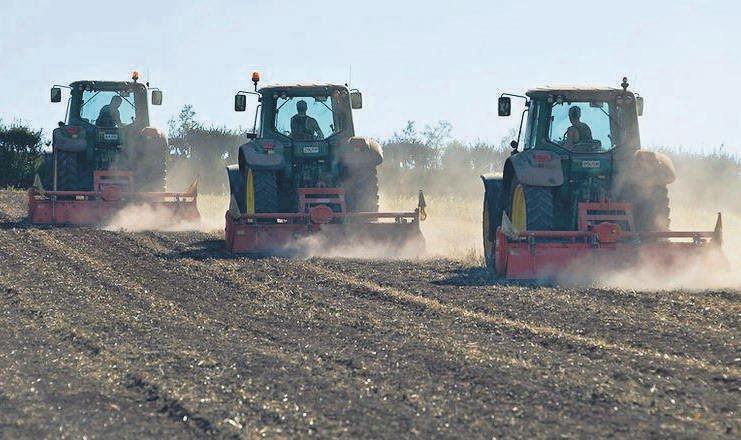
Farmer confidence hit rock bottom last year, but a recent survey shows a small increase in farmer confidence.
The increase of 25 points is since July 2023, when a net 80% of farmers considered conditions to be bad.
The 2024 Federated Farmers NewSeason Farm Confidence survey, undertaken twice a year, measures farmer confidence over eight key issues in the farming profession and community. The online survey was undertaken from January 22-29 and received 754 responses from farmers.
Finance, which includes debt, banks and interest rates, topped the list of concerns, with 17.6% saying they were worried about these. This is up from the July 2023 survey,
which it also topped at 16.9%.
Mortgage and overdraft interest rates have risen sharply in response to the Reserve Bank’s tightening of monetary policy to fight high inflation. Lending conditions also continue to be strict, adding to farmers’ financial pressure Coming second on the list was farmgate and commodity prices at 15.6%, which jumped up from fourth place in July 2023.
International prices for dairy and meat are both down for the year, and this has flowed through to farm-gate incomes. It was the top concern for meat and wool farmers and arable farmers.
Regulation and compliance costs were a concern for 12.1%, slipping from second to third place.
This is a “catch-all” for many different issues across a spectrum of environmental, employment, health and safety, and industry-specific regulation. There have been a plethora of new or tougher regulations in recent years, but the new Government has promised to reduce the burden.
Climate change policy and the
Emissions Trading Scheme (ETS), at 8.8%, slipped from third to fourth place.
After having a high profile during 2022, the pricing of agricultural emissions went quiet in 2023, and the Government has said it will push the issue out even further Input costs, at 8.6%, rose from sixth to fifth place. High inflation in the general economy has eased a little this year, as has on-farm inflation, with price pressures coming off fuel and fertiliser.
Concern about the economic situation, at 68%, was down from fifth to sixth place, while concern about the political situation evaporated with the election out of the way.
Other top concerns for farmers include freshwater policy, viability and profitability, and staffing.
Industry leaders are working hard to ensure that farmers regain confidence in the industry, but they have a long road ahead of them.
HortNZ has just completed meetings with growers as part of a national roadshow, and chief executive Nadine Tunley says that they received a good
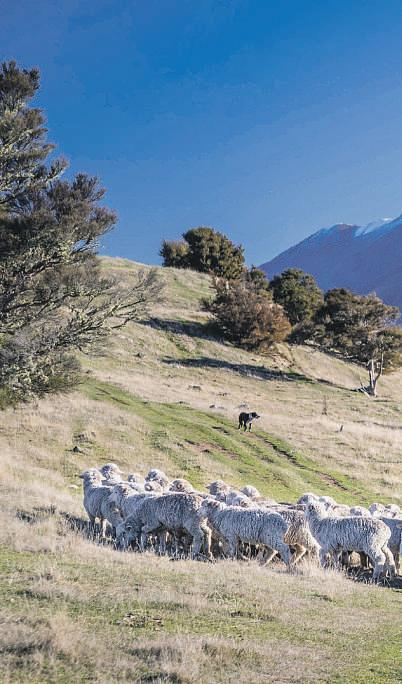
response from farmers.
“There were some really valuable insights and feedback, and the meetings gave us a good understanding of the challenges and opportunities facing growers across the country.
“As always, it is a mixed bag in terms of grower confidence. For example, while avocado exports are under pressure, kiwifruit growers are positive about their prospects, with the first charter setting sail last month (March 2024).”
As part of the roadshow, HortNZ has been outlining its three policy priorities to support growers – water allocation and storage; climate change and adaptation; and food security and supply.
Tunley says growers are dealing with the implications of the El Niño weather pattern now prevailing over New Zealand, which means drier conditions for many regions
“This is why ensuring water resilience through availability and storage is a key priority in the Aotearoa Horticulture Action Plan (AHAP), and why we need policies to support the expansion of, and


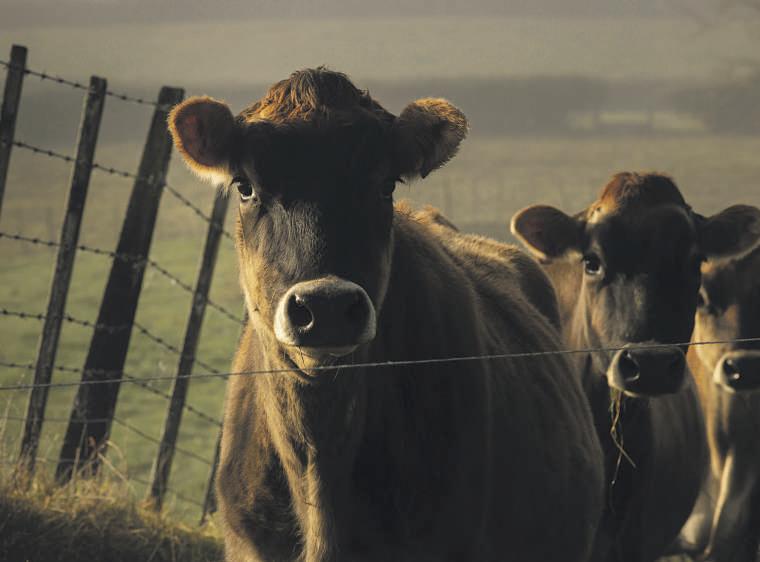
investment in, water storage. “Horticulture is a very efficient user of water but needs a higher degree of reliability than other land users.”
Tunley says that in its discussions with the Government, HortNZ has been clear that investment in land and water is critical if New Zealand is to maintain a thriving horticulture sector.
She says the horticulture sector is also set to take advantage of some encouraging tail winds in its favour, with a forecast by the Ministry for Primary Industries showing the industry overtaking forestry to be the third-largest earner of export revenue in the food and fibre sector by 2025.
“Increased export prices are forecast over the coming years, supported by strong global demand and constrained global supply. Recovering crop yields in 2024 are expected to offset lower volumes for some crops, largely resulting from the tail end of weather-affected 2023 harvests.
“The sector also recently welcomed the ratification of the New Zealand Free Trade Agreement with the EU, which is particularly good news for our onion and kiwifruit sectors.”
Kate Acland, chairperson of Beef + Lamb New Zealand, says that at its most recent meeting, there were some robust but mostly constructive discussions. Farmers appreciated the organisation’s commitment to getting back to basics
“A key topic during the annual meeting was climate change, with farmers wanting to see the methane reduction targets reduced, and remaining concerns about potential emissions pricing.
“These are two things that B+LNZ is very focused on, and positive progress has been made with the Government’s recent announcement of an independent review of the methane targets based on no additional warming.”
Acland says farmer confidence in the sector remains low due to a range of issues, including low sheepmeat returns, increased costs of production, and drought
“Sheep and beef farm profit is expected to be 67% lower than two years ago due to these factors, with many farmers expecting to make a loss this year.
“As a result of this tough financial situation, farmers remain concerned about the potential increased costs that may come from regulation, and are keen to see changes, in particular around
environmental policy.”
She says the outlook for the sector is positive.
“The fundamentals for red meat consumption globally remain sound, and the medium-term outlook is positive. However, the current situation for farmers, particularly sheep farmers, is extremely challenging. All eyes are on China’s economy and Australia’s drought for how quickly things may turn around.
“We encourage farmers to stay in touch with their banks, who should be supporting them through the tough period, recognising the sector's strong longer-term prospects. Additionally, farmers should engage with their advisers, accountants and bank managers for tax planning and cash flow management.
“With current conditions in mind, B+LNZ is refreshing its strategy to focus on those behind the farm-gate factors that farmers can control, lifting productivity and profitability Examples include new research projects to tackle parasite resistance and facial eczema.
“We are also focused on getting the regulatory settings right, and rolling back the regulations that were introduced under the previous Government relating to water, climate change and biodiversity.
“While none of these issues are going to go away, and progress needs to be made, the previous Government tried to do too much too fast, and major changes are needed to make them practical and achievable for farmers.”
Things are looking up for the dairy industry, as DairyNZ’s Econ Tracker shows a forecast seasonal closing position ahead of early-season predictions, though risks remain.
DairyNZ head of economics Mark Storey says it is positive to see that the outlook for the current season has improved, especially when compared to forecasts only six months ago.
“Revenue projections have improved, largely due to better results at the global dairy auction, along with Fonterra’s adjusted projected payout for the season,” he says.
DairyNZ’s latest forecast data on the Econ Tracker shows the national breakeven forecast currently sits at $7.75 kg/MS
This is below DairyNZ’s forecast average payout received of $8.12 kg/MS, which is based on the estimated milk receipts for the 2023-24 season and dairy company dividends ■
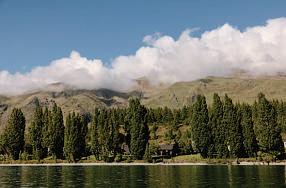


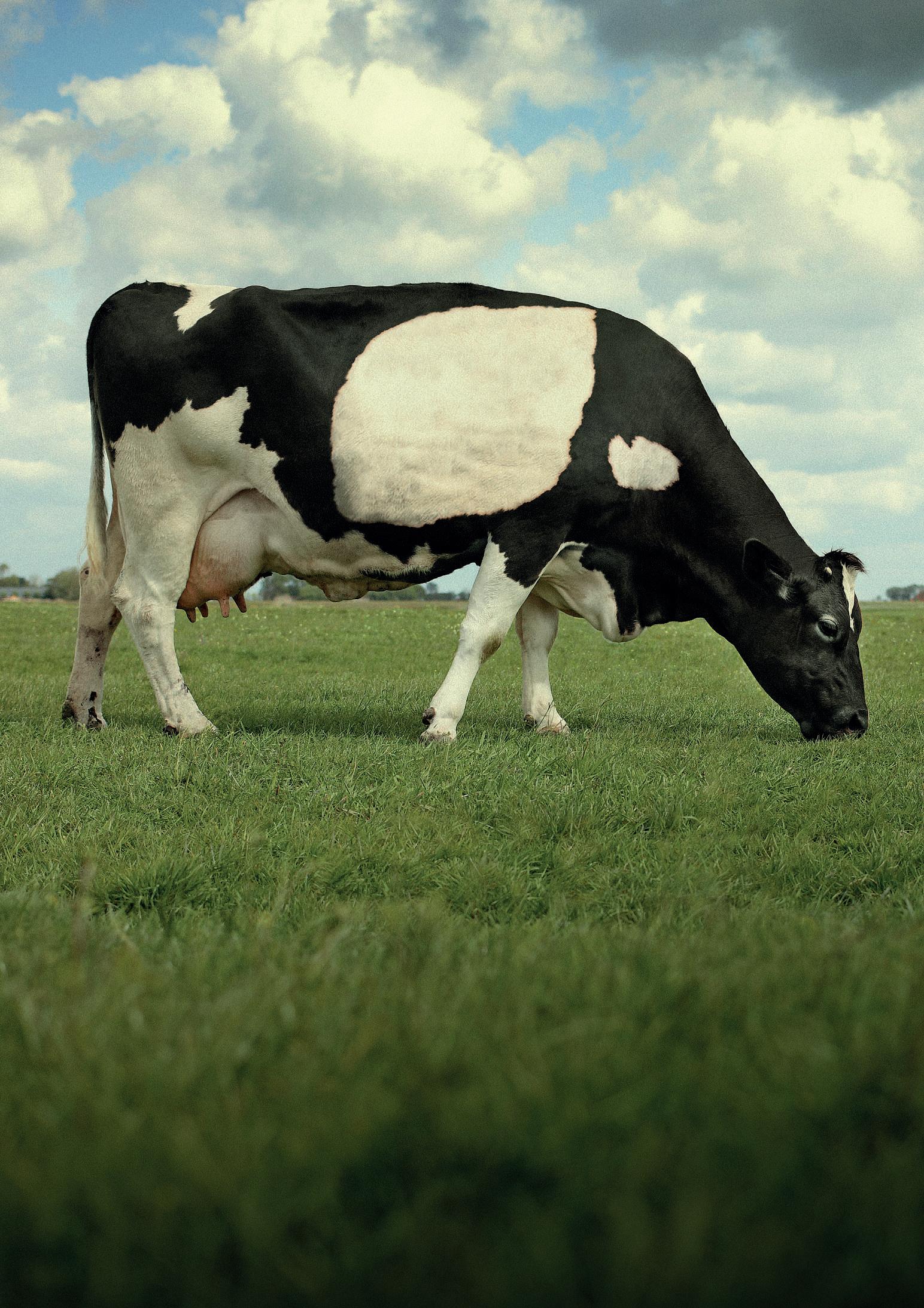
Whocan help your yields this winter andinthe yearsahead?
Superphosphate helpskeepyourfarmgrowing now, andin the future.Productionand output remove nutrientsfromyour farm system,soyou’vegot to topuptokeepyourproductivityup.
Book your applicationtoday on 0800 100123.
New data shows that crime is on the rise in rural Waikato, but farmers says the scourge is even worse than the figures show.
Last year, farmers had to deal with a 20% increase in animal theft, 10.8% more illegal street racing, and a 7.8% bump in poaching, compared to the year before.
Statistics obtained by Stuff reveal a significant increase in rural crime. Other than the regular break-ins, assaults and thefts, 2023 saw 2814 incidents of illegal car racing, 107 unlawful hunting reports, and 75 animal thefts.
Federated Farmers rural policing spokesperson Richard McIntyre said poaching and animal thefts were particularly difficult problems for farming families.
“To have people wandering around with firearms, often in the middle of the night, it’s really disconcerting.”
McIntyre said illegal car racing endangered residents and livestock, with a “marked overlap” between boy racer burnouts, dangerous driving, road and fence damage, and spooked livestock.
A Federated Farmers survey of more than 1000 farmers showed that 67% experienced or suspected they had been the victim of a crime over the past two years. However, almost half of them had not reported it to police.
The main reasons for under-reporting rural crime included farmers believing
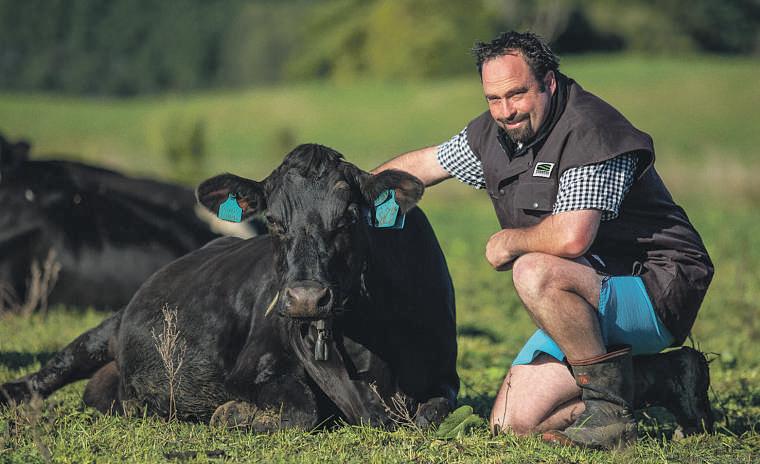
police were too stretched or wouldn’t be interested in coming all the way from their station, or that they felt they lacked evidence for a specific crime.
Sometimes, it took days to discover that stock or tools had been stolen, as farmers wouldn’t be using the tools or checking stock every day, McIntyre said.
A large proportion of national rural crime – 11.9% – occurred in Waikato.
Robbery in rural Waikato almost tripled within the past 12 months, from 28 reports to 73. The rise was three times sharper
“
To have people wandering around with firearms ... it’s really disconcerting. Richard
than the national increase.
McIntyre said the sharp rise was partly cost of living-driven, and partly in line with the general crime rate in the Waikato region.
Police said they were aware of rural crime and its complexity. In a first, police appointed a rural manager in 2022.
Although police don’t have dedicated rural officers, 162 constabulary staff receive an allowance for “rural/isolation” postings. This is 1.5 out of every 100 constabulary staff. In Waikato, the rate is slightly higher at 1.6.
However, responses to rural crimes are coordinated with urban centres, meaning rural residents have the same access to police resources.
McIntyre said farmers needed to report every crime they experienced so police could see a clear trend and allocate resources accordingly.
A mobile application called Rural Lookout was launched in May 2022, and is being piloted in North Canterbury McIntyre said the app made reporting easier, especially in areas where cellphone coverage was weak.
In a statement, police said the app had 3823 downloads and 492 reports submitted from it.
Police are trialling another initiative in the same region – a free security assessment and a subsidy on security upgrades. To date, 162 assessments and 91 upgrades are under way. ■




The public was welcomed behind the gates of Eyrewell Dairy Unit’s farm last month as a part of Pāmu’sOpen Farms event to see what goes on behind the scenes.
By Eve HyslopAnyone who hasn’t set foot on a dairy farm may not know the difference between raw and pasteurised milk, what dry matter is, that some cows can only have three out of four of their teats milked and even that effluent ponds aren’t for swimming.
That’s some of what Eyrewell Dairy Unit’s visitors learnt when the farm opened its gates to the public last month.
Visitors were given the chance to take a walk in a farmer’s gumboots for the day and see where their food comes from and what goes into its production, from pasture to plate.
The event was one of Pāmu’s


nationwide Open Farms sessions, featuring an educational cow-milking demonstration, a classic gumbootthrowing competition and giving visitors a chance to see a rare Canterbury grass skink population being conserved on the farm.
There were four time slots for the dairy unit’s open farm for up to 200 visitors. Originally only two time slots were planned but, due to tickets selling out in two hours, more times were added.
Eyrewell Dairy Unit is a 450-hectare intensive dairy farm which milks 660 cows and raises dairy beef cattle.

Mahraaz Hussein manages the farm and was happy to be giving visitors a
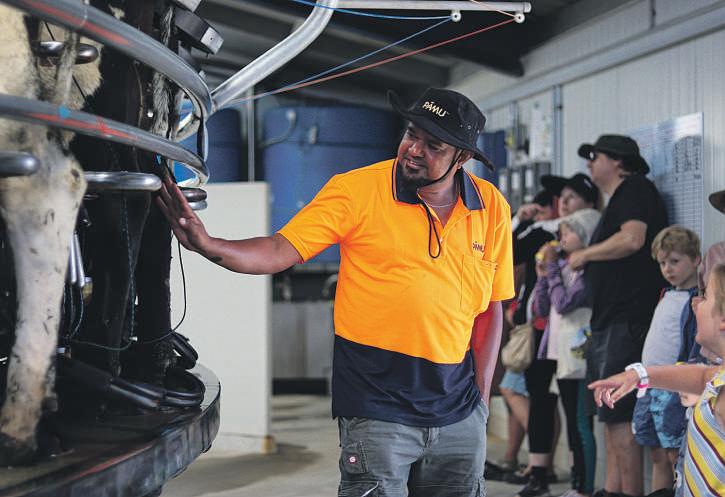

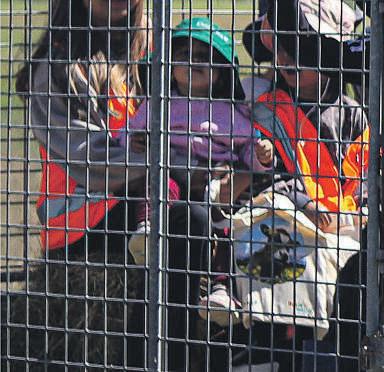

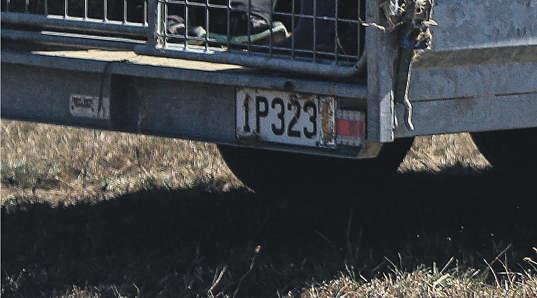
Milly Penn, 7, says her favourite flavour of milk is strawberry. Now she has seen where milk comes from.

view into the life of a dairy farmer.
“There’s a different perspective of what dairy farms are. And opening our farm and showing to the public what we do is actually letting them know, in fact, we do look after our environment. We do look after our waterways, we do look after animals, and we do things sustainably.”
waterways are fenced off too.”
Walker says getting the public on-farm is a great way to foster the connection between urban and rural communities.
Hussein says doing things sustainably means following the right practices which Eyrewell Dairy Unit prides itself on.
“We make sure we’re managing our paddocks well, managing our pastures well, managing our animals well for sustainability and having the right feed in them. Looking at what we do during the weather conditions, not damaging any paddocks, not damaging the pasture or not polluting our waterways.”
Pāmu general manager for Upper South Island Cameron Walker says the public get a good opportunity during Open Farms to see Pāmu’s commitment to caring for the land.

“All of our irrigation is metered and there’s soil moisture meters. We do a lot of soil testing and we’re only putting in the nutrients that we need. All of our

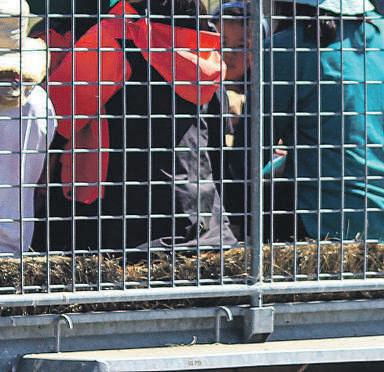
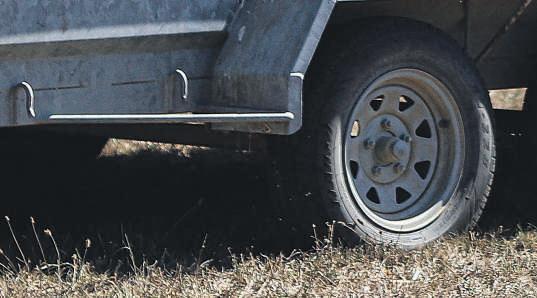
“It’s important for the food and fibre sector to keep building those bridges with local community and show them all of the good environmental initiatives. We’re trying to feed the world, but also trying to do it in a sustainable way.”

The dairy unit is one of 110 Pāmu farms following a strategic plan which, among other initiatives, aims to rear the vast majority of calves born on their dairy farms by 2030.
According to Pāmu’s website, about 70% of beef in New Zealand is estimated to originate from dairy farms. So although an integrated system is not new, it provides many environmental benefits for dairy and beef industries.
Making the move to dairy beef creates minimum wintering requirements, a reduction in nitrate to groundwater, improved animal welfare outcomes and lean and sustainable breeding values for farmers. Pāmu says this will not only favour consumer demand but also assist
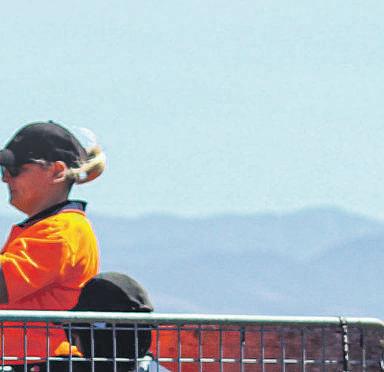
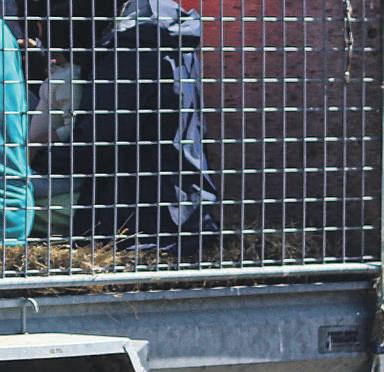
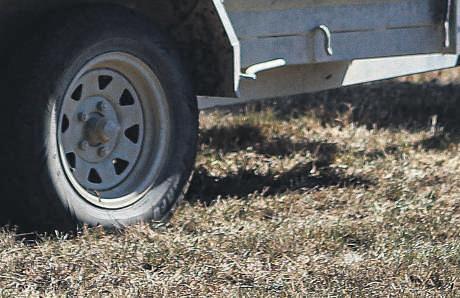

in reducing greenhouse gas emissions. About 50% of calves currently raised on Pāmu farms are produced by dairy herds and by the 2026 financial year, they plan to raise 75%.
Eyrewell’s dairy beef block currently holds about 520 animals.
This integrated system is one of many things visitors learnt about on the dairy unit. Walker said such learnings open doors for both children and adults to consider a career in the agricultural industry.


“You don’t have to have a degree, you just have to have the right attitude and a willingness to learn and be prepared to get stuck in you just see how broad the range of opportunities in the food and fibre sector are. That’s a cool thing for young people to see and they’re transferable skills across the industry.”
Alayna Hussein, 15, often helps rear
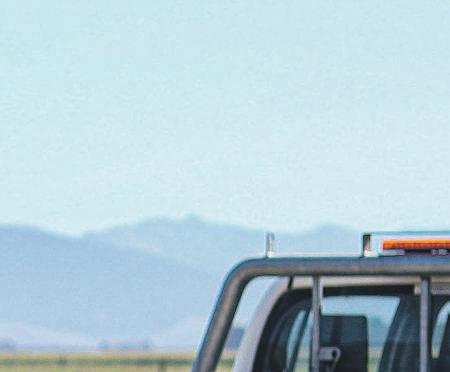
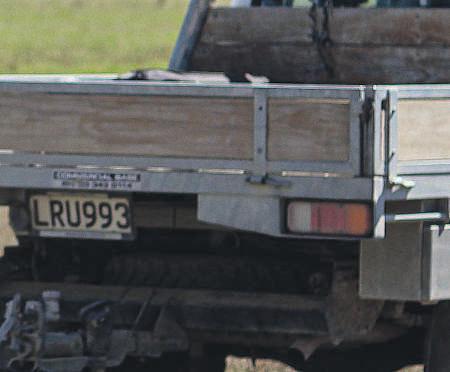
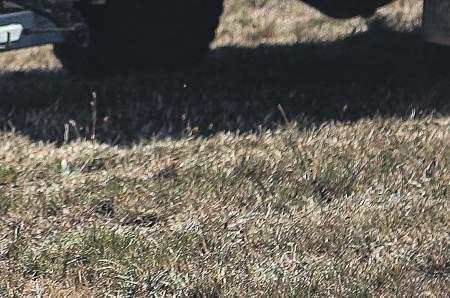
calves on the dairy unit and says the experience she’s had on-farm has built her appreciation for the environment. This inspires her to pursue an environmental career in marine biology.
“It’s nice to get experience on farms because there’s a lot to learn here.”
Christchurch kids Jerome, 9, Livia, 7, and Lucy, 8, got the full experience during the milking demonstration, even having a close call with the splatter of a dairy cow’s poo. The children travelled 45 minutes from Christchurch to get to the Open Farm but said it was well worth their time, the milking being their favourite part of the day.
Ahuwhenua Trophy finalists meet at Mangakino to share their dedication to the land.
The rangatahi (young people) wowed the crowd at the Ahuwhenua Trophy field day in Mangakino on March 28. The finalists spoke with maturity and their foresight of the industry to an audience of about 300 people.
Ben Purua, Tainui, 29, Hannah Speakman, Ngāti Kahungunu, 21, and Shayden Gardiner, Te Āti Haunui-a-Pāpārangi, Ngā Rauru, Ngāti Rangi, 21, are the young Māori finalists for the 2024 dairy award and they used the field day as a platform to articulate their dedication to the whenua (land).
By Bethwyn Littler.“
Farming is my vibe and being part of Ahuwhenua and part of the kaupapa is really important to me.
Ben Purua

The Ahuwhenua Trophy Excellence in Māori Farming Award originated in 1933, the brainchild of Sir Āpirana Ngata and governor-general Lord Bledisloe.
The Ahuwhenua Trophy Management Committee said Māori success is centred around the need to provide for future generations and so the award for young farmers is about futureproofing Māori business. The field day was an opportunity for farmers to connect with each other and hear from the finalists.
Lead judge Matiu Julian of Primary ITO described the award through the whakataukī: ‘He kai kei aku ringa, there is food at the end of my hands’.
Purua, who is farm manager at Waimakariri Lands Ltd, near Tirau in Waikato, runs 540 cows.
He faced adversity in his childhood, including exposure to gang life, substance abuse, and domestic violence, which led to time in prison where he discovered a passion for farming. His experience on the prison farm began a transformative journey of redirection.
“I completely turned my life around. I now work alongside the police and corrections.”
Purua now mentors in the agricultural sector and has become a presenter at the Waikeria prison farm open days.
While they aren’t considering a career in dairy farming just yet, the children all have a new appreciation for the industry. ■

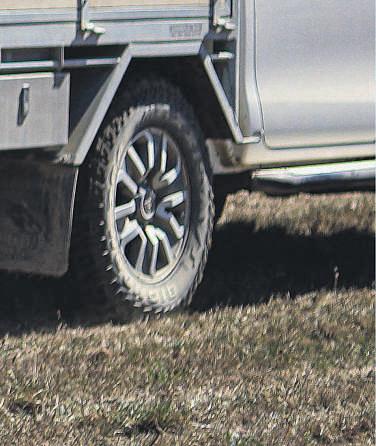

“This proverb builds on an intergenerational intent to increase the productivity and capability of the Māori agribusiness sector, with flow-on benefits to improve the health and wellbeing of the community. With a growing alumni group of young Māori leaders who continue to excel and uphold the mana of being an Ahuwhenua Young Māori ambassador, the future is in good hands.’’
He used the opportunity to connect the finalists with the last dairy winner Quinn Morgan.
The field day was hosted by trophy finalist Wairarapa Moana ki Pouakani Incorporation (WMI).
The WMI land holds a complex story of Wairarapa Moana hapū losing land around Lake Wairarapa in the 1800s. In 1915 the hapū reluctantly accepted the Pouakani 2 block in Mangakino as exchange. The land was poor with no road access. However, 100 years later it is home to a well-respected and high-performing dairy farm.
WMI is the largest supplier to Taupō based dairy processor Miraka, supplying the company with 40% of its milk.
“Farming is myvibe and being part of Ahuwhenua and part of the kaupapa is really important to me. This was a great day connecting with the Ahuwhenua whānau.
‘‘It is always interesting to learn the history of the land and how the trust (WMI) created what they have today.”
Speakman is 2IC for Woodlands Farming on Pine Hill Dairy farm in Enfield, near Oamaru. The farm is 170ha and milks 560 cows. She said she entered the award to celebrate and showcase Māori success in farming. “It’s really awesome to celebrate the success of our people in the agriculture industry. We have been guardians of the land for generations.”
Gardiner is assistant farm manager for Ma Taua Dairies, near Ashburton in midCanterbury, a 354ha farm which milks 1120 cows at peak.
“I entered the awards to share my story with young Māori farmers. The importance of Ahuwhenua is acknowledging young Māori coming through the agriculture sector. I think it is building the leaders for the next generation.”
The Ahuwhenua Trophy, Excellence in Māori Farming Award dinner will be held in Hamilton on May 17 ■
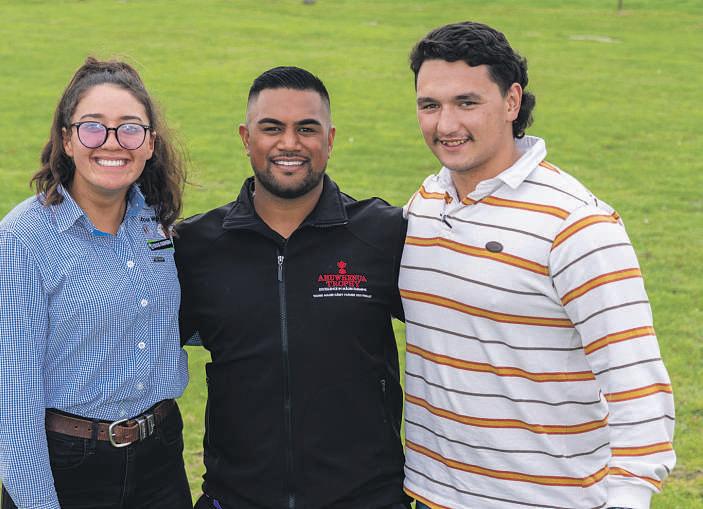
Ahuwhenua Trophy young Māori farmer finalists Hannah Speakman, Ben Purua and Shayden Gardiner meet at the field day in Mangakino
Miles Davis asks why our two major sporting bodies haven’t grown up when the country as a whole has.
Who can remember New Zealand of 40 years ago?
While always a beautiful country inhabited by caring, resilient and resourceful people, there were aspects of it that were crying out for development. A sort of growing up, if you like.
Take the social scene, for instance If you wanted a beer, it was a choice between a cold brown beer brewed by Lion or a cold brown beer brewed by DB. Wine was either Chardon, Marque Vue or some unpalatable Muller Thurgau Restaurants closed at 9pm and mainly served safe, conservative fare.
Supermarkets shut at midday on Saturday and pubs were closed on Sundays.
Today, New Zealand has a social scene that is comparable, perhaps superior, to any country in the world It has matured impressively in that area as in many others. One area, however, that has not grown is the administration of our two major sporting codes, rugby and cricket. In fact, I would say that in an age of increased revenue and exposure, both outfits have become even more insecure and precious Their inability to withstand legitimate criticism and their siege mentality when challenged are at odds with the rest of New Zealand society.


While other codes front up to media and fans when issues are raised New Zealand Rugby and NZ Cricket try to shut criticism down either by maintaining a silence, sweeping scandal under the carpet, or shunning anything but sycophantic media
The Breakers, Warriors and Netball New Zealand do not hide from any bad publicity and always front up to the media when under the pump. They entertain robust commentary from broadcasters on their sport. They won’t refuse to provide a spokesperson if you have said anything that may be considered negative. The same cannot be said for our two major codes.
Criticise them and you will be given the cold shoulder. Cast aspersion of any sort as a member of the commentary team and you will be moved out of the inner circle.
Let’s be honest, coverage on Sky Sport and Spark of these sports is often no more than a cheerleading exercise. Why? Because they exert pressure on their broadcast partners to keep the coverage overly positive
Frankly, it’s an insult to the viewer. It’s as if the Kiwi sports fan has no idea what is going on before their eyes and will swallow all the propaganda being fed to them.
Compare that with the coverage in the United States, United Kingdom or Europe environments where robust challenges are confronted head on and sporting bodies and media keep each other accountable
I don’t know any Kiwi who wouldn’t welcome a move to honesty and straightforwardness. But that would take maturity and an acceptance that your public has a right to being treated with respect, an acceptance that honesty is not a weakness but a strength.
Unfortunately, I fear we are a long way from this happening While the likes of league, basketball and netball are mature enough to accept that (perhaps driven by the knowledge that they need to court media to gain attention for their sport) rugby and cricket are still under the impression that they are so important everyone will naturally bend to their will or face being ostracised.
In a rapidly changing sporting landscape, the rise of the Breakers and the Warriors in popularity to name but two, our major sporting bodies need to grow up quickly before they one day turn around and find out no-one cares about them any more ■



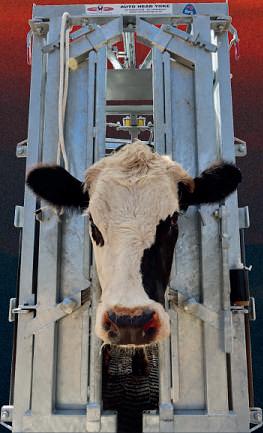
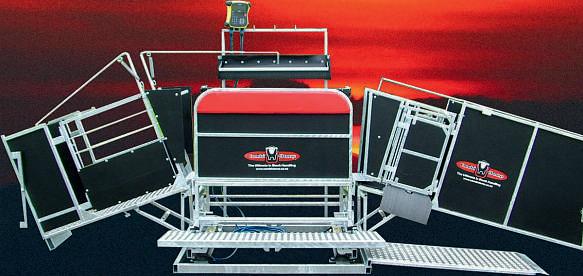



Moving Day is a big day in the farming calendar and requires good planning and communication to ensure success.
Good people help you thrive in the good times and support you in the tough ones. To help, they just need to understand what is required of them
Moving Day involves not just moving a household of stuff but a farm-load of stuff too. Preparing early is important, as is communicating with your team and the people assisting you (whether contractors, friends and/or family) about your plans and your expectations of them
It is critical that your things all leave the farm clean and disinfected to manage health and biosecurity risks. This is especially true for vehicles and machinery.
Set up for success
Ensure sharemilker/contract milker contracts are signed by both parties and a farm inspection with new farm owner, incoming and outgoing sharemilkers, farm manager, farm advisor has been planned.
Determine your staffing needs for your new farm, start recruiting for required staff and ensure signed employment agreements are in place, alongside signed service tenancy agreements for any employees who will live on farm
Get in touch with your insurer well before the move – there might be more things to discuss than you think. It’s a good idea to know the physical address, building details, any plant or machinery details, and the details of your sharemilking or contract milking agreement if applicable.
Pack very important items separately.
These should travel with you, e.g phone chargers, Sky TV remote, ipads for kids, Important documentation including passport, visa, marriage certificates, insurance policies, motor vehicle ownership documentation etc.
Housing
The sharemilker or contract milker is responsible for ensuring that their own house and their staff house/s have been left in a clean and tidy state. Take and record final power meter readings for all houses at both properties. Contact your utility providers (e.g power, phone, internet, Sky etc) and ensure you will be disconnected and reconnected on the right dates.
Farm owner
Complete house/s inspection for any maintenance required on current farm by end of April at the latest, arrange and complete any repairs and upgrades required. Check you comply with Healthy Homes standard.
Confirm with departing and new tenants their departure and arrival times so there is no crossover between parties, complete house inspection with existing tenant (sharemilker and/or employees) as soon as house/s are vacant
Sharemilker/contract milker
Consider whether drug testing of house/s will be required. If yes, arrange contractors and discuss with farm owner Ensure the house/s are cleaned and tidied to the standards agreed in the contract
Complete house/s inspection with employees and then farm owner as soon as house/s are vacant, and complete

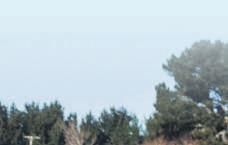




house/s inspection prior to moving in on new farm. Immediately discuss any issues with farm owner, agree a plan and document this. Confirm if drug testing has been completed and results if applicable
Stocktake
Complete (and record) a stocktake of plant, machinery and supplies you have on your farm currently if relevant – note if any maintenance is required and arrange for that to be done or make a reminder for yourself for a later date. Keep a record of this for insurance purposes and make sure higher value items are specified on your policy.
Household items
Pack and label boxes of your farm items ready for moving. Try to keep the critical boxes together, i.e. the ones you know you will need quickly.
If your move is local then consider moving your items bit by bit as much as


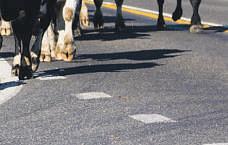

possible to reduce stress – but do make each trip efficient.
Have a chat with your insurer about whether you need a separate transit policy in place for the move as your contents policy might not be enough.
Final tidy
Ensure all rubbish is removed from the farm. Your mess, your responsibility, and your reputation. Clean the sheds and plant appropriately.
Fix any fences and things that are your responsibility. If they are not your responsibility, then ensure whoever it is knows what needs to be done, in writing. Clean the dairy shed to a high standard of cleanliness, exactly as you would hope to find it. This means all surfaces, vats, pipelines etc. Use only approved products for this process. ■
Source: DairyNZ






Kiwi scientists have developed a groundbreaking tool which tracks nutrient flow as food is traded across the globe.
The new online tool developed by scientists at the Riddet Institute at Massey University can now track the flow of more than 40 nutrients as food is traded around the world.
Scientist Nick Smith works as part of the sustainable nutrition initiative (SNI) team which has created the nutrient trade model. He says the mission is to make information about food systems and sustainability more accessible.
“The goal was to take what we knew about food flows around the world and what that meant for essential nutrients in the human diet and turn it into a tool anyone can use.”
In New Zealand we are heavily dependent on Australian wheat for many of our nutrients. Smith says about 80% of New Zealand wheat imports come from our Aussie neighbours.
“It is amazing how much of our diet is Australian wheat. If you were to take that away it would be a massive shift on a day to day basis.”
Luckily the risk of disruption across the Tasman is low. But high dependency on one source can make a country vulnerable in times of crises such as natural disasters,

Countries that import food from a variety of sources tend to have healthier populations, according to a new study on global trade and nutrient supply.
pandemics and wars There was a global panic when Russia invaded Ukraine because of reliance on Ukraine’s grain exports.
Smith says there is plenty of focus on food trade and trade resilience but the nutrients within that trade are often overlooked.
“That’s where this research is novel, it tracks each of these nutrients as they flow around the world. So as well as food product resilience we can ask nutrient resilience questions.”
Disruptions in trade supply chains not only impact food production but global nutrition and health. Even before the Ukraine war there was research explaining what would happen if there was a disruption to wheat supply.
“But reductions in wheat supplies also means a reduction in dietary energy such as protein, iron and zinc and that is where
The pair have taken their careers upwards, with a drone business that they hope will be a boost for the primary sector.
By Steve Macmillan.Two Northland men made redundant from the Marsden Point Oil Refinery have taken to the skies with the launch of a new business benefiting farmers, growers, lifestyle block owners and more Stu McLeod and Cam Maunder are the founders of Mahi Drones, having teamed up with their wives Hilary and Tineke Together, they are attempting to corner the market in Northland by providing spraying and spreading services to an array of sectors, including agriculture and horticulture.
The engineers-turned-pilots say while these drones are commonly used in the United States, Asia and Australia, it is a relatively new industry here in New Zealand and they are enjoying solving problems for clients.
By flying the most advanced drone with the largest payload (50kg or 50 litres) in the industry, their efficiency and accuracy of application are high, which results in lower application costs. In fact, theirs is currently one of the country’s largest capacity drones.
The drones can access areas heavy machinery can’t with ease, like steep hillsides covered in gorse, or buildings and structures otherwise requiring scaffolding.
“For mapping purposes, our software uses high accuracy RTK Satellite positioning, so we map every area we intend to spray. These maps and spray details can then be shared with clients at the completion of jobs,” McLeod says
And while based in Northland, McLeod says they regularly work throughout the North Island.
They are currently working with North Chamber and Northland Inc to help with business mentoring and growth and the pair say their site at the recent Northland Field Days in Dargaville attracted droves of people fascinated by their big drone.
“Hilary and I are from ag backgrounds through growing up on farms, so that has been great from an application perspective and product knowledge because we know what farmers need to attend to on a daily and seasonal basis,” McLeod says.
“Cam and Tineke have a great amount of health and safety knowledge which helps us in a very regulated sector.”
Spray drones have been in New Zealand for a few years but in the past two years their use has steadily increased.
However, there are still some hurdles to overcome in showing people what a large capacity spraying, spreading and lifting drone is, and what its capabilities are.
In the agriculture and arable sectors, Mahi Drones is largely focused on spraying invasive weeds, pasture cleaning, liquid N applications, spreading fertiliser, slug and cricket baits, and broadcasting seed.
The horticultural space sees them focusing on applying treatments for moss
and
you start getting deficiency and health impacts,” Smith says.
The online tool has had a good number of hits since it launched at the beginning of the year. Users fall into three categories; policy users such as the Ministry for Primary Industries (MPI), industry users such as Fonterra and researchers and academics.
countries to enhance food security.
“The nutrient trade model will feed into discussions New Zealand has with other trading partners about the importance of trade in ensuring access to nutrition, and food security,” says Houlding.
The tool is useful for looking up what foods are contributing to New Zealand’s energy imports and what countries these come from but paints a more dire picture for less advantaged countries.
SNI lead scientist Warren McNabb says New Zealand can generally afford changes trade prices but it is low income countries that end up suffering.

“If you are a lower income country and you are not heavily in the trade space then you can’t meet the nutrient requirements of your population if you don’t have a whole lot of local production. Instead of thinking where are we going to get wheat, countries can ask are there other foods that could satisfy our demands?”
The research, in collaboration with international scientists from Brazil’s State University of Campinas and the University of Sao Paulo, has appeared in the international journal Global Food Security.
MPI commissioned Massey University to use the nutrient model to provide data and insights about trade in the Asia-Pacific region. International policy director Phil Houlding says MPI works with other
Smith says the number of undernourished people worldwide has risen by nearly 200 million since 2015 This has been driven by global conflict, pandemics, weather events, and inflation. He hopes that making micro-nutrient data accessible in an interactive format will assist policy makers better serve the nutritional needs of populations.
“We don’t expect international trade policies will centre around individual micro-nutrients, but this tool will highlight the vulnerabilities in the global food trade system and the food-based strategies that could mitigate them.” ■
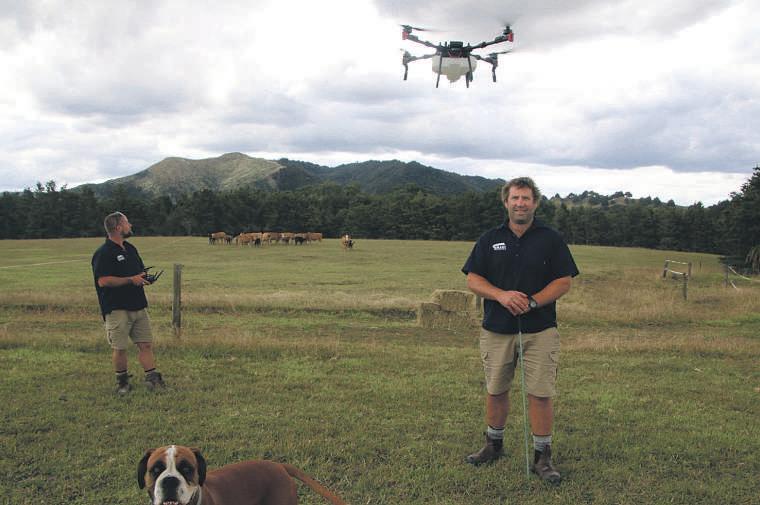
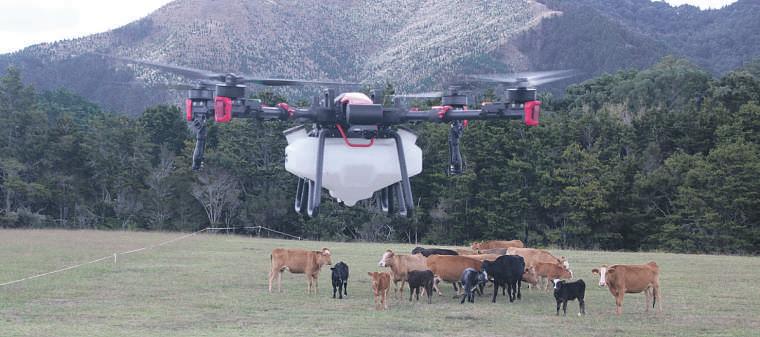






























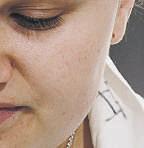



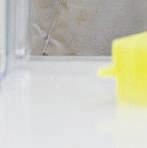












When someone asks Lincoln masters student KellyAnne Bentley about her study on biomarkers to assess meat quality, she asks in return if they’ve ever had a tough steak

If they reply yes, Bentley says that her study sets out to explain the reasons behind a chewy and poor coloured steak, so the meat industry can get better-quality meat on our supermarket shelves and to our exporters.
“We're trying to put a biological reason for those things and find ways that we can identify if a piece of meat is going to be bad quality.”
The study involves a novel technology, Rapid Evaporative Ionisation Mass Spectrometry (REIMS) which rapidly assesses the quality of meat. The technology takes fresh meat tissue and burns it to create aerosols that give thousands of metabolic markers in seconds
The biomarkers shown by the REIMS technology have been proven to show gender, age and feed intake, which can even show where the animal originated from “The goal is to test that and potentially it could be used in red meat processing plants to assess the quality of meat rapidly.”
Bentley is one of nine Meat Industry Association (MIA) Scholarship recipients, awarded for potential future leadership in the meat industry. The scholarship has provided her with $10,000 toward her studies on REIMS and future networking opportunities, like the MIA conference in July, held in Wellington.
The technology would be a gamechanger for meat processors, making the assessment of the carcass much more efficient.
At the meat processors, it usually takes around 24 hours for testing to be done on a carcass, like pH testing But REIMS allows them to test the carcass as soon as





“










With food science I can go into a research and development role where I would be developing products for the market.
Kelly-Anne Bentley
it’s been slaughtered, finding a prediction on quality within seconds.
Put simply, Bentley hopes that with further research, REIMS can predict how well the meat retains moisture for a juicy steak, if it’ll be tender or tough and what colour it’ll be on the supermarket shelves.
“Obviously, you want a nice vibrant, red piece of meat. You're going to pick the red








A Lincoln University masters student is working on a novel technology that can indicate the quality of meat within seconds.
 By Eve Hyslop.
By Eve Hyslop.


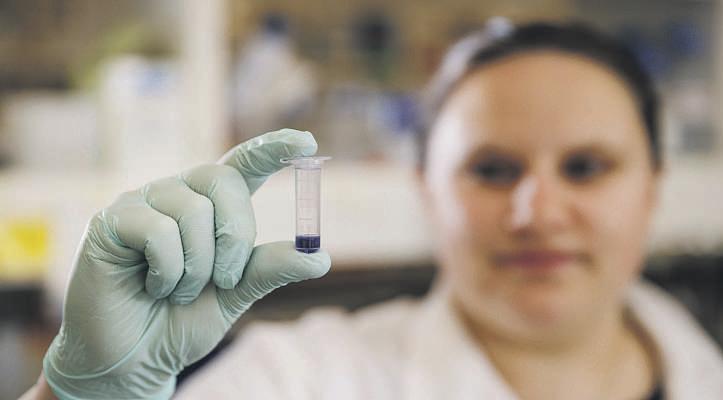








over the darker or more brown or piece of meat.”
Not only could REIMS advise the quality of meat, but also improve the welfare of animals in slaughterhouses. Bentley’s earlier research found that the quality of lamb meat from a stressed sheep was of lowvalue while a calm, unstressed sheep was of high quality.
REIMS was initially designed for cancer treatments overseas, used by surgeons to identify cancerous tissue. It’s also been used overseas to identify boar taint in pork meat, which led to its adaptation in New Zealand by researchers at AgResearch.
Bentley says due to the complexity of the technology, it’ll take a lot of machine learning before REIMS can be used in meat processors and it’s hard to tell how long that may be.
Part of the machine learning for her was learning a whole new skill of how to code and read code. This gives her an edge on regular computer scientists, to understand the biology of the animals rather than just the codes alone.
Her interest in food science began in year 11 when her science teacher introduced her class to golden rice.



Learning new skills is not foreign to Bentley who initially wanted to be a chef in high school She’s since been able to use her experience with food to her advantage in science, studying a food science degree at Lincoln which she completed in 2022.

“Overseas they’ve edited the genes of rice so that it's more nutritious for populations whose diet is mostly rice. And I was like, ‘That's pretty cool, surely food science is a thing?’ And then it kind of just stuck.”
While she still likes the idea of being a chef, she’s more convinced toward being a food scientist.
“I've always loved being in the kitchen and creating new things. But with food science, I can go into a research and development role where I would be developing products for the market.”
She says her passion for food fuels her curiosity for how it’s produced, the make up of its nutrients and how she can educate others on how certain products are developed.
“Science is really everything from the farm, to the plate. And although you might not think that science is going on in the background, it definitely is…I've heard of companies wanting lower calorie of a product that you just can't get any lower in calories because it's a natural product. It’s really driving the understanding of food and how we can develop products.”
Bentley’s research and role in the industry sees her not only improving the quality of New Zealand meat and the development of food products, but also growing discussions around animal welfare regulations.
“They already know that stress is impacting the animals, but we can really be like, ‘We have this evidence, and we need to change how we're doing it.’ It really helps grow discussions and regulations.” ■
Lack of understanding around pasture diseases could threaten New Zealand’s biosecurity should nasty pathogens
find their way in.
By Bethwyn LittlerWe hear a lot in the sector about agricultural pests and animal health but New Zealand needs more understanding of pasture diseases, according to AgResearch scientists.
Kwasi Adusei-Fosu says diseases in pasture plants such as crown rust and clover rot could have significant costs for farmers and the economy. With a changing climate these losses could escalate.
“By building our knowledge, we are also helping raise awareness and preparedness for threats to New Zealand’s biosecurity, including the risk of new disease-causing organisms that could invade New Zealand,” he says.
AgResearch is inviting farmers to fill out a 10-minute pasture pathogen survey to help them create a better picture of what diseases are predominant in pasture and forage. It asks questions about location and management of diseases as well as financial impacts.
Adusei-Fosu says historically there has been limited research into pasture diseases and little discussion between farmer and scientist. He says past studies have been


speculative in nature, poorly understood and neglected but this time they are reaching out to farmers. He wants to know how scientists and farmers can tackle critical diseases together.
“Scientists did a great job producing literature reviews but these should have been followed up with the steps we are now taking. Are there things our farmers are doing differently that are unknown to scientists? Understanding the diseases farmers are battling will give scientists insight to explore alternative tools.”
Adusei-Fosu says results from the New Zealand survey will add to AgResearch’s programme aiming to reduce synthetic pesticide inputs on farm.
Pirongia farmer John Lorimer says he has seen some rust in his paddocks over the years but never had much trouble with pasture diseases. However, he suspects with climate change and increased humidity they could become more prevalent.
years so he does not have to worry about diseases taking over.
Federated Farmers arable group chairperson David Birkett is concerned that if import standards are relaxed for imported seeds there will be more risk that pathogens will transfer to pasture.
“I do think biosecurity is really important for our industry and our economy,” he says. “We don’t know if there even is problem so more needs to be done.”
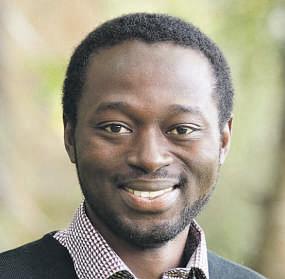
Walton dairy farmer Simon Brough says pasture diseases do not keep him up at night but pasture persistence is important. He says risks to pasture is a good reason to invest in seed banks of old pastures.
AgResearch sent ryegrass and clover seeds to the global plant species vault in Svalbard recently.
Brough has chosen not to plant turnips because of diseases like mildew. In this way he avoids certain crops in order to avoid diseases. His clover is replaced every few



Ministry for Primary Industries has removed 11 pathogens from the import health standard list of regulated pests for maize.
MPI plant product imports manager Steve Corin says the removal of the pathogens is not a relaxing of standards.
“These pathogens are either already established in New Zealand, not associated with maize grains or not able to establish here. The amendments to the standard are based on scientific evidence and recent literature review and do not lessen the strength of the measures on potential biosecurity risks on this pathway.”
With the incursion of fall army worm, AgResearch plans a second survey to focus on understanding grower awareness of key insect pests and their control methods. ■
The pasture disease survey can be accessed at: surveymonkey.com/r/YR68GHJ with a chance to win one of five $100 Prezzy cards.
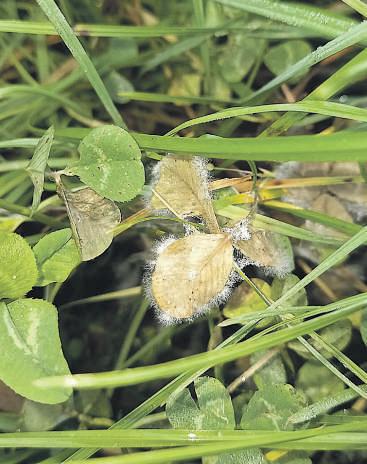

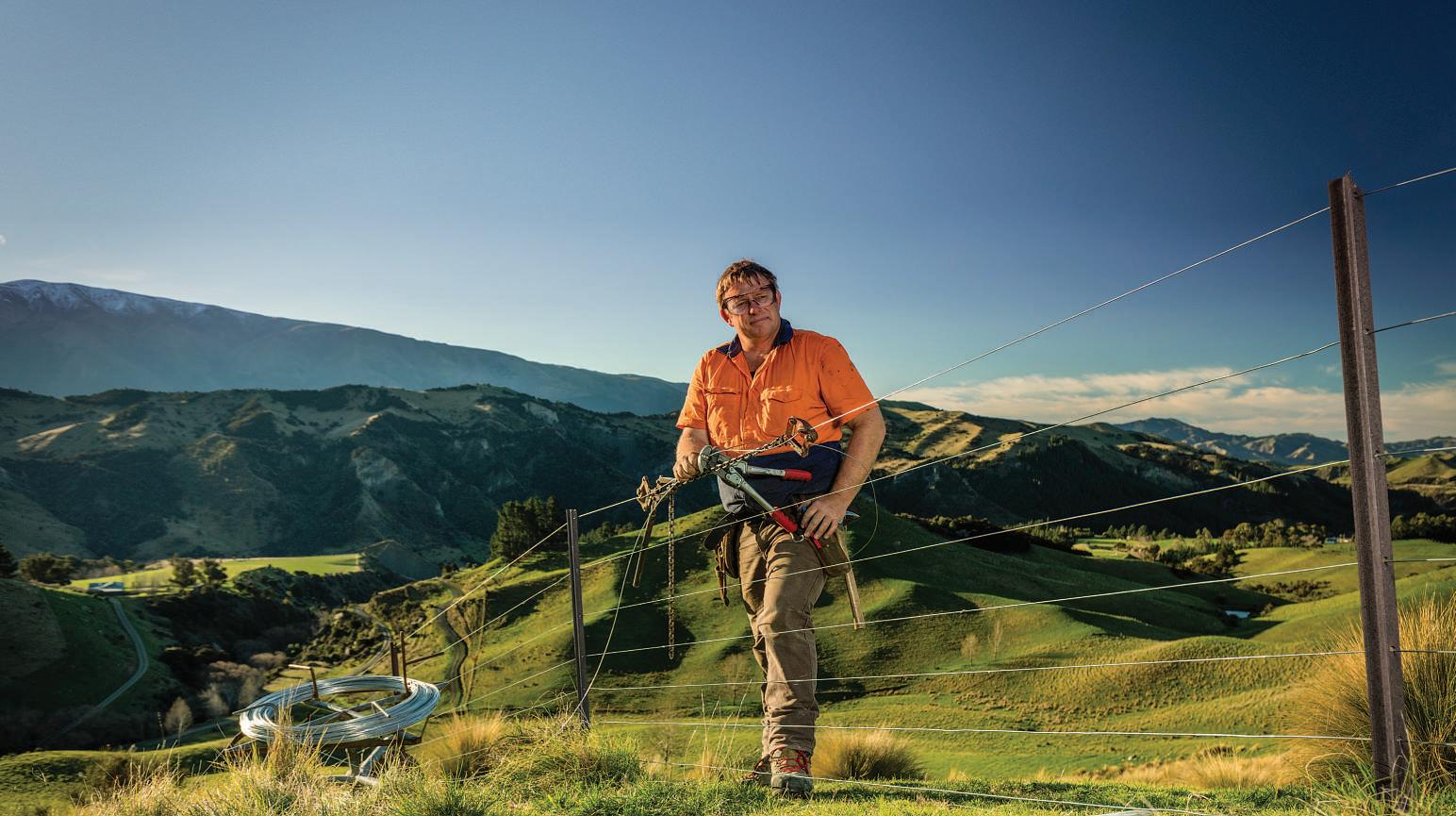








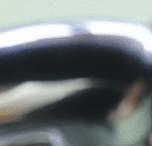









GNS Science is carrying out anonymous nitrate testing for farmers to identify aquifers where drinking water is unsafe. The testing will be done on groundwater bores or springs to ensure residents have access to low-nitrate drinking water.
undertaken was not appropriate for the land. Current nutrient loading limits were not ‘one size fits all’ and for some farmers dealing with shallow groundwater were fighting a losing battle with nitrate leaching.







“Our tests are completely free and confidential to protect anyone who wants to know their nitrate levels in drinking water,’’ says Dr Karyne Rogers, a senior environmental scientist at GNS (Geological and Nuclear Sciences)Science.
“Moreover, we’re using the anonymous data to provide evidence of regions that are struggling to assimilate nitrates and regions that are coping well with nitrates.’’
Nitrates in groundwater are one of New Zealand’s biggest environmental problems due to the contamination of drinking water.
“Once the groundwater is healthy, we know the land will be healthy, and consequently, people will be healthy.”
Rogers says nitrates get into groundwater only from intensive farming, excess fertilisers and sewage discharges.
There was a misinformed narrative that farmers were still largely to blame for the pollution of waterways. It was a land suitability problem rather than a farmer problem, where the type of farming

“Our current research suggests that some land actually doesn’t assimilate and remove nitrate that well. So even if the farmers are doing everything right, sometimes the nitrates can pass more easily into the groundwater, even though farmers are obeying all the rules.”
Rogers says most farmers are aware of the stocking regulations and nutrient requirements, which they follow within farm management systems and plans
Nutrient discharge played a large part in nitrate levels, so it was important farmers continued to follow the regulations
Rogers says high nitrates in drinking water have internationally been linked to bowel cancer, pre-term births and blue baby syndrome. The last was caused by a lack of oxygen to the baby from high nitrate levels in the water used to make milk formula. Without knowing their nitrate levels, Rogers says some households may have been drinking water high in nitrates for years.
GNS testing has found a considerable number of groundwater aquifers in some regions show high nitrate levels.
Rogers says there are hot spots in Waikato and Southland, but Canterbury appears to be the most affected. Higher nitrate levels were caused by localised nitrate contamination in Canterbury and the inability of the land to assimilate nitrates before it reached the groundwater.
Following testing, GNS directs those with high nitrate levels toward environmental health organisations and public health services to provide the best advice on how to mitigate contamination.
GNS has undertaken testing over the last 18 months and will continue to do so for a total of two years. ■
















Māori make a significant contribution to the forest industry in New Zealand through land and forest ownership and investment, as well as working within the industry This influence will continue to grow.
Māori and forestry has always been a natural fit as forestry benefits immensely from long-term planning and strategy
Indeed, in Māori tradition, trees and people were both created by the god Tāne As Tāne Mahuta, he is god of the forest, and as Tāne-nui-a-Rangi, he is creator of the first human Trees are instrumental in Māori kaitiakitanga (guardianship) of the land
The value of Māori-owned forest assets is currently more than NZ$4 billion and expected to increase to over NZ$10b in the next 20 years.
There are 572,980 hectares of native forests under Māori ownership There are 190,181 hectares of exotic forests under Māori ownership There are another 511,817ha of exotic forestry on Crown forest land bought by Māori, which is owned by private companies under leases and joint ventures etc. The Crown currently leases 33,862ha of exotic forestry on Māori-owned land. There are another estimated 500,000ha of bare Māori-owned land suitable for forest establishment. There are also 399,894ha of Māori-owned land in pasture, and a small area of this land may yield better returns in forestry
What do we mean by returns? For Māori, it is much more than just financial returns.
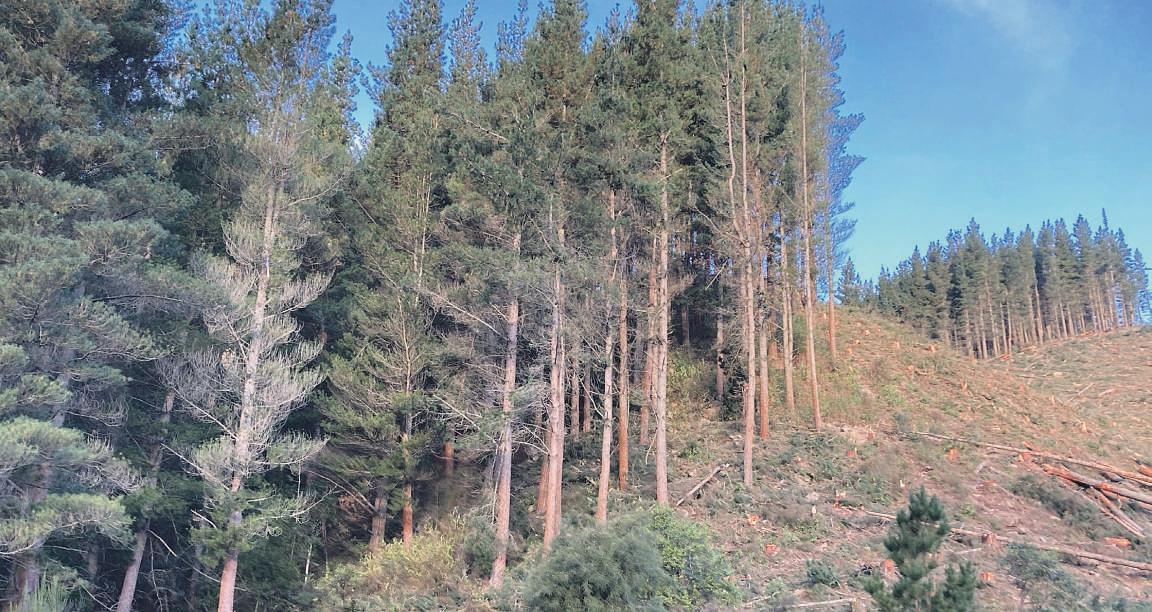
Forests can provide:
■ Timber
■ Fibre
■ Carbon sequestration
■ Food
■ Medicine
■ Landscaping/aesthetics
■ Social health
■ Ecosystem health
■ Cultural experience
■ Protection of wāhi tapu sites
(These are places held in reverence
according to tribal custom and history) Māori are a significant workforce within forestry, with approximately 14,000 workers making up 34% of the national forestry workforce. In some regions, this percentage is much more significant, and indeed the industry would struggle without this input.
The introduction of the New Zealand Emissions Trading Scheme (NZ ETS) added another earlier revenue stream for Māori land owners, as opposed to longer term harvest returns. Māori land owners are often
the best placed to facilitate pine planted for early carbon sequestration transitioning to native forests. They have permanence on the land and will undertake the pest and weed control along with other management interventions required for this transition to occur. (This is another source of local employment).
They have a collective and personal stake in the outcome due to their long-term views and inherent desire to care for future generations. ■

howforestry cancomplementyour farming model,PFOlsen canhelpyou understandwhatareasofyourfarmare mostsuitableand what thepotentialreturnscouldbe.
Farming +Forestry =Farming for thefuture


































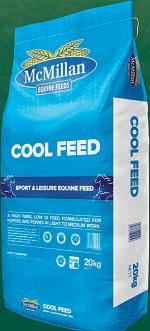

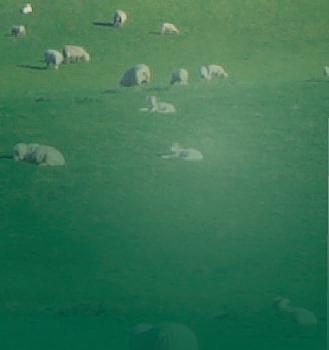
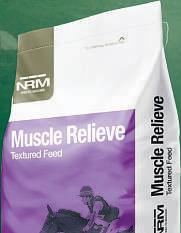

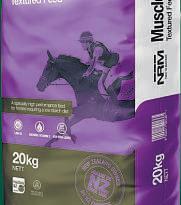






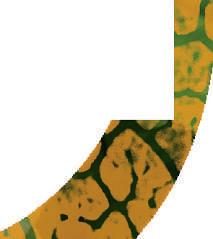






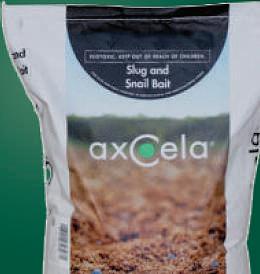


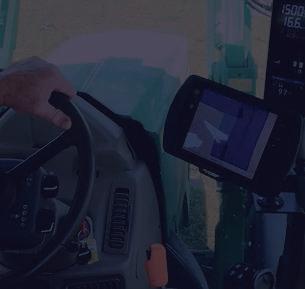
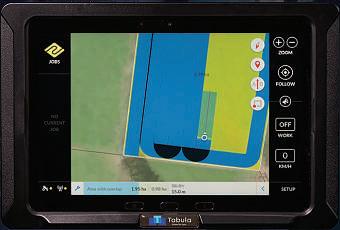
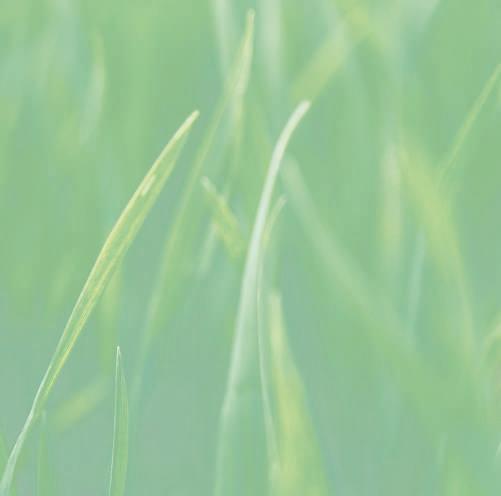


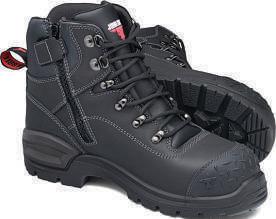
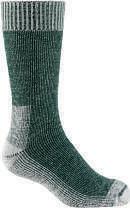






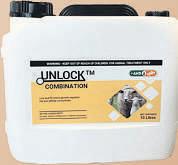
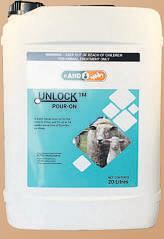
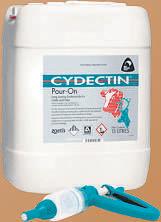


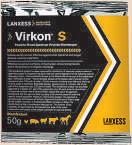





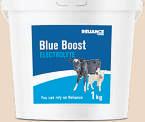











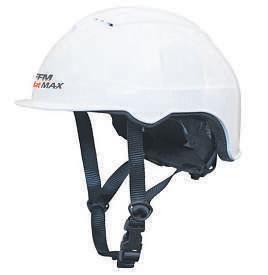








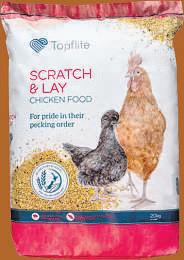
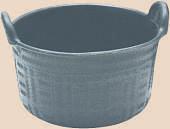

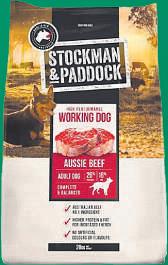






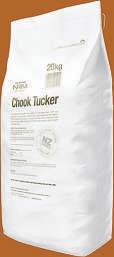






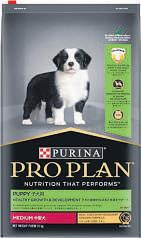

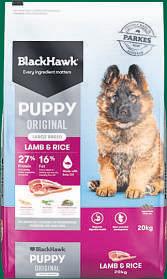






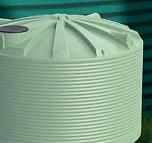





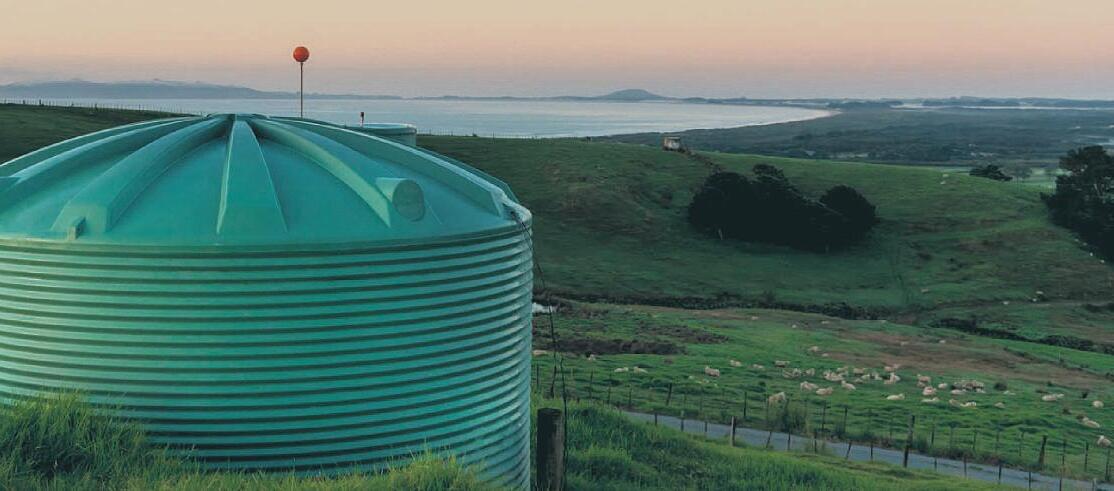








Astrong, farmer-ownedco-op is the best way for farmers and growers to be sure they can access the rural supplies they need, at prices focused on supporting on-farm profitability.
Farmlands' Board is largely madeupof elected Directors who understand what it meanstoown an agriculture business in Aotearoa. Maintaining astrongpipeline of Shareholder Directors with sector experience is critical to Farmlands’future, says Rob Hewett, Farmlands’Chair since 2019
“We needa talent pool of well-qualified people with ability to govern in the best interests of the company,”
Years ago Rob, recognised in 2023as New Zealand Deloitte Top200 Chairperson of the Year, made adeliberate decision to put as much business through co-operatives as he could,because he saw how important their continuing existence was to the rural sectors’influence, relevance and on-farm profitability.
“As asupplies co-op, owned and governed by its members,Farmlands has
one collective goal –todeliver the best possible pricing to New Zealand farmers and growers, full stop,tosupport on-farm and orchard productivity and profitability.”
Rob notes that the fiduciary duties of governing acompany the size and complexity of Farmlands are large –and increasing.
“Farmlands has avested interest in and is very committed to playing its part in growing rural sector governance capabilities among our shareholders.”
The co-op supports programmes like ‘To The Core’ and runs its ownBoard Observer programme. The co-op’smost recentlyelected Board member, South Otago dairy and beeffarmer Will Clarke, (a To The Coregraduate and prior FarmlandsBoard Observer)isproof of the effectivenessof Farmlands’ approach.
“It’s pleasing to see our programmes make adifference. They helptoadd abit of certainty to the process, by exposing participants to the issues the co-opis facing so that they’re better equippedto get off to agood start when they join the Board” says Rob.
He says that these programme are just one way to gain some governance skills and experience.
“Our Director election process is all about unearthing arange of expertiseand experience from across our shareholder base. We want to hear from capable candidates who know what farmers and growers need today, and who understand emerging opportunities and technology.”
There’s never been amore interesting time to be on the Farmlands’ Board as the co-op focuses on its core mission: to be the first-choice input supplier for New Zealand farmers and growers.
Farmlands is undergoing alarge-scale programme of change that’s dedicated to the delivery of more value and support to customers, with ongoing work to improve the co-op’ssupply chain, and to develop a suite of digital toolstohelp customers get what they need from the co-op.■
To
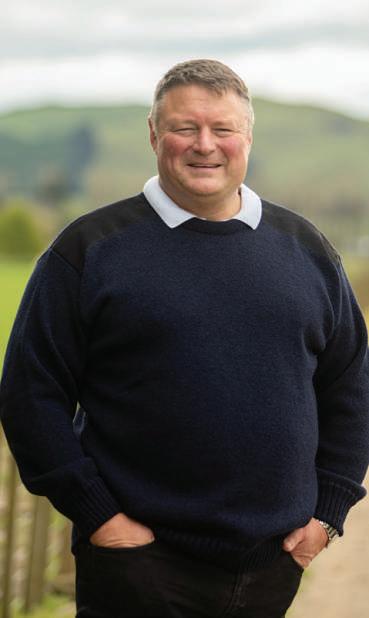
You canrequest a nomination pack by calling the election helpline on 0800666 047 or emailing iro@electionz.com. Nominations close at midday on Friday 26 April 2024
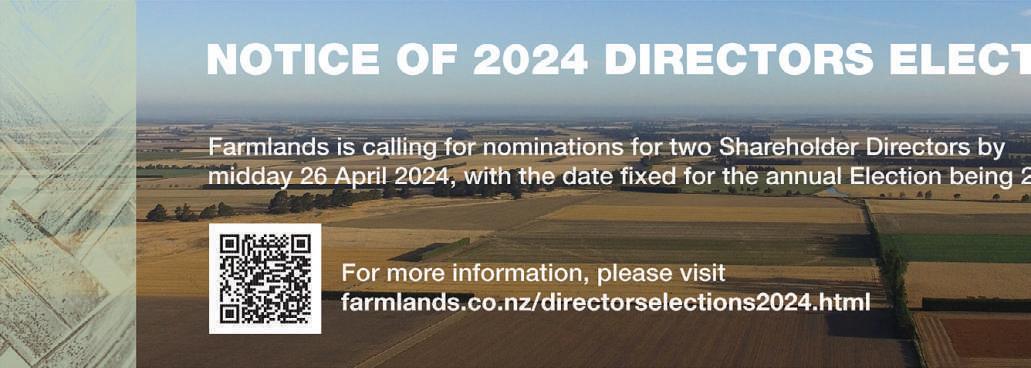
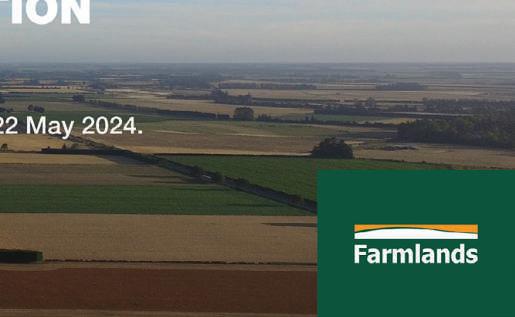



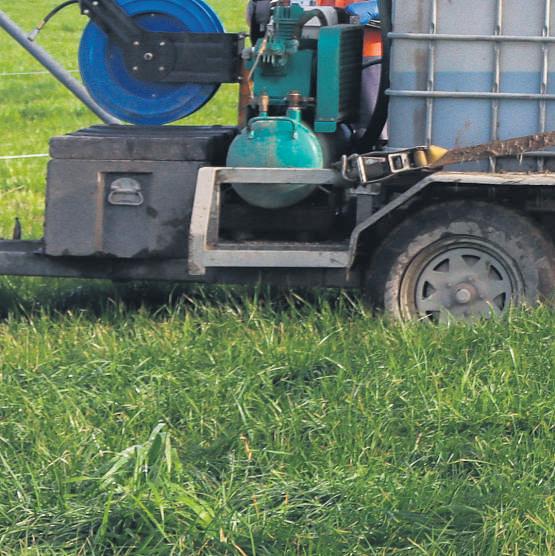

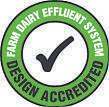
Sustainability is at the heart of an innovative business unleashing the superpowers of wool by showcasing the endless opportunities.By Eve Hyslop.
Innovators say they have only scratched the surface of the sustainability potential of wool and there is much more to the natural fibres than meets the eye. From mulch mats as a suppressant to weeds and a nutrient provider, to good old homespuns and merino garments for its acclimatising abilities, wool is a versatile product with many uses.
Hemprino is one innovator unleashing the superpowers of wool to create sustainable woollen garments
Hemprino co-founder Harriet Bell says they wanted to take a more natural approach to a merino blend which is often blended with a synthetic component. That’s where they came across hemp, a natural fibre that provides stability and shape.
Bell says hemp is the strongest fibre on the planet and one that keeps on giving, needing very little inputs to grow while cleaning the soil that it grows in Hemprino sources its hemp from the United States, Canada, China and Turkiye. They hope Kiwis get the opportunity to grow hemp on their farms in the future due to its contribution to the environment.
Bell says New Zealand still has a lot to learn about hemp, which is often mistaken for marijuana. “We used to get people saying, can we smoke your jerseys?”
Despite the odd question or two, Bell says this uneducated narrative has changed a lot in recent years, with the implementation of hemp seed oil in superfoods, skincare and cosmetics.
Bell says the versatility of wool and merino make them easy to implement into a lifestyle with little environmental footprint. Hemprino aims to leave no trace, producing garments made of 100% natural, biodegradable fibres.
“You very rarely see people look at a garment and actually read the care label. So you can see on our label, it’s like reading your ingredients on the back of a [food] packet, that’s 80% merino 20% hemp, I know exactly what’s in this item It’s an educational piece I guess.”
Time and again, Kiwis young and old are being shown the benefits of wool and its sustainable properties. A science experiment at St John’s primary school in Manitoto showcased this in 2018 burying a synthetic school jersey and a woollen windbreaker with a plastic lining and zip from PGG Wrightson.
In 2023, the results were in The synthetic jersey was unearthed fully intact and could have been washed and worn again, while the woollen jersey had almost completely biodegraded, leaving only the plastic lining and zip.
Through degradation the woollen jersey had fertilised the soil and fed the grass roots. The cycle was complete; the grass provided high quality feed for sheep, enabling them to produce more wool and continue the sustainable journey. Wool.Life’s products follow a similar


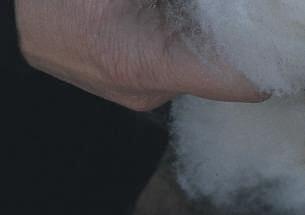
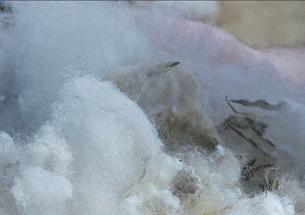

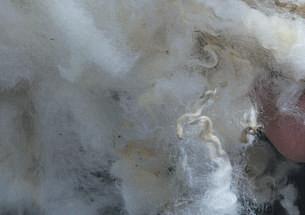

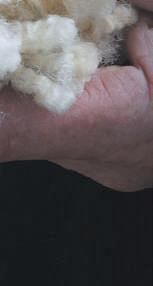
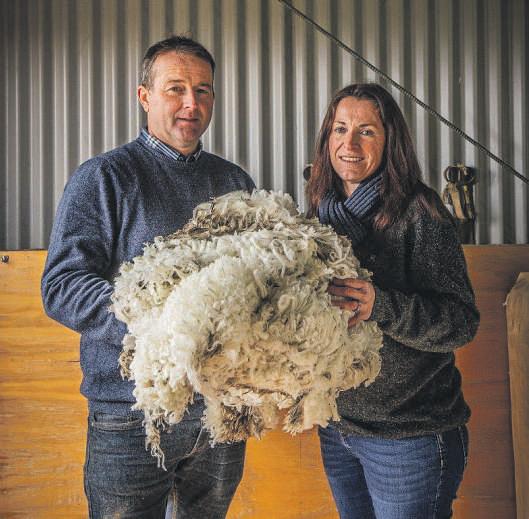
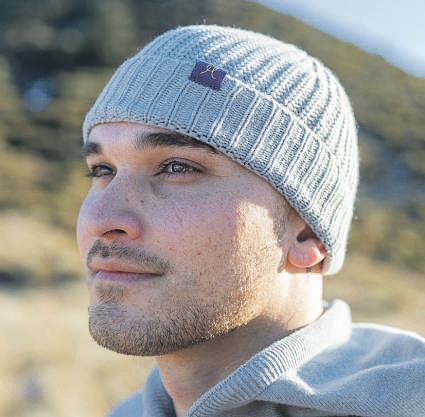

cycle. Before low value clippings and ‘out-of-spec’ wool finish their journey at landfill, Wool.Life collects this to create sustainable mulch squares and mats for trees, gardens and plantings.
Much like dags covering the garden, Wool.Life managing director Gareth Mentzer says the woollen mulch coverings suppress weeds, retain moisture, deter pests and nurture the soil as they degrade.
In recovering the wool initially destined for landfill, Mentzer says sustainability is at the heart of their business. “This is a material that once upon a time was being disposed of, but now has been turned into a product that can be used in landscaping and a variety of other opportunities as well, which is pretty cool.”
Within the first 12 months of operating, Wool.Life had customers repurchase its products five or six times.
“It’s a testament to the power of the
fibre and the quality of the product that people are prepared to come back and purchase more,” Mentzer says.
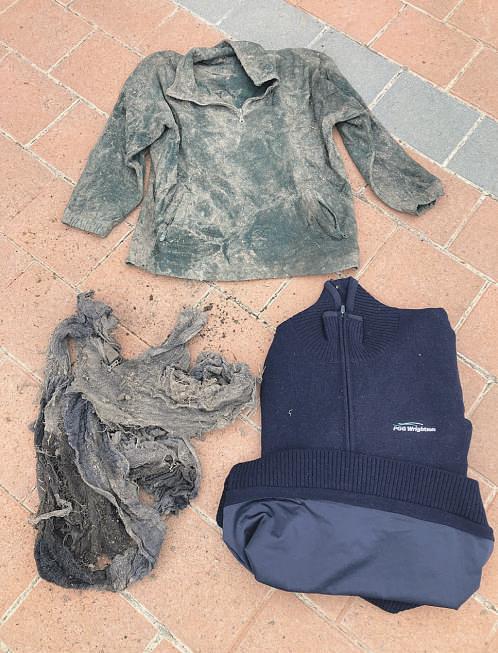
As a company that produces wool products, Wool.Life stays loyal to its source and home grown products.
“Our corporate shirts and jerseys are merino, because why would we make wool products but then go and buy other materials? It’s just about supporting where we can.”
Davaar and Co founder Kate Macdonald plays an important role in bringing awareness to the industry. She often educates customers on wool’s environmental benefits and tells the story behind her business on Davaar Station, where her wool is grown.
The story is rooted in a deep family history, which saw the deaths of three
sons across two Macdonald generations, a week-long snow storm resulting in massive stock losses and a revival of the land in the 1940s, which grew fescue seed as a profitable source of income.
Macdonald says she tells the history of Davaar Station to connect customers with where their product comes from. “To be able to purchase a jersey from a family that’s been working the land
for that amount of time is very special.”
Farming on Davaar Station decades ago saw wool prices much higher than the current market which is sitting at around $3 per kg. Macdonald says she has found ways to diversify her business so she is not reliant on wool prices.
“It’s very different now, wool has very little value in this current economic climate and has been this way for decades. I’m adding value to crossbred wool in a cool, unique way.”
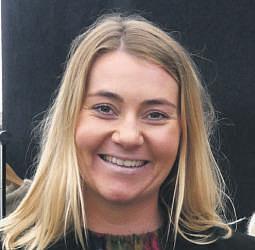
what we are doing on farm to better the environment fencing waterways, improving soil health and educate others.
“They are our stories to tell, and if we don't, the space is filled by others telling them for us.”
She’s brought the humble homespun back into fashion by turning it into a garment that anyone can wear, at any time.
“You can wear it however you like It’s a very versatile and timeless piece of clothing. It’s part of a capsule wardrobe that isn’t going to go out of fashion.”
Mentzer said the opportunities are endless for businesses to start implementing wool into their products, they just have to know where to look.
“I think that the sky’s the limit really. It’s just finding those current synthetic materials that can be replaced by wool.” Bell is also familiar with the challenges of rising costs and the misinformation around farming operations. Rather than giving misery company, she encourages farmers to get out and get to it.
“Sometimes we sit in our farming echo chamber, frustrated at the false narratives being told about us Instead, we need to put ourselves out there, tell our stories
From the 1990s, farmers started adopting the use of synthetic materials such as gore-tex, poly-propylene and polar fleece. Chief executive of Bremworth Greg Smith says since synthetics were introduced, the carpet market went from 90% wool to 90% synthetic.
In recent weeks, support for wool has been pasted across government papers, with requirements being made for government agencies to select wool over synthetic materials in building specifications.
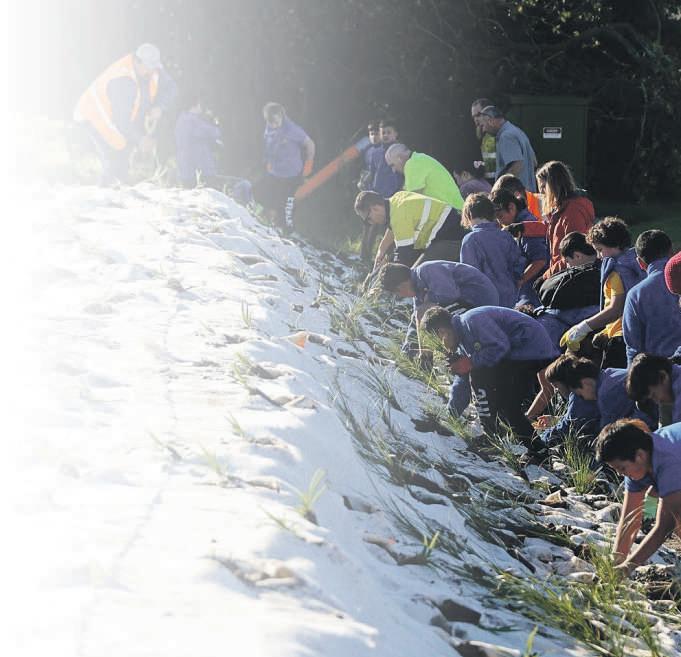
Smith says the requirement could be transformative for the industry, finally reflecting the sustainable reputation wool holds.
“In contrast with synthetic textiles used in construction, wool is a natural product that requires less chemicals and is naturally fire retardant Woollen carpets are also hypoallergenic and regulate humidity by absorbing moisture when the air is moist and releasing it when the air is dry.” ■


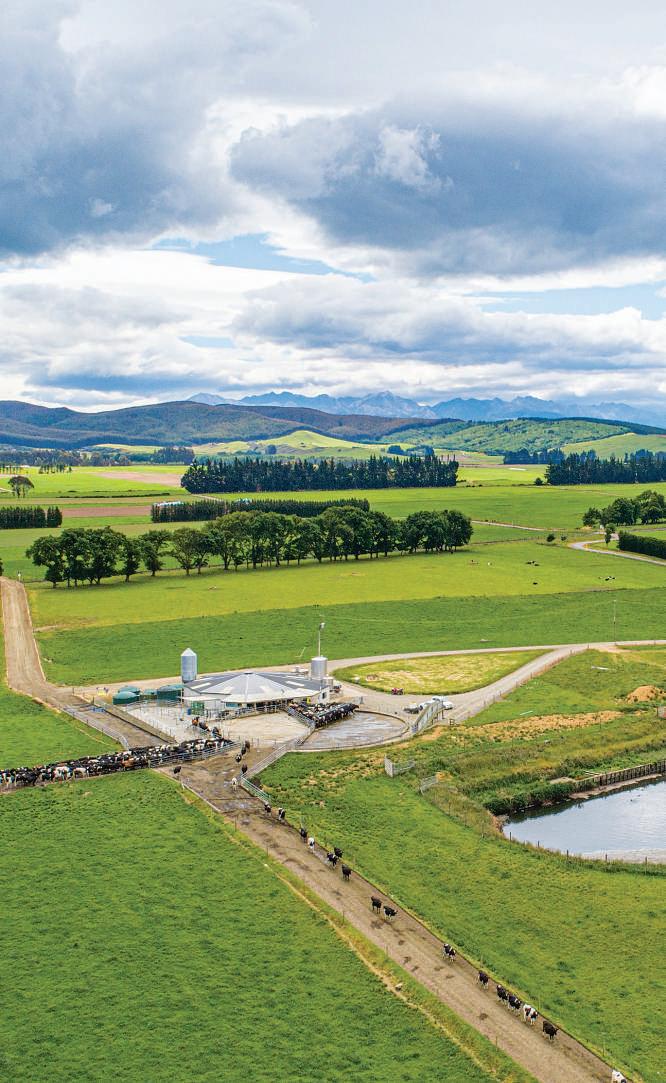
A Waikato farmer wants a portion of his rates used for biodiversity and habitat enhancement.
By Bethwyn Littler.Johan and Kylie van Ras milk 215 cows on 66 hectares of effective land in Piako.
“Riparian planting takes 20 or 30 years to make an impact so lets get those rates working I’d love our whole country to have good buffer zones If we all did it we could have corridors of amazing landscapes,” says van Ras.
Spending this money on rates is just one of his many ideas of how councils can support healthy waterways and wetlands. Just a few years of planting has lead to the return of piwakawaka, tūī and native fish on his dairy farm.
“The farm doesn’t stop at the waterway fence,” he says. “You are connected with the rest of New Zealand through the water that runs through your property.”
A field day on April 23 at the van Ras’ farm will showcase the work he and his family have done and encourage discussion about what else Waikato farmers can do to meet environmental objectives profitably.
“Farmers are already doing a great job, but if we really want collective catchment work to happen, putting it all on farmers is too hard.”
Van Ras says wants to encourage
community connection. “The field day here is for solutions that can actually help.”
The event is open to farmers but van Ras is hoping to have visitors from local councils so people making the big decisions can physically stand on the land and see the effects.
“Everyone pays rates, and part of those rates go to catchment work so the field day is for people to stand in the paddock and actually feel the change. I can tell them what it costs and what impact it has on the whole catchment.”
He and wife Kylie have been developing a wetland and planting the waterway on the farm. After more than a decade of planning and just three years since they put the first native trees in the ground the area is rich with biodiversity. There are eels in the water and fantails in the air.
“We are proud of what we have done. I hadn’t seen a tūī on the farm in our 12 years here, yesterday I took a photo of one.Visually, you can see the changes. Hopefully, we’ll get some matuku-hūrepo (Australasian bittern) soon, that will make me think we’ve won Lotto.”
The family has built a profitable business at Waiorongomai Valley Farm in order to create a strong foundation so they could use part of their profit to enhance the environment.
“You can’t be green if you are in the red.”
His parents emigrated from the Netherlands in 1982 and worked on the farm circuit when he was a child. Starting off as farm workers, they became share and worked their way to ownership in 1996.
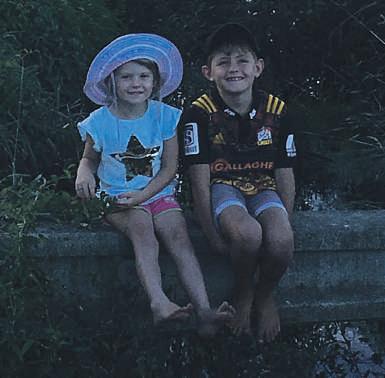


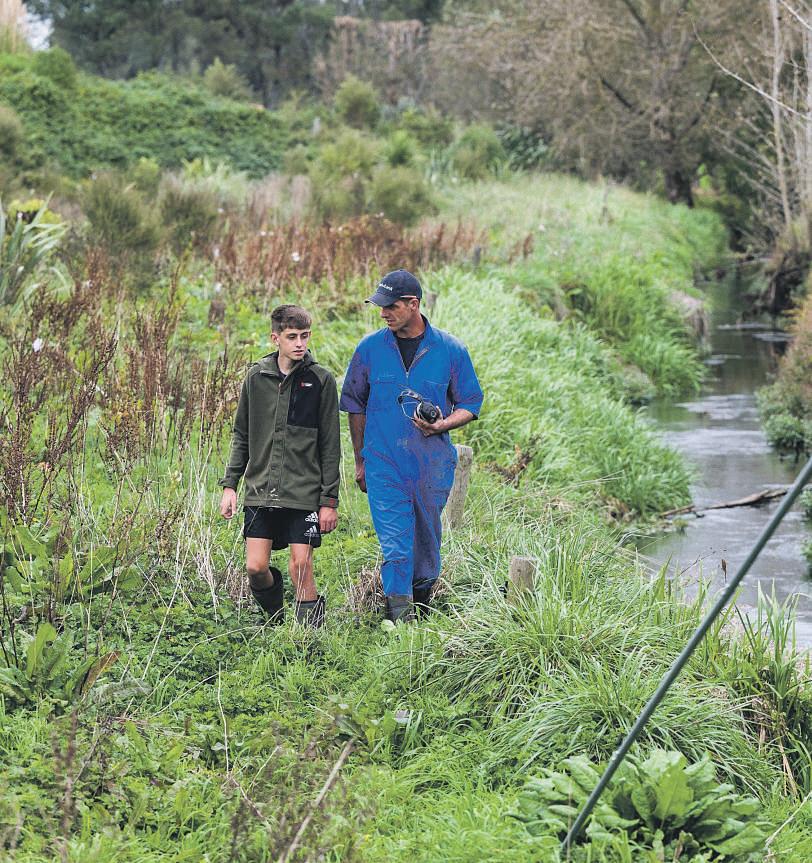
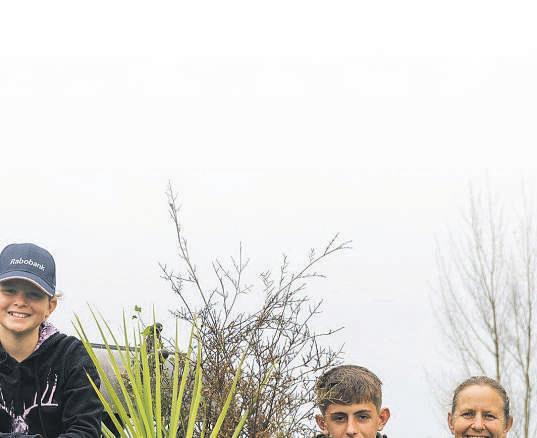
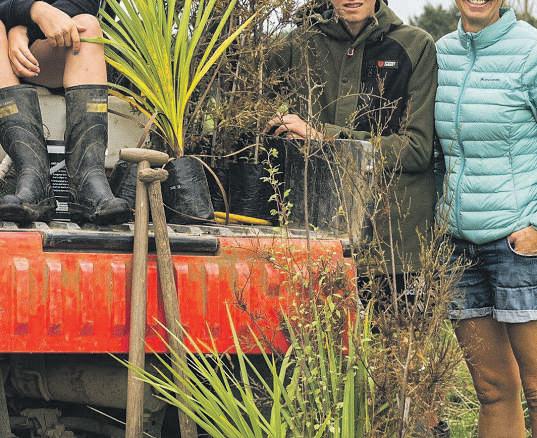

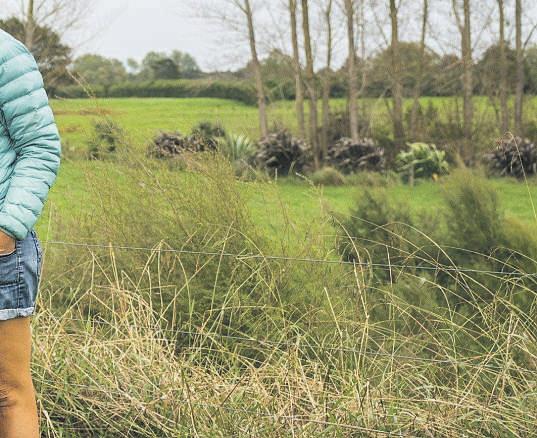

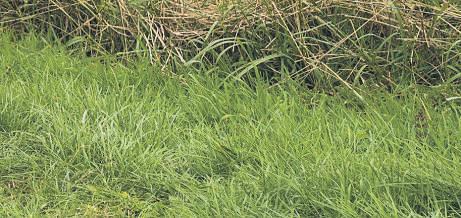
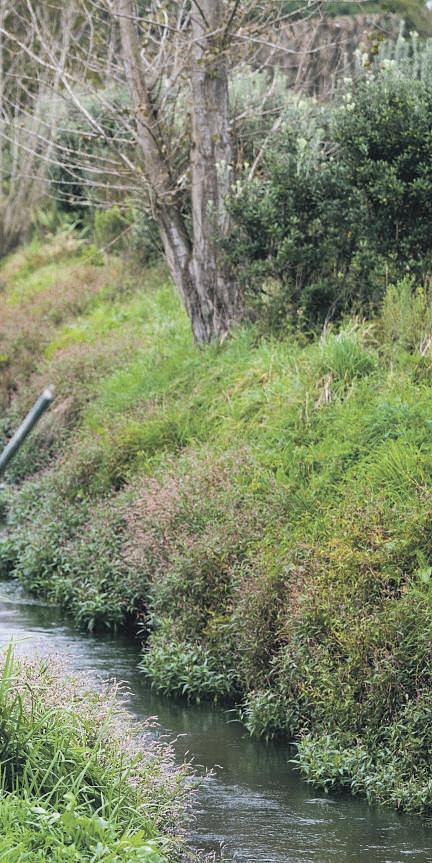

He says his parents put the effort in for him and his family.
“When you get older you realise the sacrifice they put in.”
After leasing another farm for six years they purchased the Piako farm together with his parents in 2010. In 2020, they retired a 4.5ha block of poor pasture production land and turned it into a native wetland as well as planting the drain running through the property.
The drain running through the farm which was previously council maintained is now a thriving waterway full of life, including eels and native fish The planting of native grasses with super strong root structures holds the banks together as well as cooling the water and stopping weeds and sediment.
In 2021, they won the Waikato Ballance Farm Environment Awards Supreme Award. They saw this as a positive opportunity to share their story of influencing change.
Last year they employed a contract milker and van Ras got a job with DairyNZ working with the Pokaiwhenua catchment group and the iwi of Raukawa. The Pokaiwhenua River runs from Tokoroa to Lake Karapiro.
“We are trying to bring in the knowledge from iwi. By bringing together knowledge from Raukawa and western scientific knowledge we are working together to help restore the catchment through connection.
“DairyNZ is providing scientific analysis such as the eDNA sampling which analyses data at a catchment scale.
“This helps with mitigation decisionmaking as well as providing science knowledge to help with decisions on improving the mahinga kai (food produce practices) in the catchment.” ■
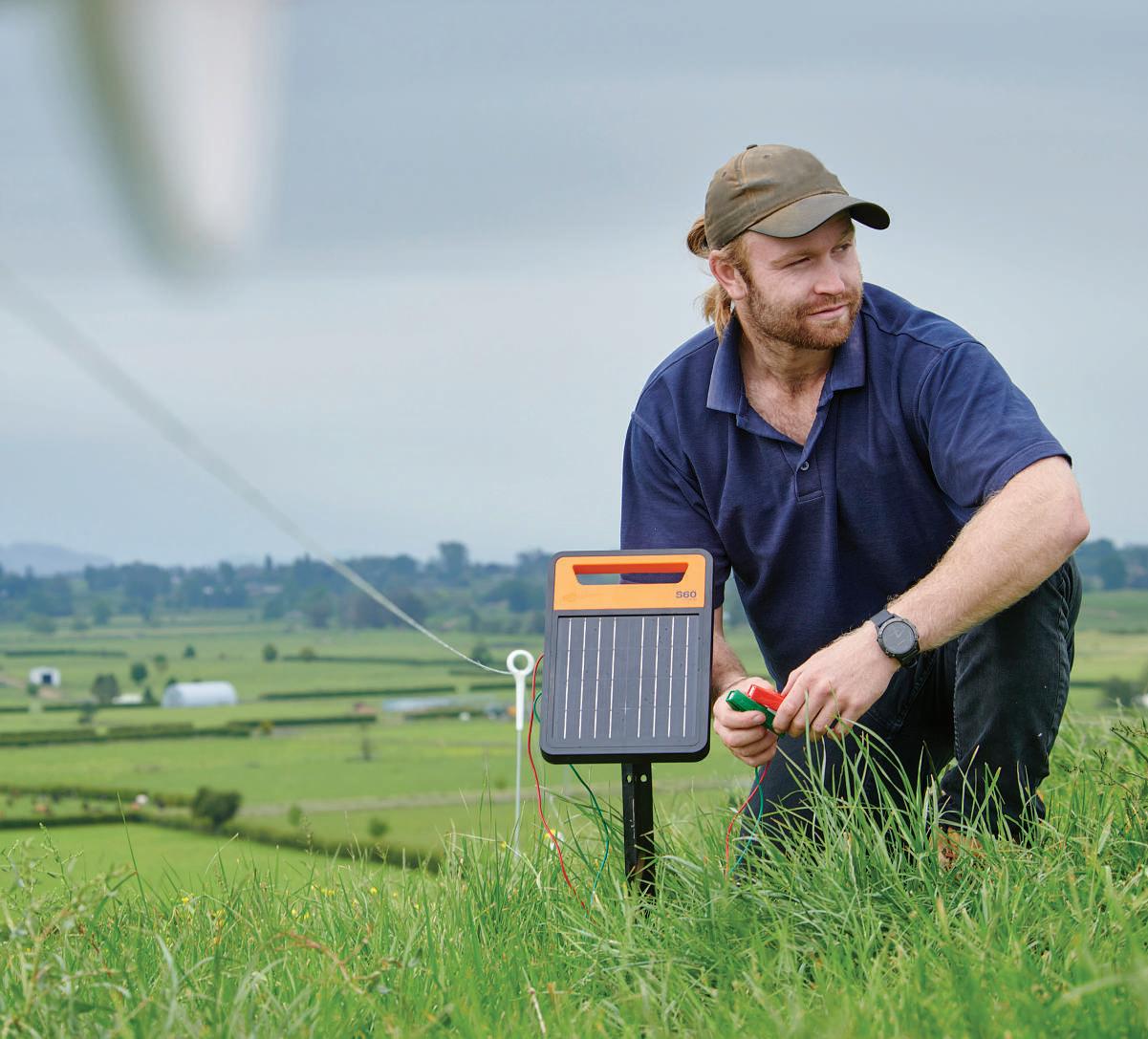
A family duo have a plan to help safeguard Kaipara Moana Harbour, writes Steve Macmillan.
The father and son team of Johnny and Jordan Hildreth have a clear plan for protecting waterways, wetlands and steeper hillsides on their Woodhill Farm.
They have teamed up with the Kaipara Moana Remediation programme to fence selected areas of their 200-hectare sheep and beef unit.
Johnny initially leased the land from his father Peter before buying the 140ha home block in 1986. He purchased a neighbouring 60ha farm in the early 2000s and has been caring for the land since – more recently with the help of his son Jordan.
They now run 300 romney cross breeding ewes, trade 500 to 1000 lambs, and run between 200 and 300 cattle
That is why the pair were keen to align with the Kaipara Moana Remediation programme because they see the value of helping protect the Kaipara Moana by fencing off waterways and wetlands and planting them in natives – while at the same time benefiting their farm.
In 2022 they planted 4500 trees and put in 250 metres of new fence line, while in 2023 they planted 800 more trees and put in a further 450m of fencing in readiness for the 2024 planting season.
They have also mapped out a plan to
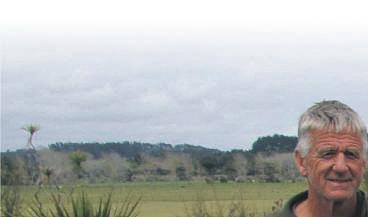
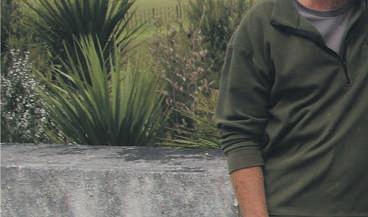


At a glance: Kaipara Moana
■ The Kaipara Moana is the largest harbour in the Southern Hemisphere, home to rare and threatened species and habitats. The harbour has major economic value as the breeding ground for New Zealand’s snapper fishery. However, high sediment levels have put this at risk
■ In October 2020, the Ministry for the Environment, Kaipara Uri (Ngā Maunga Whakahii o Kaipara, Te Rūnanga o Ngāti Whātua, Te Uri o Hau), Northland Regional Council and Auckland Council signed a Memorandum of Understanding to jointly protect and restore the mauri of the Kaipara Moana.
■ Kaipara Moana Remediation (KMR) is a multi-year programme which invests in projects with the long-term aim of halving sediment flows into the Kaipara Moana As a Jobs for Nature investment, KMR also supports local, nature-based employment, training, and accreditation.
retire areas of steeper, less-productive hillsides and those efforts could begin later in 2024 (with at least 400m of new fencing), ready for native planting from 2025 and beyond.
Johnny says they have identified more areas around the farm (totalling 10ha), which they would love to fence off and plant as finances allow.
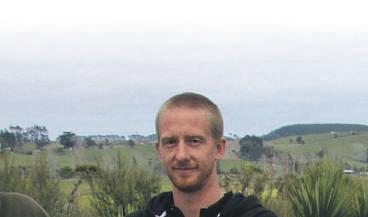
“When Poppa broke in the farm, he clearly had a bit of an environmental bent because he did not open up everything in
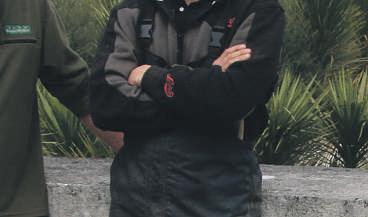

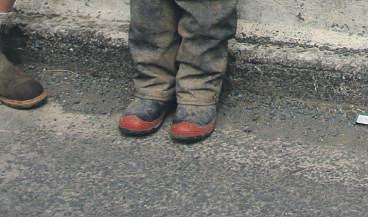


search of every blade of grass,” says Jordan.
“With our KMR partnership we are focusing on medium plantings and locking up gullies and waterways to go with 45ha of native bush already fenced off including 16ha of a former pine tree block where we replanted with 10,000 mānuka after harvest in 2019.”
The father and son partnership say the way their river flats keep flooding so frequently, there could be merit one day in putting some of that land back into kahikatea and other natives, as they once used to be.
They did that with Auckland Council’s ‘Trees for Survival’ programme in conjunction with two Auckland schools, one primary and one secondary school, in 2017, when they planted natives along the banks of the Kaipara River which runs through the property.
Those plants are thriving and are visible from State Highway 16
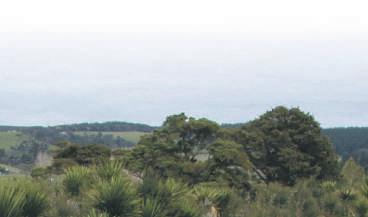
Jordan says the KMR planting rates recommended for hillsides and slips of about 2500-4000 plants per ha, and up to
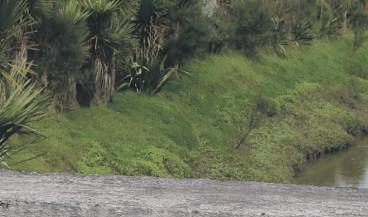

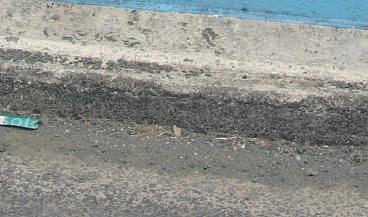

9000 plants per hectare for wetlands and waterways, makes sense.
Johnny says: “If you have good people driving a programme like KMR it makes all the difference. Being in communication with people who are passionate about the environment, with an understanding of how things work on farm, means problems are easily solved.
“We are setting the scene now for what is to come. Nibbling away at fencing and planting gets the ball rolling and we would love to see all of our river and wetlands planted. As farmers, if you can get this sort of activity up your priority list for spending it is hugely rewarding.”
The Hildreths say they are thrilled with the KMR programme.
Meanwhile, KMR is keen to hear from landowners who are thinking of fencing this summer or planting next winter. ■
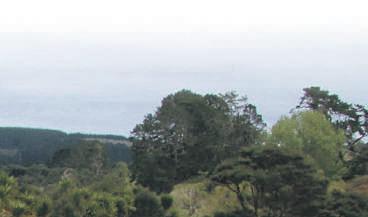
For more details or to ask about KMR’s funding to protect waterways and erosionprone hillsides, email hono@kmr.org.nz.
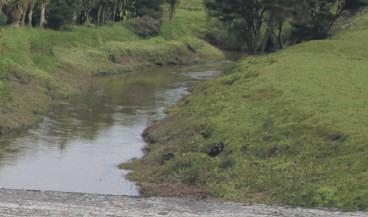




● April 17-20 and May 9-11
Farmstrong
TheBitches’BoxComedyShows, Gisborne,Wairarapa,Tararuaand
Manawatū
The Bitches’Box’s fourth live showsees actors Emma Newborn and Amelia Dunbar revisiting some of their most loved dog characters Set on a High Countrystation on a daywhen the sheep are being mustered off the back blocks,the usual chaos ensues.So start rounding up your mates,neighbours or team,as you don’t want to miss out on a great night of laughs and fun.
Info at farmstrong.co.nz/events
● April 17, Dairy Women’s Network BridgingTheStaffingGap, livewebinar
Join AG Work as it helps to inform and educate you on the benefits,process and costs of employing dairystaff from the United Kingdom and Ireland
AG Work NZ offers a matchmaking service to source suitable overseas staff bespoke to each employer.It hasvalued links between the main agricultural universities and colleges,and a large network of social media and Young Farmers connections to fulfil roles. Info at dwn.co.nz/events
● April 18, DairyNZ UdderlySuccessfulSeasonToolbox, InglewoodandŌpunake
You can improve next season now. Find out howto set yourself up for a successful season come June 2024. With changes to weather conditions throughout the year,and increases in prices and interest rates,it’s important to ensure you have set yourself and your
business up in a position to best take on the season ahead.
Info at dairynz.co.nz/events
● April 23, DairyNZ Smartsupplement,Ashburton
DairyNZ and FarmWise present this workshop on the smart use of supplements Matt Cassineri,of FarmWise,will take us through how we can feed supplements profitably, byunderstanding the principles of substitution,limiting factors,and timing. Info at dairynz.co.nz/events
● April 23, Dairy Women’s Network ManagingOn-FarmRisk:Exploring MilkPriceHedgingTools,livewebinar
Join James Atkins,from NZX,to learn about the price risk management tools available to manage your exposure to a fluctuating milk price,what to consider when developing a hedging policy,and howto access the futures market.
Info at dwn.co.nz/events
● April 23, B+LNZ
B+LNZWinterCroppingWorkshop, Ohakune
Attend an insightful event focusing on optimising winter cropping practices at Hamish Blackburn’s Farm.Featuring expert speakers
Info at beeflambnz.com/events
● April 23, B+LNZ
B+LNZAgronomyThroughThe Seasonsworkshops:autumnto winter,Bankside
Beef + Lamb NewZealand and Agricom invite you to the first in a seasonal series of Agronomy101 workshops
Info at beeflambnz.com/events
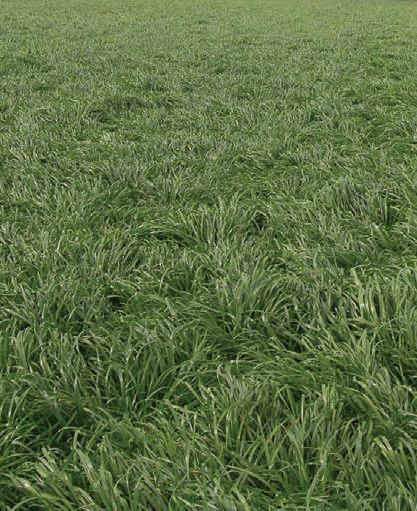

● April 29 and May 2, B+LNZ B+LNZBetterBeefBreeding Workshops:SelectingForSuccess, FiveForksandRoxburgh
Get the best return on investment this bull-buying season with the knowledge and confidence to select bulls that fit your farm’s breeding objectives and will shape your herd’s financial performance for years to come.
Info at beeflambnz.com/events
● May 1 and 8, DairyNZ PastureSummitFieldDay,Bayof PlentyandSouthland
Organised byfarmers for farmers –turning grass to milk to cash,herd reproduction,discussion on equity growth pathways,and more. Registration essential.
Info at dairynz.co.nz/events
● May 2, Dairy Women’s Network ENHANCE.ELEVATE.EVOLVE.Dairy Women’sNetworkConference2024
Get readyfor an empowering experience at this year’s DWN Conference in New Plymouth at the Plymouth International Hotel.
Info at dwn.co.nz/events
● May 8, B+LNZ B+LNZAllThingsWormyWorkshop, Waiau
All Things Wormyis your guide to implementing strategies on-farm to beat internal parasites at their game,creating a sustainable wayforward so that effective drenching can remain a tool you have to manage the burden
Info at beeflambnz.com/events
● May 10, Farmstrong




FarmstrongandRuralSupportTrust ComedyShow,Rotorua
Farmstrong and the Rural Support Trust are bringing a comedyshowto rural Rotorua with an all-star lineup featuring Tarun Mohanbhai,El Jaguar,Sera Devcich and Tevita Manukia Grab your mates and neighbours or treat your team to a great night of comedy.
Info at farmstrong.co.nz/events
● Ballance Farm Environment Awards
Opendays,variousdatesandlocations
Come along to learn howthe winners operate their business.
Info at beeflambnz.com/events
● NZFFA NZFFAAlternativeToPineOnYour Farmfielddays,variousdatesand locations
Want to grow some trees on your farm but not pines? Come and see some great examples at free field days between now and June
Info at nzffa.org.nz/events
● Dairy Women’s Network FirstAidOnFarmscourses
Join us for a First Aid On Farms course. This workshop has been tailored for the network’s members byPractical Training Solutions in consultation with farmers.It was developed based on a First Aid Needs Assessment for New Zealand dairyfarms to meet WorkSafe compliance requirements.
Info at dwn.co.nz/events ■
Check out the various websites for more events



When Covid-19 hit and borders closed, one woman, who had no choice but to stay, carved out a new career in agriculture. By Anna Brankin.
For Sonya Prosser, a visit home to Aotearoa New Zealand in 2020 turned into a permanent pandemic-induced stay. Unable to return to the career she had carved out for herself in Southeast Asia, she took a job at Walter Peak High Country Farm, on the shores of Lake Whakatipu
Now, she’s merging her lifelong dedication to conservation with her newfound agricultural skills to plant the seeds of a new future for her family and wider community in Rarotonga.
“I’ve always liked hard work, and I’ve never been afraid to get stuck in and get my hands dirty, which is what all my jobs have had in common,” Prsser, 49, says “But the biggest common factor is definitely conservation, which I’ve always considered to be my main purpose in life.”
This purpose first emerged in her teenage years, when she began volunteering at Orana Wildlife Park, just outside Ōtautahi Christchurch.
“I’d grown up watching David Attenborough and reading about Jane Goodall and Dian Fossey, and I developed a real love for great apes,” she says.
“Mum was really good at helping me follow that by taking me out to Orana Park while I was still in high school, and that led to a job there pretty much as soon as I finished.”
By the time she was 21, she was working as a zookeeper at Melbourne Zoo, primarily working with primates and large carnivores.
“I spent quite a long time working with them in captivity and it was marvellous getting to know individual animals and having them get to know you,” she reflects.
“I do miss it, but eventually I realised it was time to move on because I really did feel the pressure of playing god with such magnificent creatures, having to make these big decisions for animals that are in captivity.”
Prosser harnessed that preservation mindset with stints at conservation organisations across East and Southeast Asia.
“I came back to New Zealand in 2020 for a holiday and Covid-19 hit,” she says wryly.
“I was due to fly out the day that everything closed down. I wasn’t able to leave and then my Laos business visa ran out. It became impossible to return to my previous life, so I made a new one.”
After taking a handful of free courses through the Southern Institute of Technology, she landed a job three years ago in “absolute paradise” – Walter Peak High Country Farm.
Located at the base of Kā Kamu-aHakitekura Walter Peak near Tāhuna Queenstown, the property is a working merino sheep station that also includes guided farm tours and dining. She is part of a team that looks after the farm infrastructure, such as maintaining the grounds and gardens and running farm demonstrations.
“I’ve been pretty lucky to be able to jump into all the roles that are part of our rural department, beside shearing sheep. “That’s everything from stock work to
running the dogs as part of the workingdog demonstrations we do.”
Not surprisingly, working with the dogs has been her favourite part of her time at Walter Peak.
“Spending time with them, working with them and seeing the joy they get out of doing their job has definitely been the highlight.
“Part of that is also getting to know their personalities and working through some challenges with them.
“They do get bored from time to time and will play up in front of the guests, so it’s making sure to take them out and do some real work with them.’’
Besides that, Prosser has loved learning more about horticulture.
“At the moment, we’re growing and tweaking an eco-tour and a kitchen garden to supply the on-site restaurant.
on-site with our chef what we could grow a can to wants to menu in terms local
“We do have a bit of a microclimate here so we’re working with our executive to see what we could grow here that’s a bit unusual and can contribute to what he want put on the menu in terms of produce.”
Plants on the wishlist include kawakawa, horopito and watercress, and the team ar planning to revegetate certai areas with the native species that would have grown ther originally.
Plants on the wishlist include team are also to certain native species have grown there
conservation work from what


It’s a different type of conservation work from what she’s used to, but she can already see the potential to use her new knowledge in Rarotonga in the Kūki ‘Āirani Cook Islands. Her father signed over a plot of family land to Prosser and her sisters in 20 and she is hoping to use it to make a difference for the local community.
in the ‘Āirani plot of family land Prosser 2023, is to use a
Prosser’s plans are part of relatively recent reconnection to her heritage.
“I was raised by my mother, who was born in England fr an English mother and a New Zealander father of Scottish descent,” she says.
Prosser’s are a was raised by my mother, was born in from a New parallels Pacific culture and the cultures I had
“My father is a Cook Islander. When my mother died in 2022, I felt more freedom to connect with my Pacific heritage, which resonated with me due to the parallels between Pacifi culture and the cultures I had lived in in rural Southeast Asia, particularly Indonesia.
“At the same time, the land was came so to and my two sisters. I was felt a to was
“At the same time, the land that Dad was entitled to came up for confirmation, so I went with him to Raro to get the land signed to myself and my two sisters. I was like, ‘Wow, what am I doing? This is where I need to be.’
“I connected with family there and felt a real draw to the place. I was surrounded by cousins and aunties who

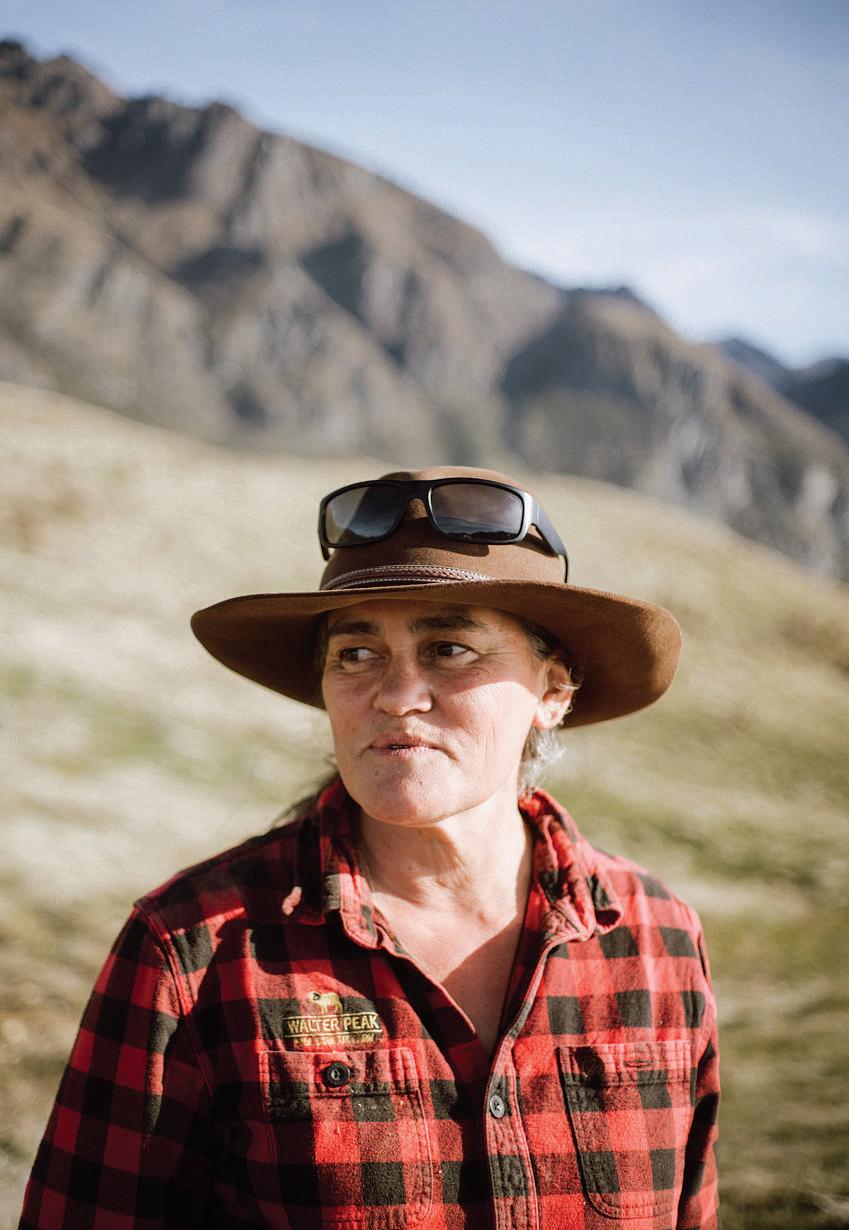




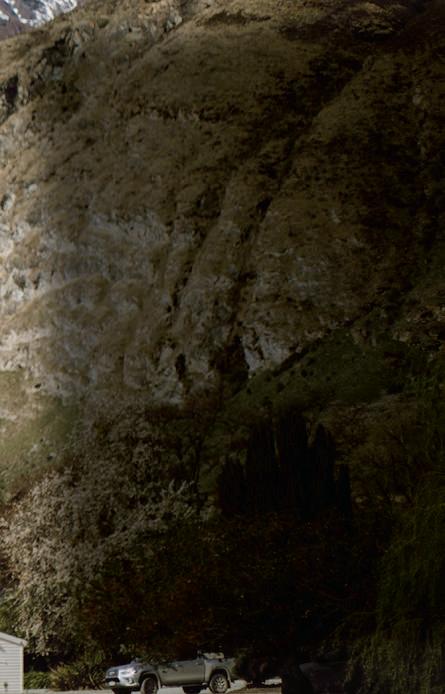

strong, intelligent, driven women. I was particularly inspired by my cousin Jacquie, who is a Goldman vironmental Prize recipient.”
For now, she is content keep enjoying her time at Walter Peak and planning how can split her time between New Zealand and Rarotonga.
are I was a Prize now, content to her at Peak and how she can her Zealand and Rarotonga. a time my was conservation or big cat conservation, at a a little
no real purpose other to she says.
“For a long time my purpose primate conservation or cat conservation, and then Walter Peak I felt like I had a holiday for a little while, with real purpose other than to keep those flowers flowering,” she says.
now I’m at it and that I can use all that about
food and it to the Cook Islands with me. want to off-grid and get involved in organic growing
“But now I’m looking at it differently and realising that can use all that knowledge out soil health and growing food and bring it to the Cook Islands with me. I want to build off-grid and get volved in organic growing and sustainability.
“The amount of food that could be grown to feed local people is amazing, but it’s not reached its potential yet.
‘‘I’m looking into it at the moment to see if there’s a way that my skills and my land could be used to make some kind of impact there in the future.
could be grown to feed local people is but not reached its Above: Sonya Prosser plans to get involved in organic growing and sustainability in Rarotonga.
“I think I’ve found my purpose again.” ■
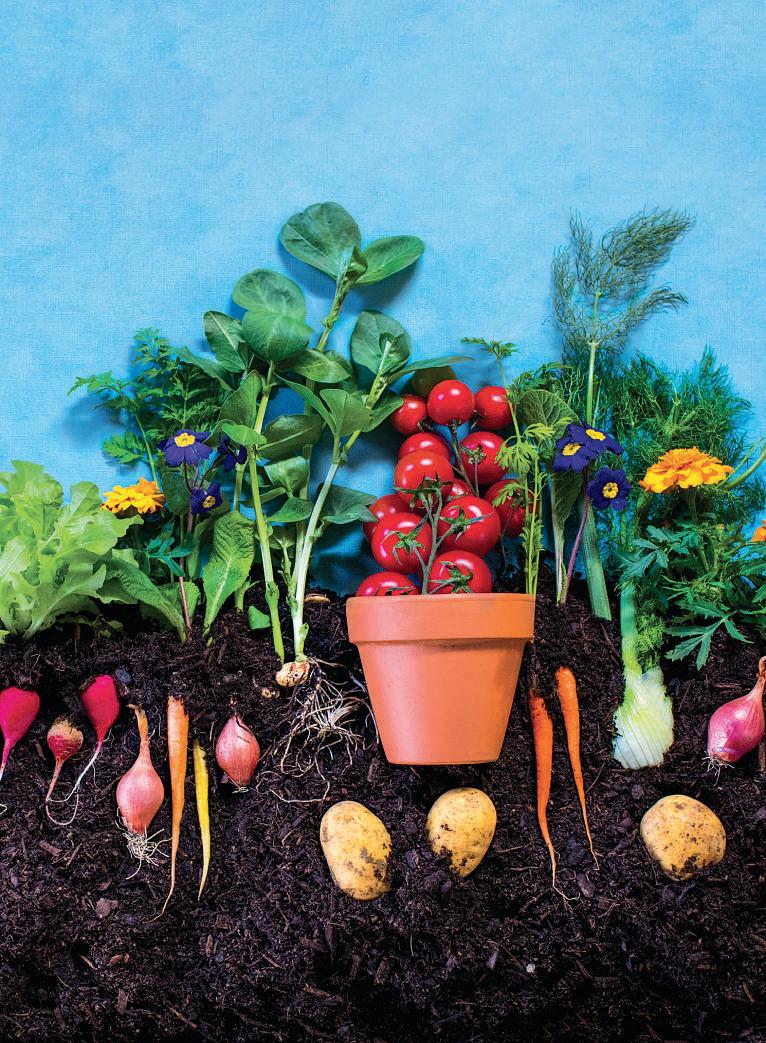























































































































The last group of finalists in the 2024 Dairy Industry Awards have been announced, showing the New Zealand dairy industry is in good hands.
By Anne-Marie Case Miller and Sonita Chandar.Waikato
The major winners in the 2024 Waikato Dairy Industry Awards are great ambassadors, showing their passion for and dedication to the industry
Dairy Manager of the Year Matthew MacDonald overcame a debilitating illness to pursue his desired pathway.
He is now the farm manager for his parents on their 74ha Hamilton farm, milking 255 cows.
MacDonald had a passion for farming since a young age. However, a diagnosis of Hodgkin’s lymphoma in his first year at secondary school slowed his career pathway into the dairy industry.
“I required a stem cell transplant and radiation, meaning leaving school to milk cows wasn’t an option due to ongoing fatigue and recovery.”
He worked on DairyNZ farms before accepting the opportunity to head home to manage the family farm.
“Being part of the backbone of New Zealand, and providing food and fibre to the world, is an awesome job to be in,” he says.
Annie Gill was awarded runner-up in the dairy manager category, and Zac van Dorsten placed third.
Logan and Sian Dawson, who are equity partners and 50:50 sharemilkers for Jim and Sue van der Poel on their 333ha, 1350-cow farm, were announced the Share Farmer of the Year winners.
Dawson has elevated animal welfare to the forefront of his business.
He believes it benefits everyone to value the animals that farmers have the privilege of caring for.
Stephen and Sophie Smyllie were named runner-up, and Stephanie Kay placed third
The Dairy Trainee of the Year was Kirwyn Ellis, who is herd manager for Hamish and Sheree Germann on their 130ha property at Pirongia, milking 475 cows.
Growing up on a dairy farm with a lifelong interest and connection to dairying, Ellis
always had a strong passion for animals and the outdoors.
“I’m in no doubt of the value dairy brings to New Zealand which gives me confidence in choosing dairy as a career,” he says.
Runner-up was Jack Brittenden and third place went to Brad Seager.
Bay of Plenty
The major winners in the 2024 Bay of Plenty Dairy Industry Awards, Sophia Clark and Aaron Mills, say they love their cows and are enjoying their journey in the dairy industry. The couple are 50:50 sharemilking for Bernie Hermann on his 160ha, 540-cow Te Puke farm.
They cite their family and creating a future for their children as motivators.
“Ourvision is ‘enjoying the journey’ which means enjoying our cows and enjoying what we do.”
The couple would like to see some older farm owners change their mindset to help retain young people in the industry.
“We’ve been given so much mentorship and assistance into our first herd from a large-scale business, and we will be forever grateful.”
“I wish I could show young students studying business that dairy is a viable option and sharemilking is a viable framework for building an asset,” Sophia says.
Runners-up were Hayden and Chelsea Goodall, and Thomas Houston placed third.
Dairy Manager of the Year winner was George King, who is the farm manager for Mike and Kaye Watkins on their 161ha Whakatane farm, milking 500 cows
He grew up on rented dairy farms in the UK where his parents operated a New Zealand-style pasture-based system, and holds a Diploma in Agriculture specialising in livestock production





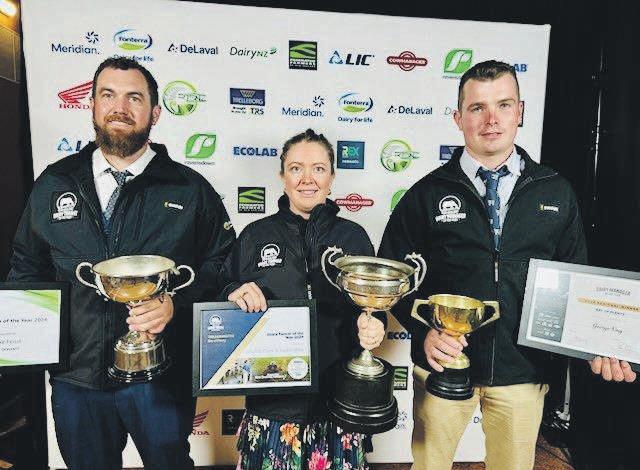
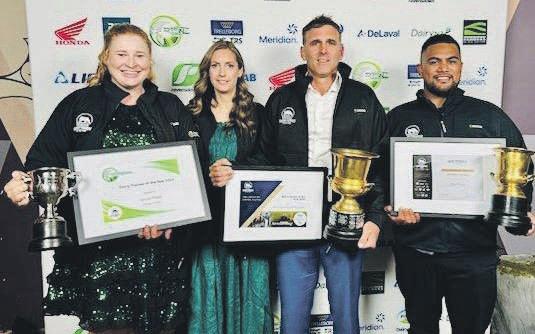









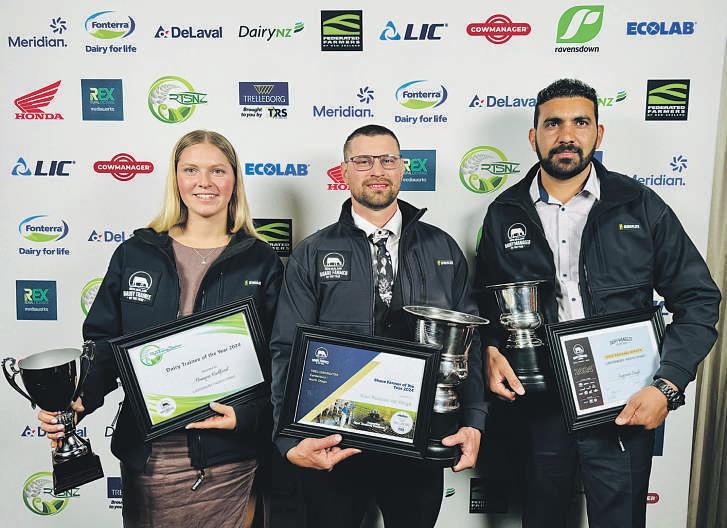








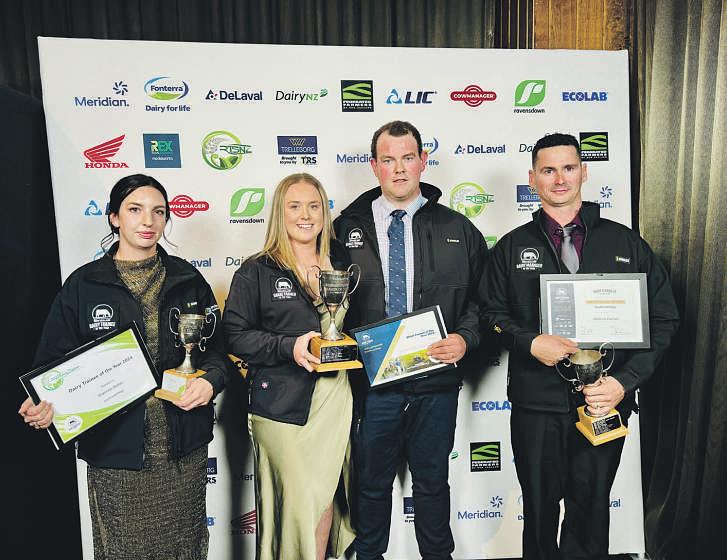
manager role on a 600-cow farm.
“When I was working in New Zealand in 2019, I saw the industry pathway which has been carved by many before me and knew that this is where I needed to be,” he explains.
Lindsay Williams was the runner-up and Reno Moses third place-getter.
Luke Feisst was the Dairy Trainee of the Year winner. He is the assistant manager on Doug Paul’s 114ha, 350-cow property at Te Puke.
The first-time entrant wanted to build his connections and benchmark his abilities while gauging his trajectory within the industry. He entered the industry as a farm
Rerewhakaaitu couple. Paul and Sarah Koopal were announced the winners of the region’s Share Farmer of the Year category at the Central Plateau Dairy Industry Awards annual awards
They contract milk for Anne and Stewart Koopal on their 204ha, 544-cow farm and have been working for 13 years on the family farm with Sarah still working full-time off-farm in a rural banking role.
The lifestyle and opportunity to run their own business initially drew the couple to the dairy industry. However, they soon realised there was a lot a support within the industry and a great network.
Runners-up were Navdeep Singh and Jobanpreet Kaur, and third place was awarded to Buddhiya Alankarage and Chamila Mudalige.
The Dairy Manager of the Year title was won by Ben Purua from Tirau, who is working on Jack and Tiz Scheres’ and Chap and Ashleigh Zwiers’ 187ha property, milking 540 cows.
He has welcomed the progression in technology over the past few years “I’m lucky on my farm we are using a lot of the up-to-date technologies.
“I think that with technology we will be able to bring more young people into farming and I see my role as being a good leader and example.”
Runner-up was Scott Kupa, and Jesse Voysey-Frewen placed third.
The Dairy Trainee of the Year title was awarded to Jessie Pope, who is farm assistant for the region’s Share Farmer winners, Paul and Sarah Koopal.
Previously a vet nurse in a rural clinic working primarily with small animals, this is Pope’s second full-time season in the dairy industry.
“I saw the programme as a great opportunity to learn new skills and meet like-minded people within the industry.”
Nikolas Young was the runner-up, and third place went to Reece Pearce.
The winner of the 2024 Canterbury/North Otago Dairy Industry Awards was a sniper in the Brazilian army before coming to New Zealand and discovering dairy farming.
Alan da Veiga was announced winner of the region’s Share Farmer of the Year category.
The first-time entrant is contract milking on Dairy Holdings Ltd 260ha, 1000-cow Leeston property.
He was new to farming when he landed in New Zealand 10 years ago from Brazil and says he loves it, and has found his passion.
“Since I began working in the dairy industry, I have never ‘worked’ again,” he says.
“I love that grass is converted into milk to feed people.”
Runner-up was Manjinder Johal, and third place went to Wilma Dickey.
The winner of the Dairy Manager of the Year category was Jaspreet Singh, who is farm manager on Farmright Ltd’s 382ha, 1415-cow property at Ashburton.
While initially coming to New Zealand to study business management, he was encouraged to enter the dairy industry by friends.
“I come from a farming background and I could see the opportunities to progress in the New Zealand industry.”
Farmer of the Year winners. They are 50:50 sharemilkers on Russell Andrews’ 225ha Reefton farm milking 500 cows.
They run a very tight ship that is sustainable and profitable in all pay-outs and say the once-a-day system allows for time out of the shed and off the farm.
The couple have faced a few challenges over the past few seasons, including the 2019 Tasman forest fire which saw them evacuating their cows and farm for two weeks and the 2022 Rai Valley floods.
The runners-up were Warric and Rachel Johnson, and third place went to Mark and Esther Tubman.
The Dairy Manager of the Year winner was Trinity Jackson, who describes herself as a converted townie. She is farm manager for Pāmu Farms of New Zealand on the 441ha, 800-cow Moana property.
She found her passion for animals and farming through her partner who introduced her to the lifestyle.
“I have an immense passion for animal welfare as well as a drive to challenge myself to produce a quality food product while protecting our environment,” she says.
Second place was Kieran Hamilton.
Alexandra Davidson, who is a farm assistant on Birchlea Trust 300ha farm at St Arnaud milking 725-cows, was the Dairy Trainee of the Year winner.
She left early childhood teaching in Christchurch to take up an opportunity to explore dairy farming. She says she still has a lot to learn and is proud of the number of skills and the knowledge she has gained since entering the industry in 2022.
Runner-up was Tomas Stanger, and third place went to Sapphire Jordan.
The winners of the 2024 Southland/Otago Dairy Industry Awards Share Farmer of the Year category say dairy farming is in their DNA, and that the industry provides endless opportunities for growth.
Cameron Smith and Nicole Hanning-Smith were announced winners of the Share Farmer of the Year Award.
The couple are contract milkers for Steve and Tracy Henderson on their 215ha, 580-cow Awarua property.
They are proud of their successes including the purchase of a house and land and increasing production on-farm.
“We are young and motivated which helps us seek opportunities and better ourselves,” they say. “We can take high-risk opportunities because we have time.”
Runner-up went to Oliver and Lauren Badcock, and third place went to Hayden and Alienor Diack.
The Dairy Manager of the Year was Andrew Hazlett, who is farm manager on Paul and Rachel Diprose’s 208ha, 570-cow Thornbury property.
He credits his dad with passing on his love of farming and has progressed through the ranks since beginning in the industry 21 years ago.
“I’m excited about the new technology coming in and am working to own my own farm, passing my love of farming down to my kids.”
Regan Smith was second and Dilpreet Singh placed third.
Shannon Butler, who is a farm assistant on Allan and Kaye Wilson’s 200ha
assistant in 2021 and chose farming as his career path due to work events at the time.
“Social media was largely campaigning against farming in general, using poor examples of a minority of farmers,” he says.
“This inspired me to be the change I wanted to see and adjust the perspective of farming.”
Runner-up was Alana Fitzpatrick, and Lawrence Heurea from Galatea was third.
Central Plateau
A passion for the New Zealand dairy industry, combined with a complementary skill set and desire to continue to learn and improve, is a winning recipe for a
George Dodson placed second, and Lauren McConnachie came third.
Monique Radford was named the winner in the Dairy Trainee of the Year category.
She is a herd manager on Leighton and Michelle Pye’s 241ha, 900-cow Ashburton property.
Dairy farming for her is a career that provides a multitude of learning and personal growth opportunities.
Runner-up was Harry Finch, and Dan Griffiths was third.
West Coast/Top of the South
The major winners in the 2024 West Coast/Top of the South Dairy Industry Awards cite their financial discipline and low-input once-a-day system as their business’ greatest strengths
Michael and Cheryl Shearer were Share
Invercargill property, milking 600 cows, was the Dairy Trainee of the Year.
She is excited about the technology in the dairy industry that will help in many different aspects of farming and cites balancing work and life as very important as it enables her to perform at her best on-farm.
Runner-up was farm assistant Samuel Welsh and Corey Hirst.
All finalists will face another round of judging with national winners announced at the annual gala dinner in Queenstown on May 11.
The New Zealand Dairy Industry Awards are supported by national sponsors CowManager, DeLaval, Ecolab, Federated Farmers, Fonterra, Honda, LIC, Meridian, Ravensdown, and Trelleborg, along with industry partners DairyNZ, MediaWorks and Rural Training Solutions NZ. ■
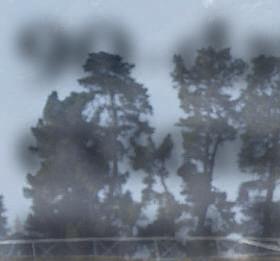




The New Zealand Government recently extended access to 90-day trials for all employers in New Zealand to use when hiring new staff
However, there is one notable category of employees who are exempt: those hired under the Accredited Employer Work Visa (AEWV) scheme.
We spoke to Employsure’s advice team to find out more about AEWVs, being an accredited employer and the law around 90-day trials.
Q. What is an Accredited Employer Work Visa?
AEWVs are temporary work visas that allow skilled migrant workers to work for up to three years for accredited employers in New Zealand in industries where there is genuine skill or labour shortage.
An AEWV is an opportunity for international workers to get involved in New Zealand’s world-renowned agricultural industry, especially in dairy farming, sheep farming,viticulture and horticulture
What makes this visa particularly
attractive is that it is not only a chance for people to hone their skills internationally, be paid a fair wage and work in a country with incredible landscapes; it facilitates longerterm skilled positions and a pathway to permanent residency.
It is common for Kiwi businesses in the agricultural sector, especially dairy farms, to fill skills gaps by utilising international labour through this visa.
An AEWV worker being hired for a role at the herd manager position or higher must produce evidence that they possess the skills and experience necessary for the job.
Migrant workers at this level have a pathway to residency once they’ve worked on a Kiwi farm for at least three years, which is when the AEWV would expire.
Q. What is an accredited employer and how can a business become one?
Accredited employers are businesses that have been approved by Immigration New Zealand to hire migrant workers on AEWVs. There are several requirements for employers to meet to become accredited, including:

Cometoameetinginyourregion
Anationalroundofforestgrowermeetingstodiscusstheproposalforarenewalof theForestLevystartsthismonth.Thisproposalwillbethesubjectofalevy-payer votelaterthisyear. Comealongtoyourlocalmeetingtohearwhat’sproposedand tohaveyourviewsheard.Seehttps://fglt.org nz/formoredetails
Nelson/Marlborough/NorthCanterbury
Tue23April Nelson 10.30am PutangitangiGreenmeadows,cnrMainRd andSongerSt,Stoke
Tue23April Blenheim3.30pmEmergencyManagementRooms, 4WitherRd
Wed24April Hanmer 11:00am HanmerSpringsRetreat,35Hanmer SpringsRd
EastCoast
Tue30April Gisborne 11:00am MidwaySurfClub,40Centennial MarinePde
Tue30April Wairoa 5:00pm WairoaCommunityCentre,33MarinePde
Wed1May Napier10.00am QualityInn,311MarinePde
Thur2MayMasterton10.30am MastertonClub,BoddingtonRoom, 98ChapelSt
Thur2May Wellington 5.30pm WellingtonClub,88TheTerrace
5.30pm

■ Paying workers at least the New Zealand median wage unless the role is on an exemption list;
■ Attempting to hire New Zealanders for the role first for at least two weeks – Farm Source Jobs is a great resource;
■ Having a good track record of employing migrant workers fairly and ethically.
Any business that is looking to become accredited by Immigration New Zealand should seek expert advice before embarking on the process as there are many conditions in the fine print, which can be overwhelming.
Q. What is the law around AEWVs and 90-day trials?
In October last year, a major change was made to the rules surrounding 90-day trial periods for workers hired on an AEWV –these workers were no longer able to be employed under the 90-day trial.
The aim of this law is to provide greater protection to migrants who often pack up their lives to come to New Zealand, ensuring they have ongoing job security and financial stability once they arrive.
Q. What should accredited businesses consider when hiring AEWV workers?
Hiring an AEWV worker should be a longterm decision and not one that is taken lightly or hurriedly – without the chance to assess a worker’s suitability during a 90-day trial period, the stakes are higher to pick the perfect candidate.
Enacting a rigorous selection process during recruitment will help employers to ensure that applicants truly have the skills and experience needed to perform the role.
Accredited agricultural businesses that already employ migrant workers on an AEWV should review their employment agreements to ensure they don’t include a trial period.
Ultimately, the law preventing accredited employers including 90-day trials in job contracts with AEVW staff protects the rights of migrant workers in New Zealand.
By complying with the legislation and making strategic adjustments where needed, accredited employers can continue to manage a productive workforce, while demonstrating their commitment to fair and ethical employment practices. ■





Safer Farms wants to hear your stories to help prevent accidents on New Zealand’s farms,
Owrites Lindy Nelson.ne of the key questions we faced when developing the Farm Without Harm strategy was – who do you turn to help design harm out of New Zealand’s farming culture? And the answer was right there in front of us – farmers themselves.
There can be no better people to provide the knowledge and insights for Safer Farms’ industry-led work to tackle the unacceptable level of injuries and fatalities from accidents on New Zealand farms.
This is why we launched a recent drive to encourage farmers to share their experiences and tell us what was working for them. What are they doing to make their farms safer places to live and work?
Safer Farms’ Farm Without Harm campaign is a whole-of-sector and whole systems approach to design preventable harm out of New Zealand’s farming systems.
It’s about creating practical solutions by farmers, for farmers – which is why we need insights direct from the people who drive the farm vehicles, work with the livestock, do the spraying and fencing or oversee the people who carry out that work.
Our focus right now is on farm vehicles It’s a high harm area, particularly with quad bikes.
In launching the call for stories, we wanted to hear from those who know farm vehicles best – farmers. We asked for their accounts, first-hand and unfiltered, their experiences, and the lessons that farmers have found help keep them and others on the farm out of harm’s way
For some, it’s been changes they have made to their practices or their farm’s safety culture as a result of an accident or close call themselves.
For others, it has been changes they have made as the result of others’ experiences. As a farmer myself, I think all of us will know of someone in the sector who has suffered a workplace accident.
Just as an example: Sarah Smart, an Otago dairy farm manager, was severely injured in a quad bike accident. She recently shared with her story with us Sarah said she’s now much more mindful, careful and focused on the machine and her surroundings when using farm vehicles. But she always reads other people’s stories now too.
“Anyone new that comes to the farm, I show them my scars – it’s other people’s stories that hit home. That’s what’s relatable.”
We learn from shared experience and that is what makes accounts like Sarah’s and other farmers so

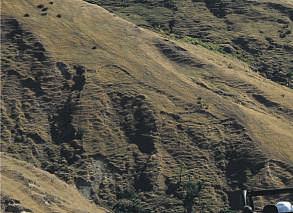
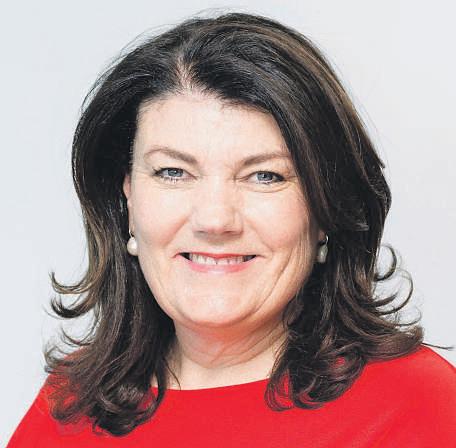
important to the work we are doing.
As in Sarah’s story, vehicles have to be a key focus when we look at designing harm out of our farm culture. When someone dies as a result of a farm accident, a vehicle is almost always involved. From 2019 to 2023, there were 22 quad bike-related fatalities. Most involved rollovers and steep grades An incorrect driving position was a leading cause
When the quad bike Sarah was riding went over a steep bank, she was thrown out of it and broke her collarbone and suffered multiple breaks to her pelvis from the violent impact with the ground. She also suffered several breaks to her thumb when the bike came down behind her and landed on her hand.
Sarah knows she was just an arm’s length away from not being here to tell her story – and she’s sharing it now, with her message about the need for planning, mindfulness, managing fatigue and not taking for granted the risks involved in the machines we “whip around on every day”. She’s doing that to prevent others suffering a similar life-changing event.
So, this is a call to action. Like Sarah, please continue to tell us and others your experiences and the lessons you have taken from them.
By sharing your relevant and practical knowledge and insights, you will be helping to bring a broad range of voices to the table to offer solutions for meaningful change ■
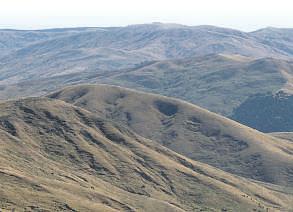



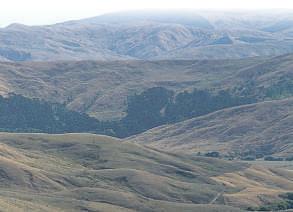
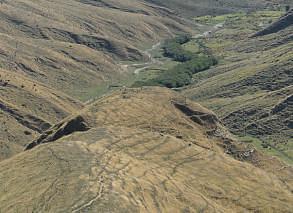




















Ayear after winning the 2023 Auckland/Hauraki Dairy Trainee Award Rita Jeffrey is celebrating the recognition of friend and young trainee, Emma Williamson, who won the 2024 title in the same category.
“Emma won this year which was welldeserved. She’s a good farmer and she knows what’s what.”

As part of winning the award Jeffrey has been mentoring other entrants into the Dairy Trainee Award in her region She encouraged Williamson to enter the awards and supported her through the skills process because she believed in her.
Williamson trained in sheep and beef through Taratahi Agricultural Centre and worked as a shepherd for a few years as well as getting a diploma in early childhood care and education
She recently gained experience working at Donald’s Farm, a notfor-profit educational dairy farm in Auckland and says farming is a passion for her. She entered the awards programme to take herself out of her comfort zone and meet like-minded people.
“I see myself using new research in the future, improving the quality of milking and discovering what gets the best benefits from the farm There’s so much development in animal health and reproduction, too.”
Jeffrey grew up in Matamata around race horses but as a teenager she got a job relief milking before school and has never looked back She cares deeply about her cows and takes pride in the fact that she gets to know her herd individually.
“It’s what gets me up in the morning, the cows are waiting and they rely on me The best part is when your cows are happy and healthy and milking well. Happy cows, milk in the udder, suns out.”
Koch were 2019 share farmer winners for Auckland/Hauraki and are still involved on the dairy awards committee.
“They were an inspiration,” she says. “It was a given I would enter Jeffrey says her award was acknowledgment that she was on the right track. “It’s nice to have that pat the back every now and th recognition and it feels good.”
Jeffrey has many plans She would like to buy a herd the next couple of years.

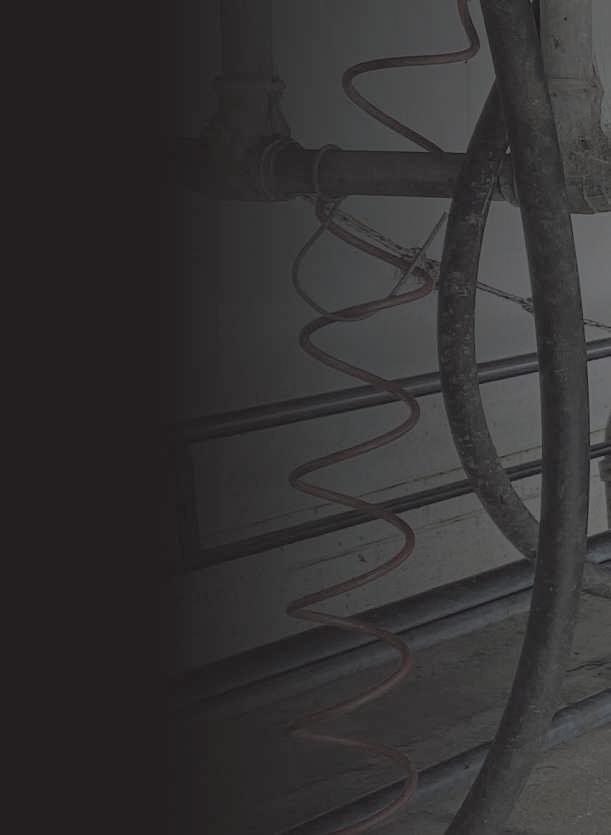
Jeffrey has been part of NZ Young Farmers and says the club supports each other to enter the awards. She is concerned that young people are put off working in the industry by a perception that farmers are lonely but the club has been a great place for social connection
“I think that there is a stigma that farmers are isolated, that you stay on the farm and never get a holiday. But I am probably the most social I have ever been. I didn’t know anyone in this town and now I have something on nearly every night.”
Last season Jeffrey moved to Patetonga where she is 2IC for a 330 cow farm, running two herds and milking twice a day. Her bosses Sarah and Ethan



“In 20 years time I’d lo a couple of farms running and employ people so I can give them the opportunities I had. I won the lotto with my bosses last year. I want to give people the chance that I got
“The big goal is to breed animals I’m really proud of. I want to breed cows that people look at and say ‘those are good cows’.”
She is keen to enter the awards again in the future
“It’s not about being the best at everything but the way you approach new scenarios, asking questions is a big part.” ■
Below:Thewinnerofthe2024Auckland/ HaurakiDairyTraineeoftheYearcategory, EmmaWilliamson,seesherselfusingnew researchinthefuturetoimprovefarming practices.
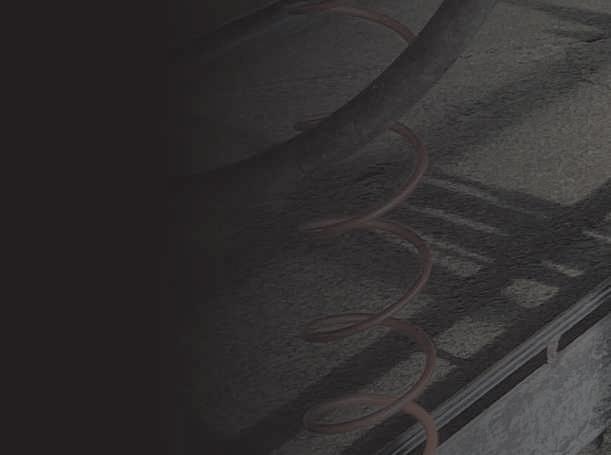

“
I want to breed cows that people look at and say ‘those are good cows’.
Rita Jeffrey, 2023 Auckland/ Hauraki Dairy Trainee Award winner

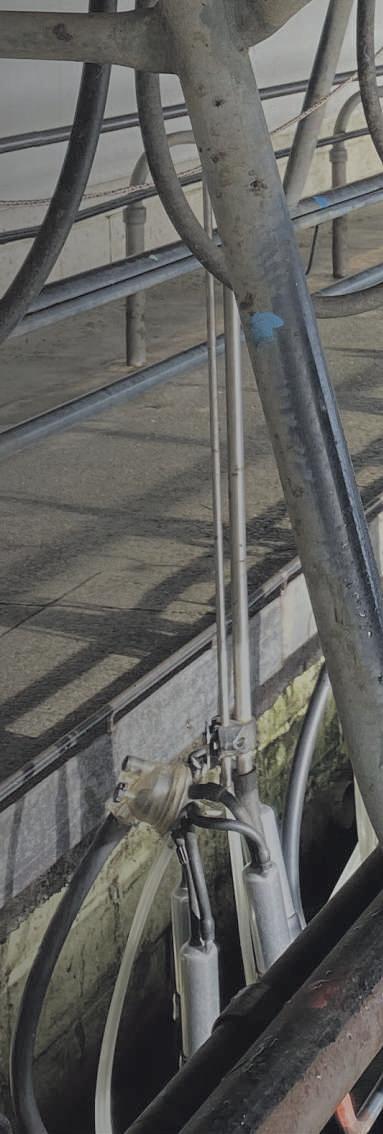

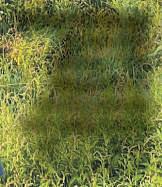



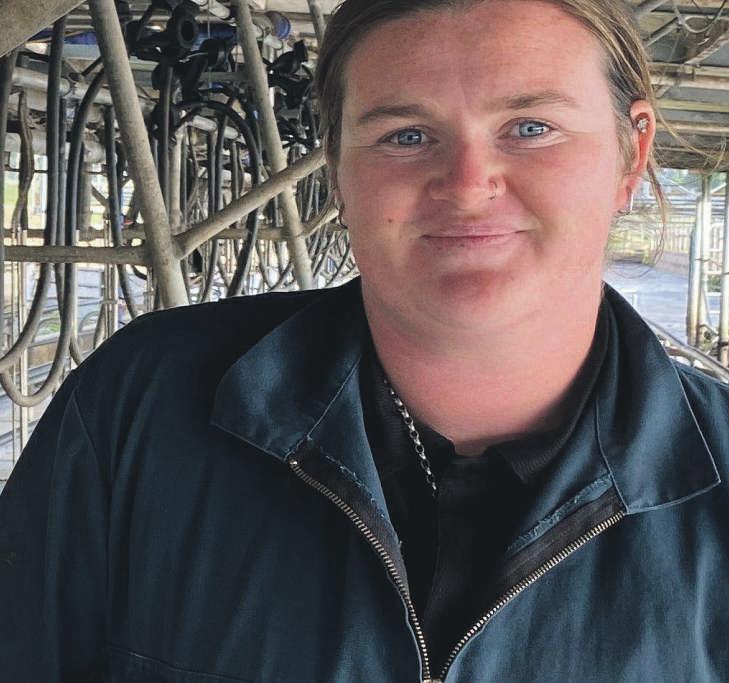


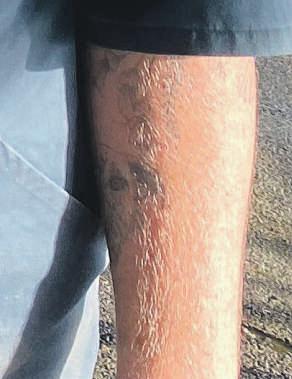







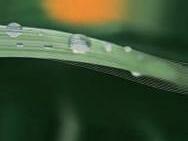


























It is not just inmates who reside at Christchurch Men’s Prison. It’s also home to livestock, including 8000 pigs.
The Christchurch Men’s Prison piggery is not just a producer of premium free-farmed New Zealand pork nor is it just a place where offenders are housed to serve time. It is also a place where men in prison do meaningful work and build new employment and life skills
The 8000-head piggery covers some 100 hectares of the 800ha farm of mixed livestock and cropping that surrounds the prison on the western outskirts of the city.
While the farm and piggery are run as commercial businesses, it has a very different focus to normal farms with its workers being prisoners and its staff farm instructors.
“We are not a normal farm and have different goals from your usual farming operation,” principal instructor Warren Chilton explains.
“We are primarily about rehabilitation, providing men working and learning on the farm with an opportunity to earn qualifications and learn work aptitudes and skills that will support their future employment in New Zealand’s primary sector, as well as their wellbeing.
“You’re trying to better someone’s life. Very few of our prison farm workers have ever worked on a farm or with animals and many of them take to it well enough to see this as a future career.”
Chilton runs the entire farming operation at the prison, but it is pig farming that brought him to his role at Christchurch Men’s Prison.
A third-generation Canterbury pig farmer, he decided to take on the role at the prison piggery some 25 years ago at a time when it was a small operation with sows housed indoors
He had always wanted to farm pigs outdoors and the prison farm offered ideal topography with flat, light and freedraining soils.
Over the years, the prison pig farm has become one of New Zealand’s largest free-farmed piggeries, with two operations, and finishing the progeny of about 900 sows.
It is one of several free-farm operations in the country, where the sows are outside and the growing pigs are housed



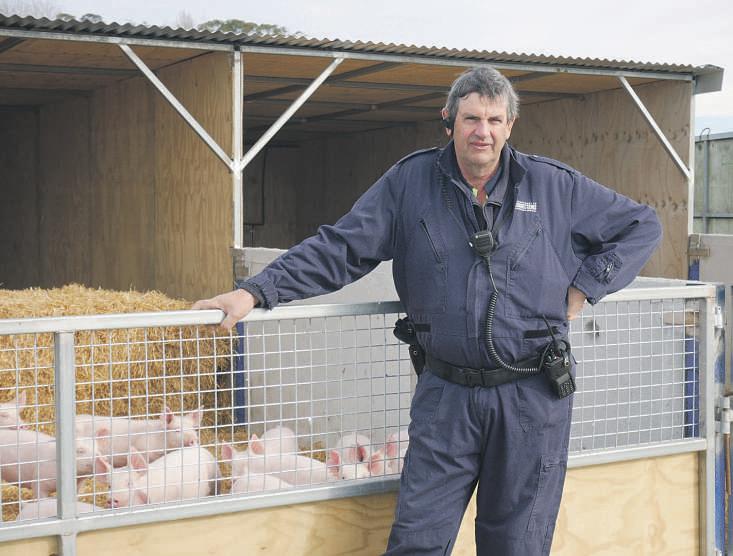





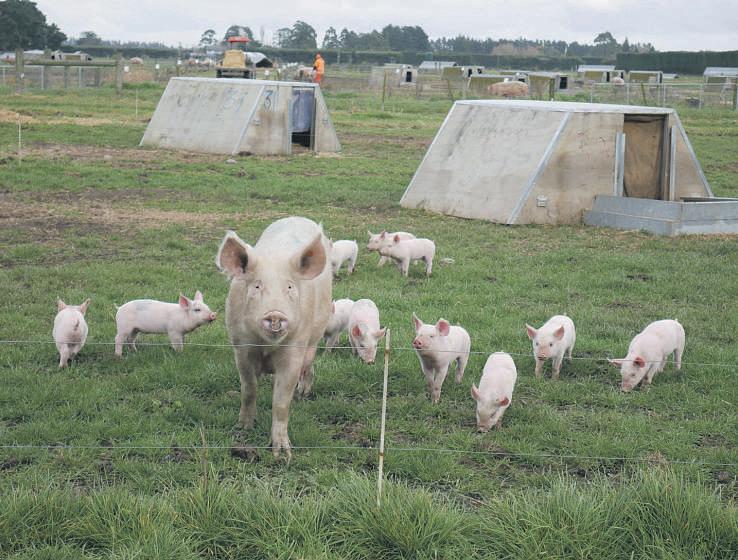

in eco-barns, micro barns and ‘cosy kennels’. Most of this accommodation has been built at the prison by men engaged in its industry training programmes.
The piggery also has other impressive
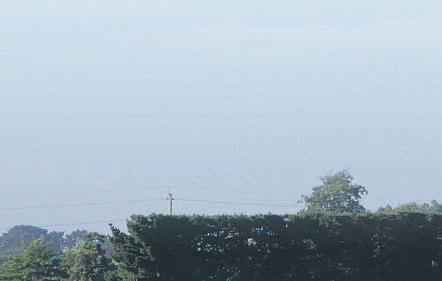
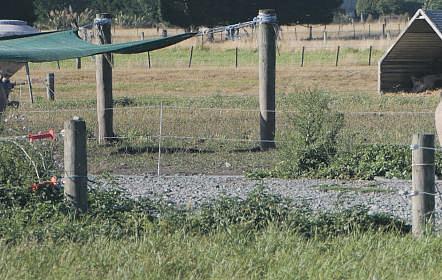
is used in the wider farm’s cropping operations. Likewise, leachate from the compost pads and shed sumps is spread evenly across farm paddocks, protecting groundwater.
Pig breeding units are run in rotation to manage accumulated nutrients from pig manure and give the land a break.
“We are pretty proud of what we have done on the piggery over the years,” says Chilton.
“We have seen an increase in demand for locally grown product as people want to know where their food comes from.”
Chilton says pig farms are also audited in New Zealand to very high standards and the prison farm is very proud of both the quality of their product and animal welfare record.
“We are very focused on our goal to train and inspire men in the prison for future roles in agriculture and also to run an environmentally responsible and animal welfare-conscious operation.
“At any one time, there are around 16 prisoners working in the piggery where they are trained in NZQA level qualifications, qualifications which are transferable across the primary sector.”
Prison instructors, who predominantly come from a farming background, are further trained in delivering these qualifications and embedding literacy and numeracy skills into the day-to-day running of the farm.
Chilton says working with animals can also make a massive shift in the men coming from the prison.
“We find the demeanour of the men changes on the farm.
‘‘Animals are very non-judgmental. They don’t care about how you got where you are – just how you treat them today.
‘‘So we find they respond well to the men and the men respond well to having an animal to care for.

sustainability credentials. All sawdust for the bedding in the eco-barns comes from timber processing, another of the prison’s on-site industry training operations. Once used, it’s turned out onto concrete pads to break down and

‘‘This is the case for all the animals, but especially the pigs which are quite intelligent animals.”
He says quite a few of the men go on to employment in the pig industry, to other agriculture roles or to other industries where they are using the work aptitudes of farm labouring and the transferable skills they have learned on the farm.
“It’s always heartwarming to hear the success stories of men who have developed an interest through working and learning in our prison industries and now have a positive and constructive life and employment in the community,” he says “Farming is in my blood and I love seeing how it positively impacts and changes these men and their futures.” ■
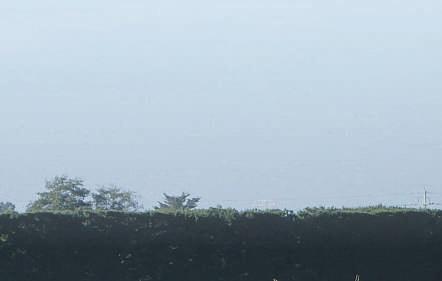


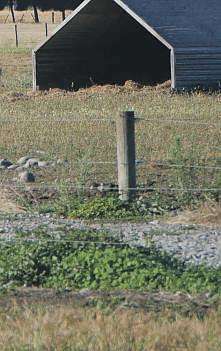



Farmlands says its acquisition of animal nutrition business SealesWinslow will benefit farmers by resulting in improved operating efficiencies, reach and capability.
By Sonita Chandar.The Farmlands Co-operative purchase of SealesWinslow, the animal nutrition business currently owned by Ballance Agri-Nutrients, will go ahead following Commerce Commission approval.
The purchase will bring Farmlands’ animal nutrition businesses NRM and McMillan together with SealesWinslow, increasing Farmlands’ feedmanufacturing footprint into the North Island. The merger of these businesses will deliver improved operating efficiencies, reach and capability.
The approval represents a big win for New Zealand farmers
“This acquisition creates the only co-op-owned animal nutrition business in New Zealand,” says Farmlands head of strategy and nutrition Scott Brown.
Farmlands’ animal nutrition business includes two feed mills in the South Island. These brands have seen growth through their product range in poultry, equine and other product ranges during the current tough trading environment for farmers
“This means that we’re in a good position to incorporate the SealesWinslow’s business and three feed mills into our existing business in a way that gives us national scale, and therefore the efficiencies needed to deliver cost-effective palletised precision nutrition for New Zealand farmers,” Brown says “We’re already moving significant volume into the SealesWinslow mills, and are looking to bring in further bagged volume, which can really leverage those assets and work to bring down costs further for our farmers.”
By maintaining ownership of the feed mills within the New Zealand co-operative, local farmers will retain ownership of the food production supply chain The deal also supports Farmlands' commitment to rural communities, as it boosts the company’s national presence, with five mills spread across key regions in New Zealand.
“We’re really pleased that these mills are staying in our own country’s co-operative ownership – these feed mills source grain from New Zealand arable growers, they’re processed by New Zealanders at the feed mills across the country, and the product is sold to New Zealand farmers to support their ability to grow premium-quality produce,” Brown says Farmlands chief executive Tanya Houghton says SealesWinslow is a great match for Farmlands, combining a co-operative heritage, strong feed assets and expertise.
“Bringing our combined assets, expertise and market reach together, offering three leading animal nutrition brands, we’ll increase our ability to create

long-term benefits and value for shareholders and customers.”
Houghton says animal nutrition plays a crucial role in the health, productivity and welfare of livestock.
“Farmers in New Zealand are increasingly recognising the importance of animal nutrition. By providing balanced diets to their livestock, they can prevent diseases, improve productivity, and reduce environmental impact. This not only benefits the animals and the farmers but also contributes to the sustainability of the entire agricultural sector.”
The combination of Farmlands’ expertise in bulk and retail feeds and SealesWinslow’s ruminant business will offer Farmlands the chance to leverage different expertise and skills, making it easier to diversify the co-op’s offerings across the animal nutrition sector.
“We’ll be better able to partner across the industry to test new technologies and ingredients, developing bespoke recipes, and investing in decision-making tools such as SealesWinslow’s Ruminix tool to support farmers to maximise returns,” Brown says.
The deal is a good example of two farmer-owned co-ops working together to keep New Zealand farmers’ interests at the heart of their strategies.
“The key thing to note is that SealesWinslow will continue to produce its own leading brand of nutrition products and service its existing customers as it always has,” Houghton says.
“We’re very excited to be able to welcome the SealesWinslow team into our Farmlands whānau We’ll be one huge step closer to achieving our goal of being the No 1 supplier of animal nutrition to New Zealand farmers. We’ll offer our customers the most comprehensive range of feed solutions in the country, showing our commitment to the industry, stakeholders and customers.”
The completion of sale is planned for



















According to the report, there were 104 fewer farm sales (-32.3%) for the three months to February 2024, compared to the same period in 2023. This decline in transactions is part of a broader trend, with overall farm sales totalling 218 in the three months to February 2024, down from 236 in January 2024 (-7.6%) and 322 in February 2023.
REINZ rural spokesperson Shane O’Brien commented that the lowvolume of sales was a continued trend over the preceding nine months as buyers took a cautious approach to buying land in all sectors across New Zealand.
“The lowervolume of sales was anticipated as buyers reacted to higher interest costs, environmental compliance, and poor farm product prices.
“The very dry conditions across much of the upper South Island is also impacting buyers and sellers as they focus on on-farm
activities during these months.”
In terms of annual figures, 942 farms were sold in the year to February 2024, marking a decrease of 436 from the previous year. The decline was particularly pronounced in the dairy sector, with 39.8% fewer dairy farms sold over the same period.
O’Brien commented that the median sale prices showed that the market fundamentals were sound.
“Although the market is sound, sellers need to realise that there isn’t the depth of buyers or buyer confidence of the preceding two years. Buyers will need to position their properties in the market accordingly with that in mind.
“While there is some confidence returning to the dairy sector on the back of the lift in farmgate milk prices, this is yet to flow through to a noticeable increase in sales activity in the dairy and dairy support sectors.”
Despite the decrease in sales volume, the
median price per hectare for all farms sold in the three months to February 2024 was $28,140, reflecting a modest decrease of 8.5% compared to February 2023.
O’Brien, commented on the market dynamics, stating that in February 2024, finishing farms accounted for a 27% share of all sales, followed by grazing farms at 24%, dairy farms at 21%, and arable farms at 7%. These four property types collectively accounted for 79% of all sales during the period.
The report also highlighted regional variations, with Northland recording an increase in farm sales, while ManawatuWhanganui and Waikato experienced the biggest decreases.
The REINZ All Farm Price Index, which adjusts for differences in farm size, location, and farming type, decreased by 2.4% in the three months to February 2024 compared to January 2024, and by 10.6% compared to February 2023. ■

Key highlights by farm type
Dairy farms:
■ Median sales price per hectare: $38,620
■ Median dairyfarm size: 130 hectares
■ Median milk solids price per kilo: $38.21
■ REINZ DairyFarm Price Index: Fell by 1.9% compared to January2024
Finishing farms:
■ Median sales price per hectare: $35,660
■ Median finishing farm size: 37 hectares
Grazing farms:
■ Median sales price per hectare: $13,230
■ Median grazing farm size: 133 hectares
Arable farms:
■ Median sales price per hectare: $218,175
■ Median horticulture farm size: 9133 hectares






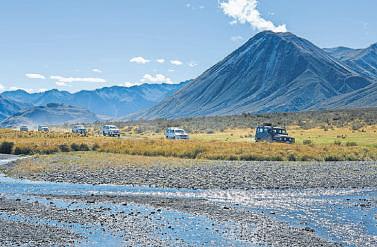














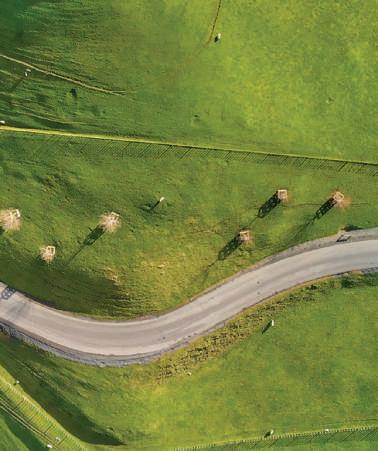





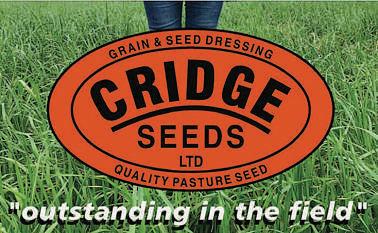
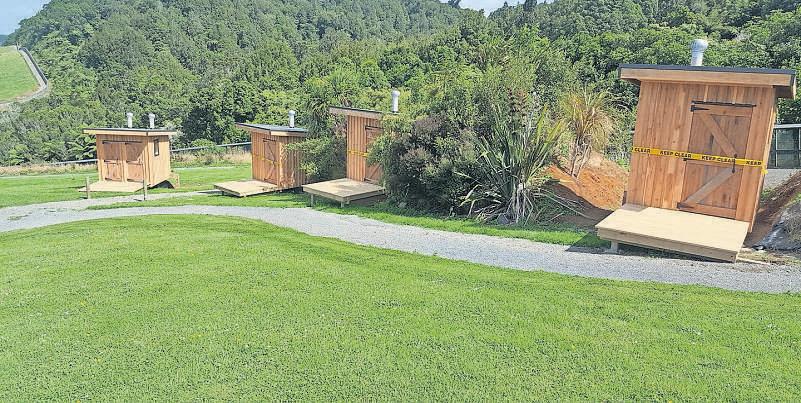



































With forecasts for this financial year having been revised down since October, Beef + Lamb New Zealand says farmers should expect greater challenges ahead.
Beef + Lamb New Zealand’s MidSeason Update 2023-24 confirms that times are tough, and farmers will have to continue to dig deep to stem what looks like widespread cash losses in the sheep and beef sector for the 2023-24 financial year.
this cannot compensate for lower per head prices and unavoidably high costs.
Farm profits are forecast to be down 54% to an average of $62,600 per farm.
This is a 67% fall in farm profit from the 2021-22 year to profit levels not seen since the 1980s, except for during the global financial crisis.
and mutton are forecast to be down 4.8% and nearly 20% respectively on last year.
savings. This is especially true for farmers with relatively high debt levels
“They’re also looking to maximise income and taking stock to heavier weights and where feed allows, this is commonplace.”
The outlook for this financial year has worsened significantly since our forecasts in October, because there has been no recovery in China, and Australian exports of red meat have been bigger than originally forecast.
An excellent lamb crop last spring has meant there are more lambs to sell, but

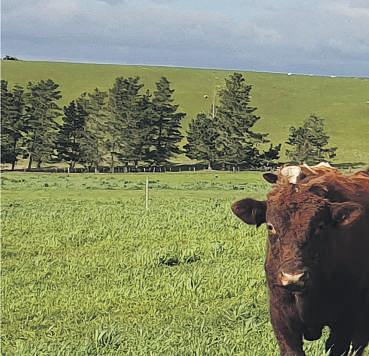

China’s economic recovery remains slow, resulting in decreased demand and lower farm-gate prices, especially for lamb and mutton The increased supply from Australia into international meat markets is also contributing to a global reduction in prices. Both of these dynamics are not expected to change much before the end of the season.
There are, however, some positive trends. Beef has held up much better, driven by significant demand out of the United States as it rebuilds its herd postdrought. All Beef is forecast to average $5.15 per kgCW for the season, which is 2.9% down on last year, but 2% higher than the five-year average.
Demand for lamb in Europe and the United States has also been strong and this is expected to continue for the rest of the season.
Interest rates are a significant issue and relief from a fall in interest rates this season is uncertain, so the sector will need to draw on its traditional ability to weather cyclical tough times and on its tenacity.

As a result, the forecast for lamb and mutton prices for the season has been revised downwards. The annual weighted average all classes lamb price for 2023-24 is estimated at 651c/kgCW1, down 12% on 2022-23 and 13% lower than the five-year average.
The annual weighted average all classes mutton price for 2023-24 is estimated at 241c/kgCW, down 34% on 2022-23 and 49% lower than the five-year average.
New Zealand’s export receipts for lamb
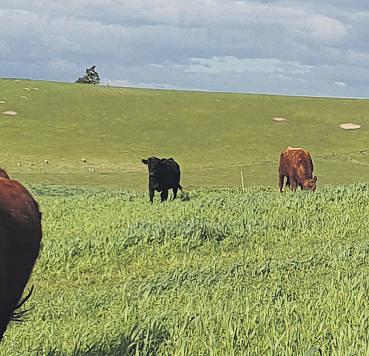
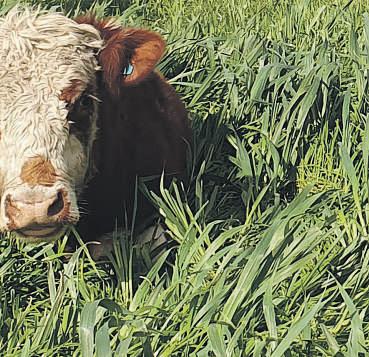

Certain farm classes, such as high country, hard hill country, and South Island hill country, are hardest hit in terms of profitability due to their heavier reliance on sheep revenue. The East Coast region, still recovering from Cyclone Gabrielle and ongoing wet weather setbacks in 2023, is projected to have the lowest regional profitability.
Sam McIvor, B+LNZ chief executive, says: “Input costs remain stubbornly high. We know farmers are feeling it, many have already worked hard on cutting costs and my conversations indicate they’re leaving no stone unturned to find additional

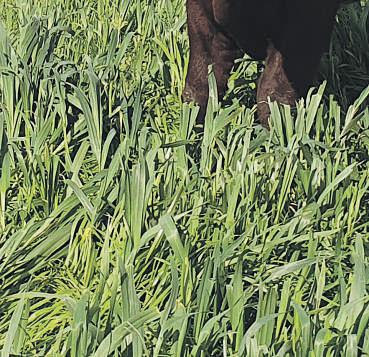
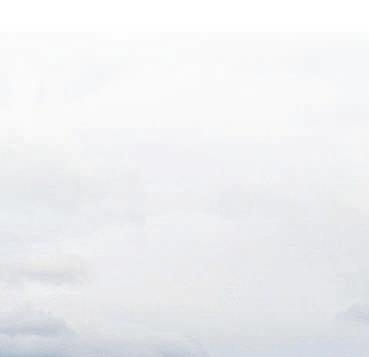
Farmers should be talking to their accountants and bank managers about tax planning and cashflow management. “I would expect bankers will be working to support farmers during this tough period, as the sector’s longer-term prospects are strong and it will recover,” adds McIvor.
Demand in the medium term for New Zealand’s free range, grass-fed, antibioticfree and hormone-free, low-emissions red meat is absolutely positive but in the shortterm, particularly for sheep meat, it’s very challenging.
Driving productivity, intensely analysing cost of production, learning from each other, and utilising the right external advice will all be critical inputs to successfully navigate these tough times. ■

